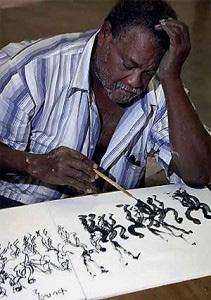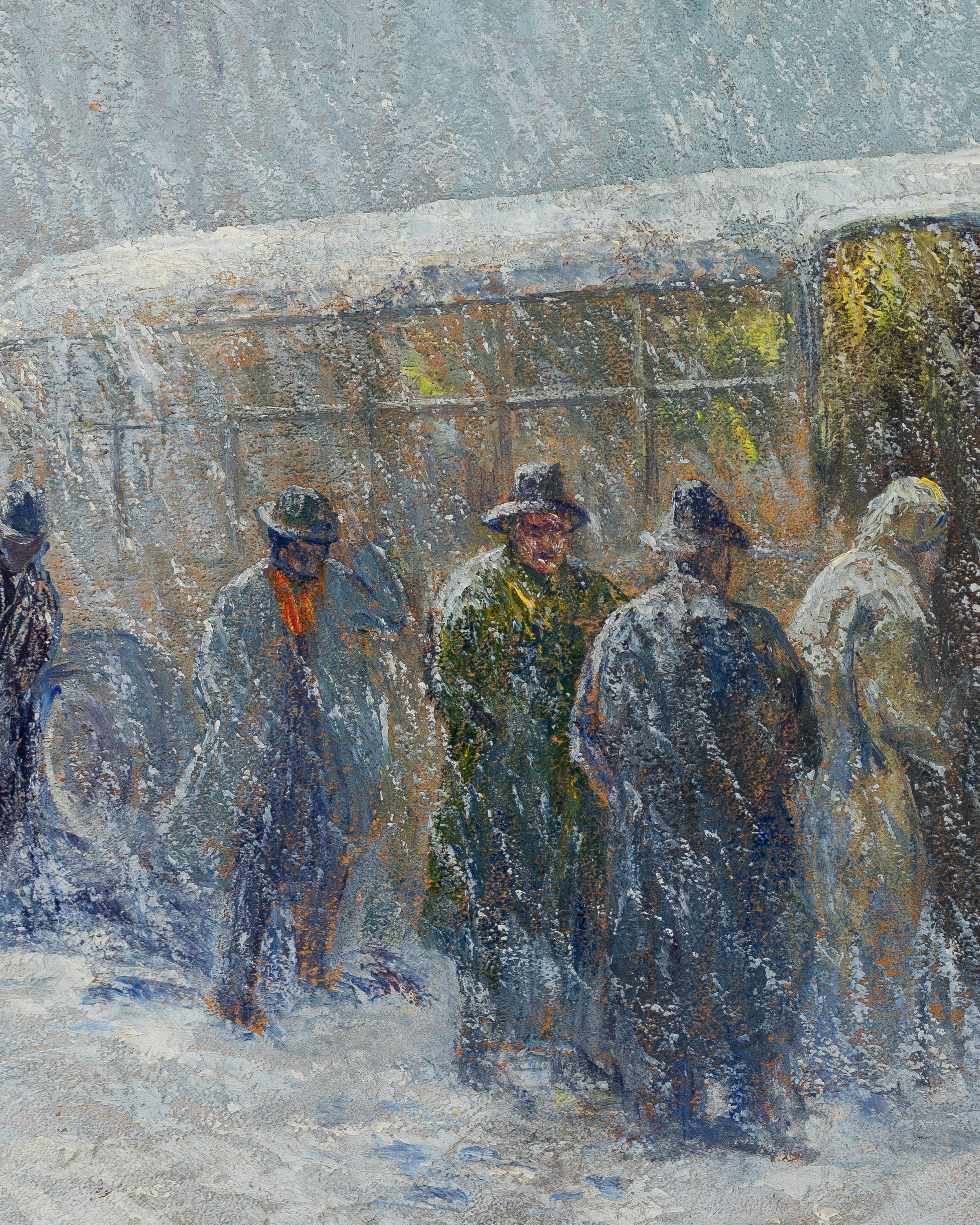BLACK ART AUCTION
SATURDAY, NOVEMBER 19, 2022 AT 11 AM EST



SATURDAY, NOVEMBER 19, 2022 AT 11 AM EST
The following publication is meant to provide biographical information and photographs of the artists (when available) whose work is included in this auction.
We are continually adding to this, so you will find both additional artists listed as the days go by and more in-depth information about the artists already listed. So, please check back often!
It is our mission to provide as much information about the artists we sell as possible, and we are continually mining any and all available resources to do this. If you have a question about an artist —even if unrelated to the specific work included in the sale, please do not hesitate to ask us. We are always learning right along with you, and I believe that act of discovery makes our interaction with the art so much more enjoyable.

Abiola was born in Nigeria and spent much of his early life engaged in the artistic process, which culminated at the School of Art at Oyo State College of Education, Nigeria. Abiola went on to work in Africa and Europe before making a home in Chicago, where he continues to live and work as a painter and sculptor, using a variety of materials. Abiola describes himself as an expressionist.
"My works provoke contemplation of the recent past, the fleeting present and the unknown future. I exploit sculptural art as a translational form for representational and expressionistic paintings. Delving into multiple layers of meanings, I create mystic auras and positive vibrations. I want viewers to enter a different realm of consciousness, a synchronistic and revelatory world of energy, spirit and emotion where spontaneous improvisation, music and poetry are the languages spoken.
I am stimulated by diverse concepts and subjects but focus on the intensity of the creative process. I am in touch with the intangible as well as sensory perceptions, making feelings and memories my greatest resource. The bond that unites the diversity of my interests is also constant in my life; a need to achieve a balance between discipline and abandon are the key recurring components of my work that mirror my life.
My unique style is “The Green Revolution Artist.” I try to make my environment cleaner by collecting soda cans on the street, shredding them manually and then using them for my creations. I employ deconstructivist and re-creationist forms to complement the saturated colors in my work.”
His work has been shown in Diasporal Rhythms: A Ten Year Love Affair with Collecting Art of the African Diaspora, Reva and David Logan Center for the Arts, Chicago, IL, 2013; The Art of Culture: Evolution of Visual Arts by African American Artists - The Last Fifty Years, ETA Creative Arts Foundation, South Side Community Arts Center and South Shore Cultural Center Fine Art Gallery, Chicago, 2003; Beyond the Canvas: ABIOLA, Thelma Harris Gallery, Oakland, CA, 2004; and the Taking Flight, Series II, Thelma Harris Gallery, Oakland, CA, 2005.

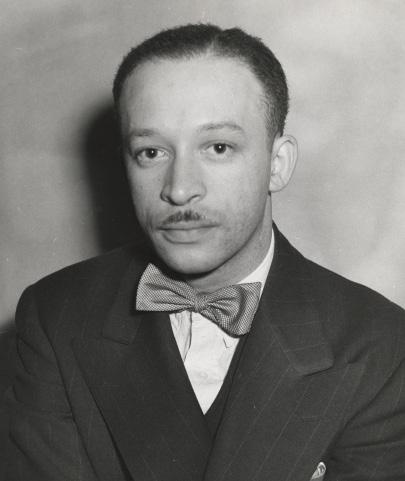
Painter, sculptor, illustrator, muralist, and educator Charles Alston was born in 1907. After his father’s death, his mother remarried Henry Pierce Bearden (Romare Bearden’s uncle) and the family moved from North Carolina to Harlem. Alston painted and sculpted at an early age and received formal instruction at Columbia University. While attending college, he taught art at the Utopia House and served as a mentor to a young Jacob Lawrence. In 1934, he co-founded the Harlem Arts Workshop, which eventually came to be known as “306.”
In 1936, Alston accompanied Giles Hubert, a Farm Security Administration inspector, on a tour of the South, where he sketched and photographed rural life. In this capacity, he was able to observe and record places and people he might not have had the opportunity to do so by himself. They traveled through Alabama, Mississippi, Arkansas, the Carolinas, and Georgia. When he returned to his studio, Alston had a wealth of material from which to draw. His Family series eventually grew from these experiences.
Alston also become close friends with Hale Woodruff. They had much in common, especially with regards to mural makingAlston had completed his own murals for the WPA at the Harlem Hospital, and Woodruff was completing the Amistad murals at Talledega College. In 1948, the two would collaborate on the murals for the Golden State Mutual Life Insurance Company of Los Angeles.
Together they spent months touring California, studying its scenery, people, history, and problems before creating two murals.
Alston’s style grew more abstract by the 1950’s, but he never completely abandoned figurative studies. His figures characteristically maintain a sculpture like quality influenced by African sculpture. His subjects were derived mainly from the experiences of his life and time. Alston states,
“As an artist . . . I am intensely interested in probing, exploring the problems of color, space and form, which challenge all contemporary painters. However, as a black American . . . I cannot but be sensitive and responsive in my painting to the injustice, the indignity, and the hypocrisy suffered by black citizens.”
In 1956, Alston became the first African American instructor at the Museum of Modern Art, and in 1963, he co-founded (with Romare Bearden) the group Spiral. In 1973, he was made full professor at the City College of New York.

We’re always talking about color, but colors are also skin colors, and the term colored itself—it all means something else to me. You have to choose, as a black artist, what to make your figures….I find that I almost never paint white people. Butterscotch, brown, or really black—but rarely white. White artists never have to choose…
Amos studied at Antioch College (Ohio), London Central School of Art, and New York University. While still a graduate stu dent, Amos became affiliated with Spiral. Amos worked in painting, printmaking and weaving.
(REF: Gumbo Ya Ya, An Anthology of Contemporary African-American Women Artists, intro by Leslie King-Hammond, 1995)

Amos’s artistic concerns have centered on the politics of gender, race, sexism, and ethnocen trism. Her works across the media demon strate the activist role that imagery can play. Her longtime interest in textile manifests itself through the cloth she incorporates into many of her paintings and prints . Her bound ary-breaking approach h to materials gives lit tle regard to the arbitrary high/low art divide that separates textile arts from painting.
African American Art Since 1950, Perspectives from the David C. Driskell Center, University of Maryland, p. 88.

Born in Madison, Georgia, the son of sharecroppers, Benny Andrews studied at Fort Valley State College (1948-50). After serving in the Korean War with the United States Air Force, he attended the School of the Art Institute in Chicago (1954-58), studying with Jack Levine and Boris Margo. He was generally viewed as an outsider, unyielding to the trends of abstraction at the time he was developing at the Art Institute. His work focused on figurative social commentary depicting the struggles, atrocities, and everyday occurrences in the world, especially in the African American community. In his drawings, paintings, and collages, Andrews continued to pursue representational art, which has been his focus throughout his long career. “Benny Andrews is a remarkable draftsman whose work is characterized by great economy of means,” Patricia P. Bladon wrote in Folk: The Art of Benny and George Andrews. “He infuses his drawings with the same integrity and passion which characterize his large-scale paintings.”
As his career flourished he continued to speak out on the inequalities facing African American artists and helped found the Black Emergency Cultural Coalition with fellow artist Cliff Joseph. He spent 29 years teaching art at Queens College and served as the Director of the Visual Arts program, a division of the National Endowment for the Arts (1982-84). His work received both

critical praise and commercial acceptance. Elected to the National Academy of Design in 1977, he was awarded premier fellowships and exhibited widely in this country and abroad.
Today, his work is found in the collection of many major museums, including the Brooklyn Museum of Art, NY; Detroit Institute of Art; Morris Museum of Art, GA; Hirshorn Museum, Washington D.C.; and the Metropolitan Museum of Art, NY.
Most recently, his work was featured in the exhibition Soul of a Nation: Art in the Age of Black Power. His work is currently on view in the exhibitions War Within War Without: MOMA’s Permanent Collection, NY; Seeing Differently: The Phillips Collects for a New Century, The Phillips Collection, Washington DC; and 50 x 50: Stories of Visionary Artists from the Collection, San Jose Museum of Art, CA.

Artist and educator, Ralph Arnold, is best known for his masterful collages and assemblages which he began making in the early 1960’s. The theme of gender and its role in social and individual identity appears frequently in Arnold’s work.
Arnold was born in 1928 and raised both in Knoxville, Tennessee and Chicago. His interest in art began as a teen at Blue Island High School (now Dwight D. Eisenhower High School) in Chicago where he worked in the print shop. Here he was exposed to printmaking and working with paper.
Arnold briefly attended the University of Illinois, Urbana-Champaign but left to serve in the army in Korea. When he returned to Chicago, he received his BFA from Roosevelt University. He also attended the School of the Art Institute of Chicago where he received his MFA. He began working as an educator in the 60’s. Arnold taught at the Hyde Park Art Center, Chicago; Rockford College, Rockford, IL; Barat College, Lake Forest, IL; and Loyola University, Chicago, where he served as the chairman of the Fine Arts department.
During his career he was represented by Benjamin Galleries from 1964-1969, Gilman Galleries, and Van Straaten Gallery, all in Chicago, which held solo exhibitions in their respective spaces. Other solo shows included Some Old, Some New, South Side Community Art Center, 1973; The Real and Abstract: The Art of Ralph Arnold, Chicago State University,1982; and Ralph Arnold Unmasked: From Pop to Political, Loyola University, 2012, among many others.
His work was featured in the group exhibitions: Afro-American Artists, 1800-1969, School District and Museum of the Philadelphia Civic Center, PA, 1969; Directions in Afro-American Art, Cornell University, NY, 1974; Black American Artists/71, Illinois Bell Gallery, Chicago, 1971; Contemporary Black Artists in America, Whitney Museum of American Art, NY, 1971; and Violence in Recent American Art, Museum of Contemporary Art, Chicago, 1968. In 2018, the exhibition

The Many Hats of Ralph Arnold: Art, Identity, and Politics was held at the Museum of Contemporary Photography, Columbia College, Chicago.
His work may be found in the collections of the Art Institute of Chicago, Whitney Museum of American Art, NY; Fisk University,TN; and DePaul University, Chicago.
In 2006, the Ralph Arnold Gallery was established at Loyola as a part exhibition/ part workspace in tribute to his advocacy for the arts.
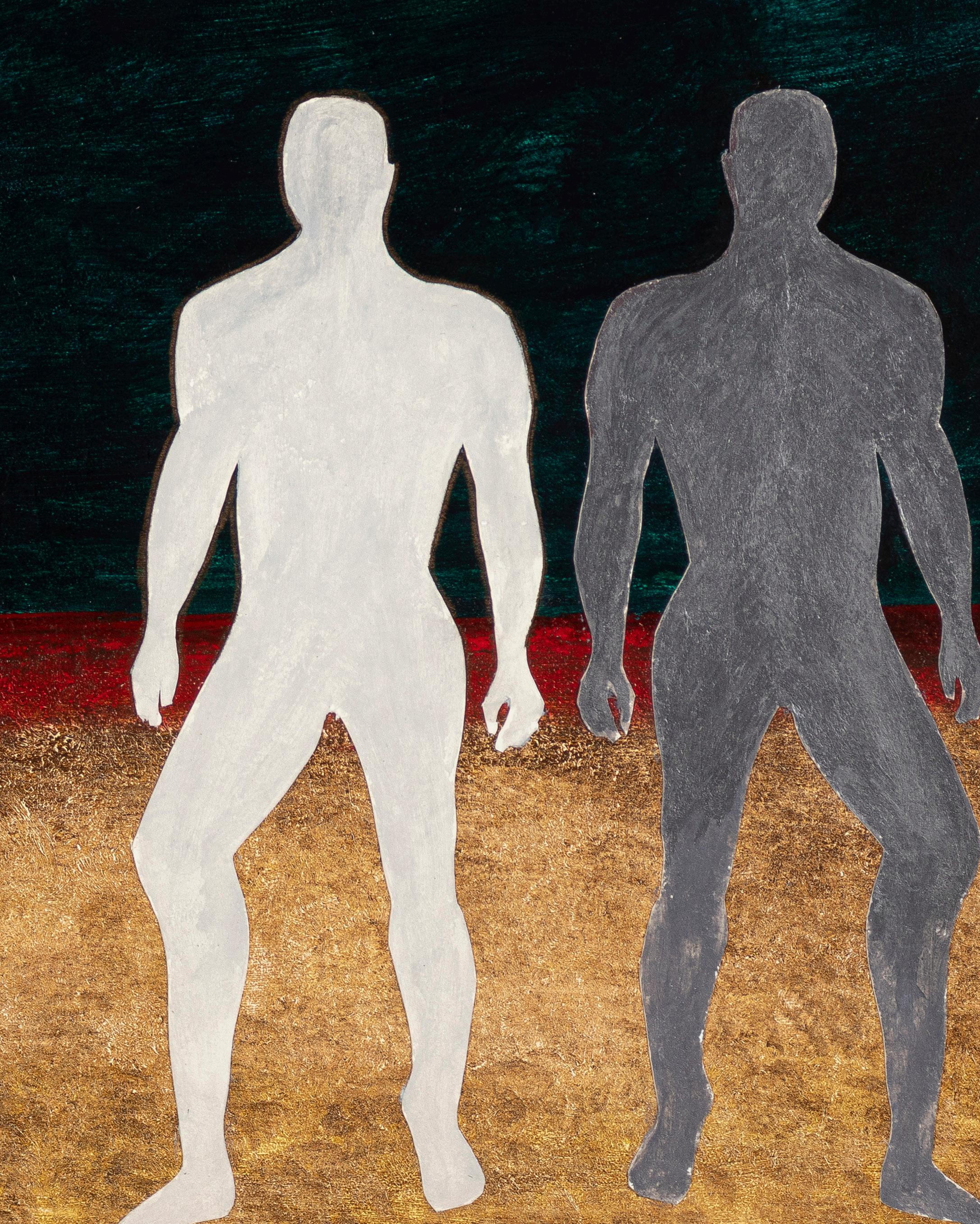
Roland Ayers was a Philadelphia artist. He graduated from the Philadelphia College of Arts (now University of Arts) with a degree in fine art in 1954. His specialties were drawing and watercolor. Ayers was also a poet, and followed the teachings of selfawareness espoused by the Indian writer Jiddu Krishnamurti. He was generally considered a surrealist or magic realist.
Ayers exhibited in Blacks: USA: 1973, and in the controversial exhibition at the Whitney Museum in 1971, Contemporary Black Artists in America.

Herman, also known as "H. Kofi Bailey" and "Kofi X”, was born in Chicago, but grew up in Los Angeles. He studied at Alabama State University, Howard University and University of Southern California (MFA). Bailey was concerned with a pan-African worldview, and as a visual artist believed that creating images of black people would work universally to embrace and celebrate positive attitudes toward black people (in the case of non-blacks) and be self-affirming (in the case of black people themselves). Bailey studied with Alain Locke, Sterling Brown, and James Porter at Howard, and after graduating was closely associated with figures such as W.E.B. Du Bois, Martin Luther King, Jr., and Kwame Nkrumah (Nkrumah was the first Prime Minister and President of Ghana, but he spent 10 years in the United States studying as a young man).
Bailey was best-known for his drawings in charcoal and conte crayon, and the subsequent prints. He exhibited at the High Museum of Art; Spelman College; Delaware Art Museum; and Lewis-Waddell Gallery in Los Angeles.
REF: A Century of African American Art, The Paul R. Jones Collection, Delaware Museum, Amalia Amaki; St James Guide to Black Artists; African American Art and Artists, Samella Lewis, p. 146-147.


Ernie Barnes began his career as an offensive lineman - playing pro football for six seasons with the San Diego Chargers, the New York Titans, and the Denver Broncos. Eventually, Barnes grew disillusioned with the conflict. In interviews he had been known to say that he hated the violence and physical torment of the sport. He proposed that he take up the position of official artist of the American Football League. The owners agreed and with the support of Sonny Werblin, owner of the Jets, Barnes’ work was brought to the attention of art critics who compared his work to that of George Bellows.

Barnes attended North Carolina College as an art major on full athletic scholarship. Ed Wilson, who taught sculpting, had a remarkable impact on Barnes. First, he taught him about the work of the early 20th century African American artists. Then, he taught him how to translate his athleticism on the field to the canvas. Barnes populated his canvasses with elongated forms full of movement and was influenced by the Italian Mannerist painters, as well as Thomas Hart Benton and Charles White. His personal style was accessible and resonated soundly with people. Many of his paintings were found in the homes of major film and television stars and received national exposure through the television and music industries.
In 2019, the California African American Museum (Los Angeles) held a retrospective of Barnes’ work which included art and ephemera documenting his life and career and featured the iconic painting The Sugar Shack.
The North Carolina Museum of History (Raleigh), also held the exhibition, The North Carolina Roots of Artist Ernie Barnes from June 29, 2018-May 27, 2019.
Photo: Ernie Barnes, Self portrait, 1968; Ernie Barnes Family Trust
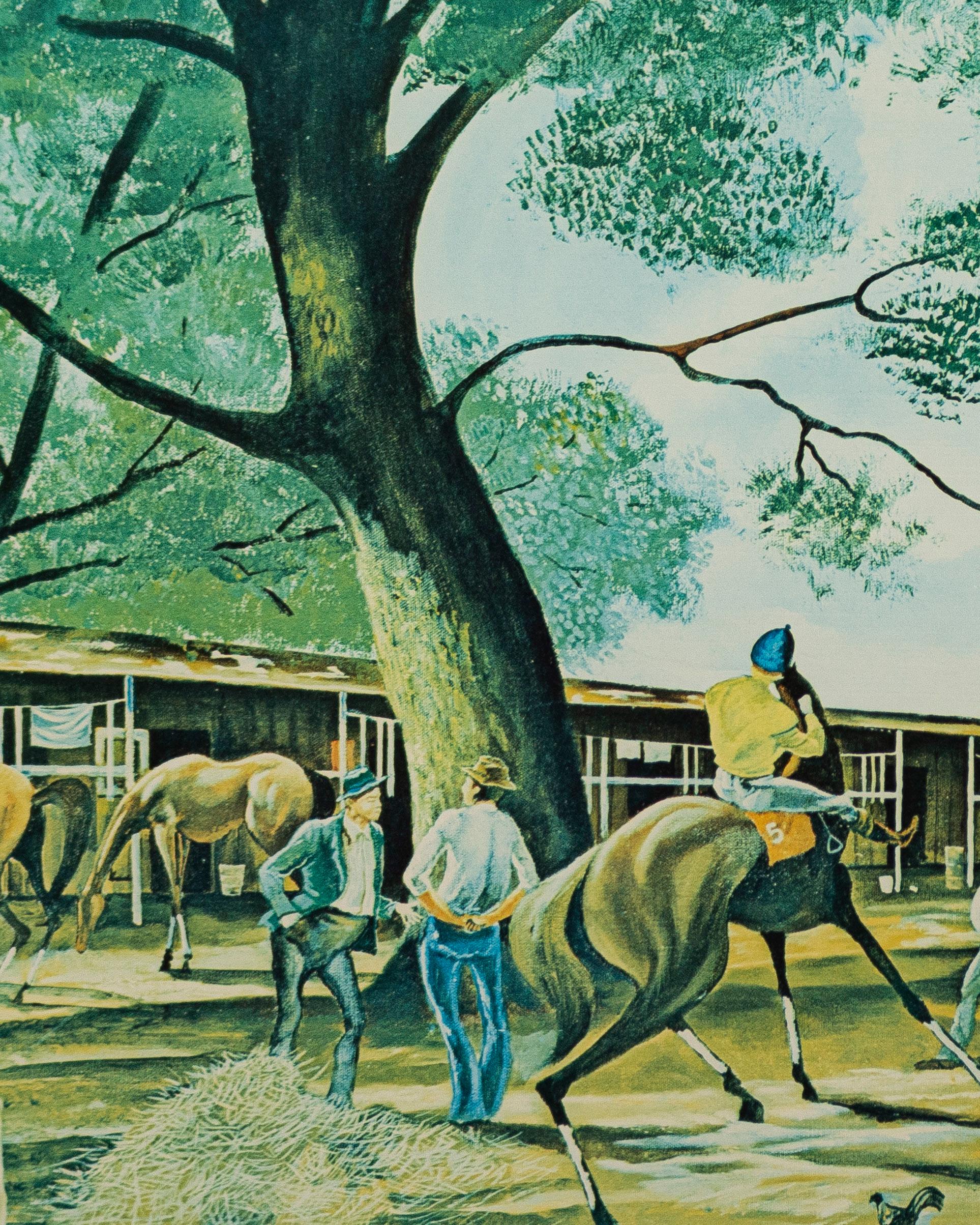
Barthé was born in Bay St Louis, Mississippi. He left in 1924, headed for Chicago to study at the Art Institute. It wasn’t until Richmond Barthé’s senior year there that he was introduced to sculpting--in an effort to improve his skill at fleshing out three dimensional forms on canvas. A bust completed in his introductory class was included in the Art Institute’s juried exhibition, The Negro in Art, in 1927. This led to commissions for busts of Henry O. Tanner and Toussaint L’Ouverture. He had been awarded two Rosenwald Fellowships in 1929 and 1930, and so after graduation, he moved to New York, focused on establishing himself as a sculptor, set up a studio in Harlem, and continued studying at the Art Student’s League.
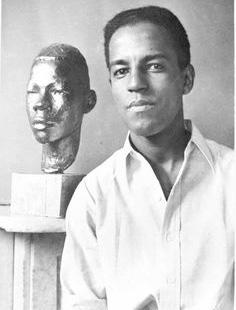
Both the Whitney Museum of American Art and the Metropolitan Museum of Art purchased sculptures for their permanent collections. Throughout his career he created intimate portrait busts, large scale public commissions, and studies of the human figure. His work may be found in the public collections of Fisk University, the Smithsonian American Art Museum, and the Museum of Fine Arts, Boston.
In a review of his first solo exhibition, Edward Alden Jewell, art critic for the New York Times commented,
Richmond Barthé penetrates far beneath the surface, honestly seeking essentials, and never after finding these essentials, stooping to polish off an interpretation with superficial allure. There is no cleverness, no slickness in this sculpture. Some of the readings deserve, indeed, to be called profound.

Romare Bearden was born in 1912 in Charlotte, North Carolina, but raised largely in New York City. His parents were active participants in the Harlem Renaissance, (his mother was the New York editor of the Chicago Defender), which provided the artistic and intellectual foundation for him to emerge as an artist of genuine talent, versatility, and conviction. Bearden studied at New York University, the Art Students League with George Grosz, and Columbia University. He was involved with the earliest incarnation of the Harlem Artists Guild and Charles Alston’s 306 group. After serving with the army, he was able to travel to Paris and study at the Sorbonne. When he returned from his travel, his work became more abstract. His early Social Realist works gradually gave way to cubism in the mid 1940’s while he began exploring religious and mythological themes.

In the early 1960’s, Bearden joined the artist collective Spiral. He began making collages as “an attempt to redefine the image of man in terms of the black experience.” Bearden’s early collages were composed primarily of magazine and newspaper cuttings. Together with his Projections, which were enlarged photostatic copies of these collages, they mark a turning point in his career and received critical praise.
Bearden achieved success in a wide array of media and techniques, including watercolor,
gouache, oil, drawing, monotype, and edition prints. He also made designs for record albums, costumes and stage sets, and book illustrations. Bearden opened Cinque Gallery with fellow artists Norman Lewis and Ernest Crichlow and was founding member of the Studio Museum in Harlem and the Black Academy of Arts and Letters. His work is included in major public collections including the Metropolitan Museum of Art, NY; Whitney Museum of American Art, NY; Philadelphia Museum of Art, PA; Museum of Fine Arts, Boston; and the Studio Museum in Harlem, NY.
Recent exhibitions of his work include: Romare Bearden: Artist as Activist and Visionary, David C. Driskell Center, University of Maryland College Park, MD, 2020; Abstract Romare Bearden, February 13, 2020 - March 28, 2020, DC Moore Gallery, NY; and Something Over Something Else: Romare Bearden’s Profile Series, February 28, 2020 –May 24, 2020, Cincinnati Art Museum. His work was also part of the exhibition Soul of a Nation: Art in the Age of Black Power 1963-1983, 2017-2021.

Some of have labeled my particular style as social protest, but I beg to differ. If I would label my work at all, it would be called social reality.
Cleveland Bellow, Black Artists on Art v. 2, Lewis/Waddy, , p. 102-103
Cleveland Bellow worked primarily in the San Francisco Bay Area. He studied at the California College of Arts and Crafts in Oakland (BFA, MA). He also worked as an intern at the Fine Arts Museum of San Francisco. He worked as a painter, graphic designer, curator and consultant. He exhibited at the Oakland Museum, San Francisco Museum, Whitney Museum of American Art and many other venues around the Bay Area.
Bellow’s work was recently included in the exhibition, Soul of a Nation Art in the Age of Black Power which wrapped its run at the Museum of Fine Arts, Houston on August 30, 2020.

Born in North Carolina in 1924, John Biggers’ body of work experienced a constant evolution throughout his career. He was an accomplished draftsmen as well as muralist - adept at weaving southern AfricanAmerican and African culture togetherincorporating sacred geometry and complex symbolic elements.

Biggers attended Hampton Institute (University) in the early 1940s, and befriended Charles White and Elizabeth Catlett. Much of his early work was social realist - depicting the everyday hard work and perseverance of the African American community.
In 1949, Biggers moved to Houston, TX and chaired the art department at Texas State University (later Texas Southern). The artist yearned to penetrate the invisible but very real curtain which seemed to separate American blacks from Africans. For 15 years, he tried and failed to get fellowships to Africa. Finally he made it in 1957, on a UNESCO grant which provided seven months of living and traveling through Ghana and western Nigeria.
“I had a magnificent sense of coming home, of belonging,” he says - and he doesn’t mean it sentimentally.
“I recognized at once the Africanisms in our life in America, which we simply had not been able to recognize and to claim,” Biggers asserts. The sight of African men and women building their own houses, hewing and shaping their own ax handles, weaving their own quilts, making their own chairs, impressed him deeply. “And it reminded me of my own childhood times in North Carolina.”
-Ann Holmes, It is Almost Genetic, The ARTGallery Magazine, April 1970, p. 38.
Biggers’ work may be found in the collections of the Brooklyn Museum, NY; Atlanta University, GA; Barnett-Aden Collection, Washington D.C.; Dallas Museum of Art, TX; Howard University, Washington D.C.; and the Smithsonian American Art Museum.

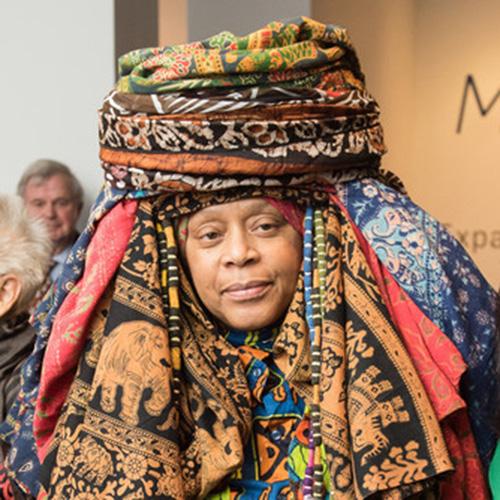
Booker is best known for her innovative and signature use of recycled rubber tires, her primary sculptural material. Rubber has provided Booker with the ability to work in a modular format at a monumental scale while maintaining a fluid movement and gestural feel. Throughout her career, Booker has consistently used stainless steel and fabric to create sculptural works in addition to rubber tires.
Since 2009 Chakaia Booker has created over 100 unique prints at the Robert Blackburn Printmaking Workshop in collaboration with master printmakers Phil Sanders and Justin Sanz. Though materially different than the sculptures made of rubber tires for which she’s known, Booker’s prints retain a visual link to her three-dimensional works. In her sculptural practice Booker often transforms the bulky tire into seemingly feather-light forms, imbuing the ubiquitous material with social and political implications. In her prints, Booker transforms the static nature of twodimensional works into dense, patterned compositions almost buzzing with frenetic energy. In some, the gestural, abstract forms seem to burst forth from the geometric figures that are layered and stacked on the paper. In others, genderless figures composed of densely made patterns, float weightless in space yet ready to spring forth from the page.
During her time at the Blackburn Printmaking Workshop, Booker experimented with production processes, devising new ways to create work and make marks that draw from the visual language of her sculptural works. In the same way Booker forms sculptures out of unexpected materials, her prints are made with an innovative printing technique. Booker utilizes thin, delicate papers that become transparent during the printing process, allowing each layer to bleed into the next. She then tears and cuts these papers, combining them to make the final forms—an incredibly meticulous process. In the results of this incredible technique, Booker proves she can bend any medium to her will.
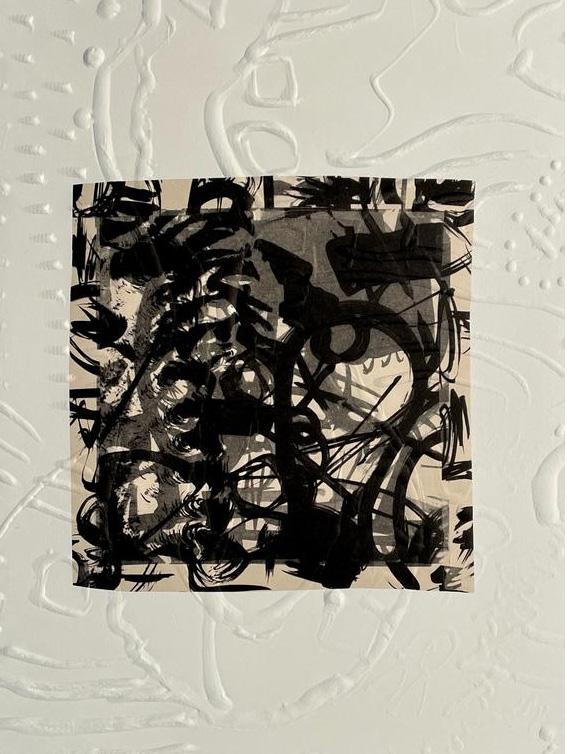

Sylvester Britton was born in 1926 on the South Side of Chicago. He attended the Abraham Lincoln Center, a cultural center in Chicago, and received formal art training in Mexico City at the School of Painting and Sculpture. When Britton returned to Chicago, he studied at the School of the Art Institute. He later traveled to Europe, living and exhibiting work both in Paris and Sweden before earning enough money to move back to Chicago by making Christmas cards. When he returned to the United States, he was instrumental in the revival of the South Side Community Art Center and became its gallery director. He was also a regular exhibitor at the 57th Street Art Fair in Chicago.
Britton exhibited works at Oak Park Library, Chicago, IL; Atlanta University; Art Institute of Chicago; and the South Side Community Art Center. He was awarded the Eisendrath Prize from the Art
Institute of Chicago in 1956. Most recently, in 2018, the Smart Museum, Chicago, IL, included his work in the exhibition, The Time is Now! Art Worlds of Chicago’s South Side 1960-1980. Illustrations of his work appear in the catalog on pages 72 and 139. His work is also illustrated in The Black Chicago Renaissance by Darlene Clark Hine and John McCluskey, Jr., University of Illinois Press, 2012, cat #10:28 and 10:29.
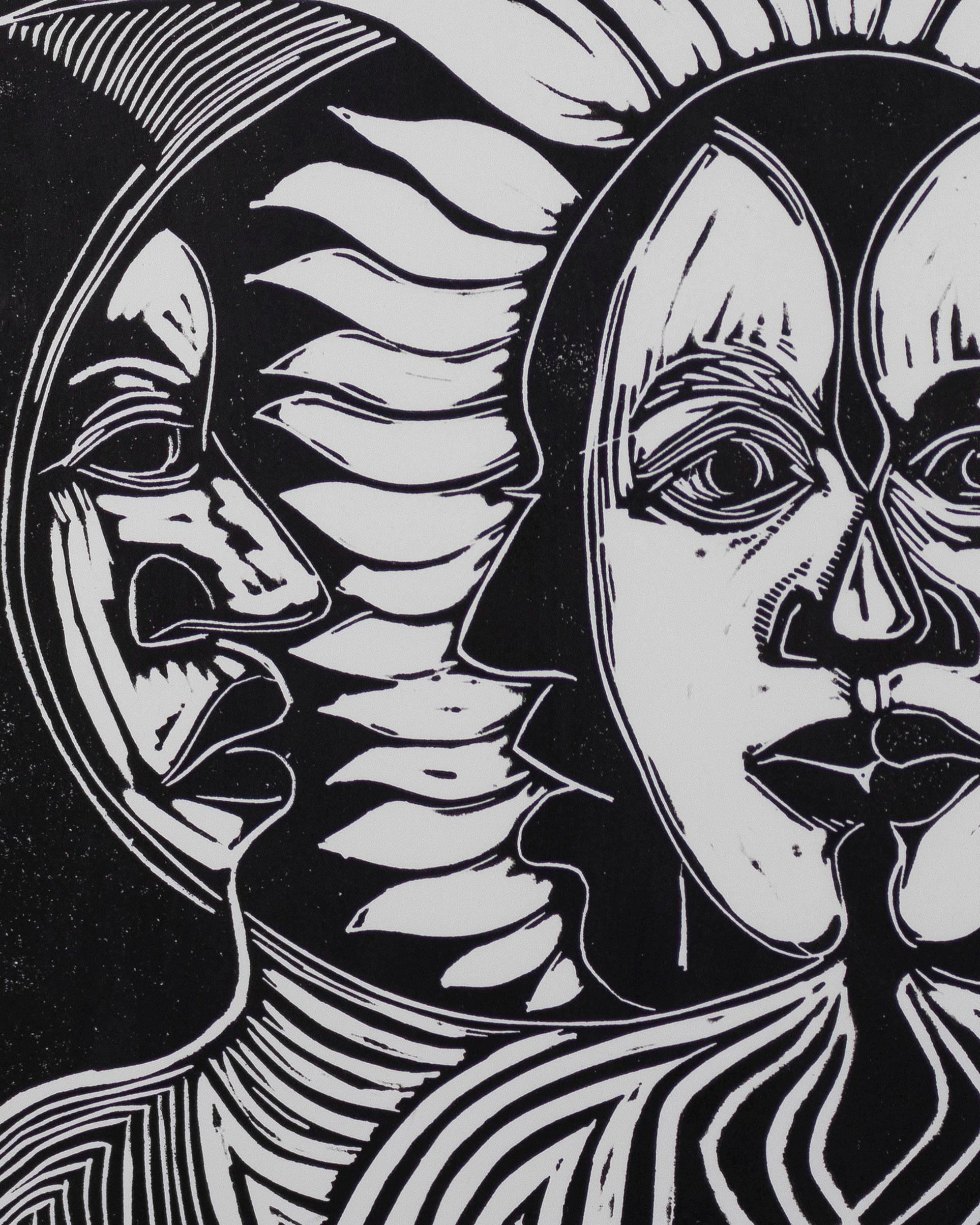
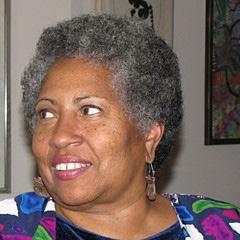
Gwendolyn Aqui-Brooks is a Washington, DC based artist who specializes in mixed-media work including: paintings, art quilts, one-of-a-kind dolls, and works on paper. Much of her inspiration comes from her travels to places like Brazil, Turkey, Greece, Venice, West Africa and Trinidad and Tobago.
Her creative journey always begins with a circle and without pre-conceived drawings. Representations of figures, faces, patterns, plant forms and symbols merge to produce dazzling compositions.
She has been honored with awards and exhibitions by countless revered institutions. Her works are in public and corporate col lections both locally and abroad.
Ms. Brooks received her BFA in Art Education from Howard University and a Masters Degree in Education from Trinity College.

Grafton Tyler Brown was a painter, graphic designer, and lithographer who worked in California in the late 19th century. Brown worked in Peter S. Duval’s print shop in Philadelphia in the 1850s. By 1865, he had founded his own lithography business in San Francisco, designing stock certificates for a wide variety of companies ranging from ice to mining corporations, as well as admission tickets, maps, sheet music and advertisements.
In the 1870s, Brown moved to Victoria, British Columbia to work on a geo graphical survey for the Canadian government. He held his first exhibition of paintings in 1883 in Victoria, which included 22 local landscapes. Brown lived in Portland from 1886-1889 and Wyoming in 1891, before returning to California, all the while painting the local scenery.

In 1892, he left the West and moved to St. Paul, Minnesota, where he worked as a draftsman and civil engineer. Brown lived out his remaining 25 years in St. Paul, Minnesota.
Right: The artist at work in his studio; Collection of British Columbia Archives and Records Service.

Fabric artist, printmaker, and educator Viola Burley Leak was born in Nashville, TN in 1944. Leak’s work represents a magnificent coalescence of human nature and the Black experience combined with the technical dexterity of her educational background. She was educated at Fisk University, TN receiving a BA in art, Hunter College, NY (MA), Pratt Institute, NY (BFA in design), and Howard University, Washington DC (MFA in media).
Her paintings fuse traditional techniques with collage and batik media. The prints are executed in etching, serigraph, or lithographic methods, and the textile art is a synthesis of painting and printmaking resembling a collage-like appliqué process.
Gumbo Ya Ya, Anthology of Contemporary African American Women Artists, p. 139.
Leak also served as and art consultant to the NY State Board of Education and the Department of Prints at the Metropolitan Museum of Art, NY. She was responsible for designing the curriculum and planned museum programs for the Experimental Gallery of Art at the Smithsonian Museum.
Her work has been featured in multiple Annual Atlanta Life National Art Competition and Exhibitions put on by the Atlanta Life Insurance Co; Blackness in Color: Visual Expressions of the Black Arts Movement (1960 to present), Cornell University, NY, 2000; Gathered Visions: Selected Works by African American Women Artists, Anacostia Museum and Center for African American History and Culture, Washington DC, 1992; Black Women Visual Artists in Washington, DC, Bethune Museum and Archives, 1987; A Proud Continuum: Eight Decades of Art at Howard University, 2005; and the Inaugural Exhibition at Galerie Myrtis, Washington DC in 2006, among others.

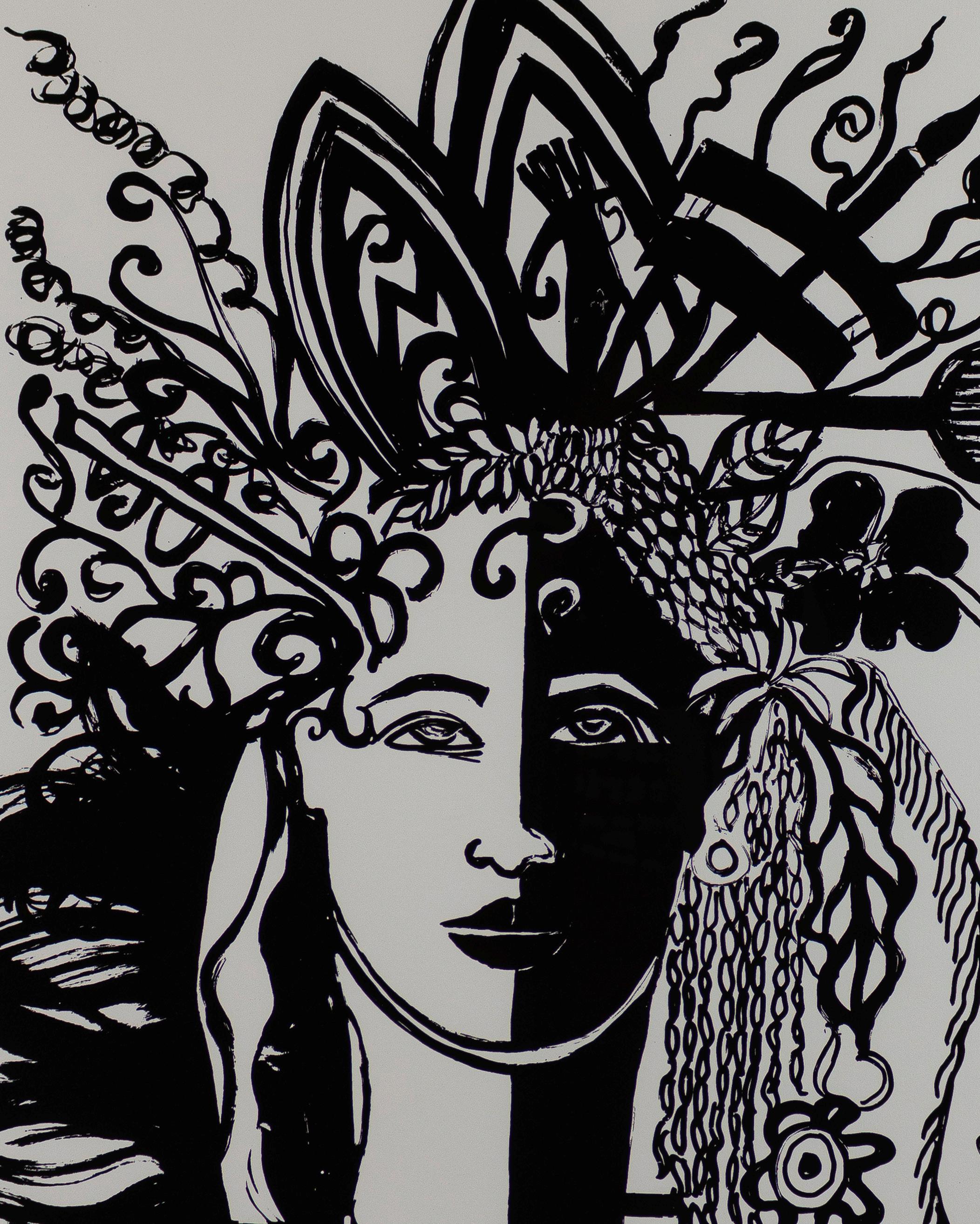
In her dedication to educating others and advocating for African American art, Margaret Burroughs became a cultural leader and role model. Born in St. Rose, Louisiana in 1917, Burroughs and her family followed the Great Migration north to Chicago in 1922. She made the most of many valuable opportunities throughout her lifetime, beginning at Englewood High School, where she first became interested in art, and became the youngest member of George Neal’s Art Crafts Guild. She later studied at the Chicago Normal School.

At age 22, she founded the South Side Community Art Center, a community organization that continues to serve as a gallery and workshop studio for artists and students. In the early 1950’s, Burroughs started the Lake Meadows Art Fair where African Americans could showcase and sell their art. Burroughs lived in Mexico for a time, where she studied print making and mural painting with the Taller Editorial de Grafica Popular (People’s Graphic Workshop) under Leopoldo Mendez, a prominent printmaker of the Diego Rivera circle. When she returned to the States, she and her husband Charles founded the DuSable Museum of African American History in their living room. It remained there for nearly a decade until it moved to its own building in Chicago’s Washington Park.
Burroughs was also an accomplished poet and author of children’s books. In 1975 she received the President’s Humanitarian Award, and in 1977 was
distinguished as one of Chicago’s Most Influential Women by the Chicago Defender. February 1, 1986 was proclaimed “Dr. Margaret Burroughs Day” in Chicago by late Mayor Harold Washington. Burroughs passed away on November 21, 2010.
In 2018, the exhibitions The Art and Influence of Dr. Margaret T. Burroughs and The Time Is Now! Art Worlds of Chicago’s South Side, 1960-1980, were presented concurrently; the former at her beloved museum, and the latter at the Smart Museum of Art, University of Chicago. The book South Side Venus: The Legacy of Margaret Burroughs by Mary Ann Cain was also published. Together they provide a closer look at the life and legacy of this remarkable woman who continues to inspire generations.

William Sylvester Carter was born in St. Louis, MO and moved to Chicago in 1930 to study art at the School of the Art Institute of Chicago and the University of Illinois. In order to earn room and board, Carter worked as a janitor at the Palette and Chisel Club (an allwhite club, to which he became an honorary member in 1986).

He was among the artists represented in the American Negro Exposition assembled by Alonzo Aden, with the Harmon Foundation and the WPA in Chicago, 1940. Carter was awarded first prize for a work in watercolor. The same year, he exhibited at Howard University Gallery of Art. Carter also worked for the WPA in Illinois in 1943, and taught art at the historic South Side Community Art Center.
Carter worked in many styles and addressed virtually any subject matter from the traditional portrait to completely nonobjective compositions. Although Carter humorously and vehemently vowed until the day he died (at 87) he was too young to have a painting style, this colorful, cubistinfluenced work is a fine example of a style in which he worked regularly.
Carter’s work, The Card Game, 1950, was included in the exhibition, They Seek A City, Chicago and the Art of Migration (p.87) which was held at the Art Institute of Chicago in 2013.

In addition to being an accomplished painter, Bernard Casey was an acclaimed poet, television and movie actor and player in the NFL. Casey was born in a small mining town in West Virginia in 1939. He was educated at Bowling Green State University, OH where he earned both a BA and MFA.
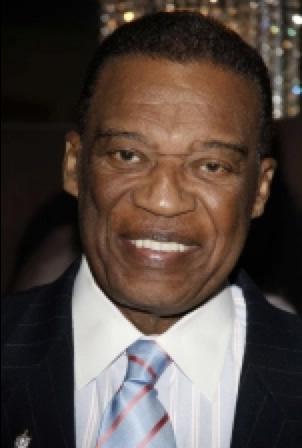
Samella Lewis described him as a “colorist with a strong sense of design, (who) frequently uses geometric shapes in combination with subtle color changes. His works are quiet, but penetrating, and some are adorned with words of social significance. The locales they depict could be almost any place in the world, but their poetic statements generally deal with the social plight of African Americans in the United States. Since Casey is also a poet, this combination of forms and words is not unnatural.”
African American Art and Artists, 180 Casey’s work has been shown in the seminal exhibition, Los Angeles 1972: A Panorama of Black Artists, Los Angeles County Museum of Art, 1972; Black Artists on Art: The Legacy Exhibit, Oakland, CA, 2015; American Black Art: Black Belt to
Hill Country: the Known and the New, Battle Creek Art Center, MI, 1977, and the California African American Museum.
Casey also served on the Board of Trustees at the Savannah College of Art and Design.

Elizabeth Catlett was born in Washington D.C. She attended Howard University where she studied design, printmaking and drawing. She continued her graduate work at the University of Iowa School of Art and Art History, and in 1940 became the first African American student to receive an M.F.A. in sculpture from the school. Grant Wood instilled in her the idea of working with subjects that she, the artist, knew best. She was inspired to create Mother and Child in 1939 for her thesis. This limestone sculpture won first prize in its category at the American Negro Exposition in Chicago, 1940.
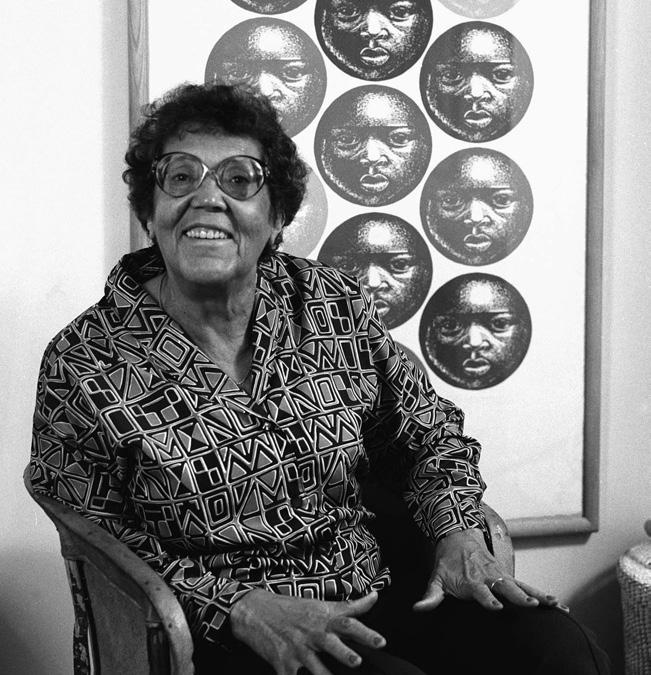
Eager to continue her education, she studied ceramics at the Art Institute of Chicago (1941), lithography at the Art Students League of New York (1942-43), and inde pendently with sculptor Ossip Zadkine in New York (1943). In 1946, Catlett received a Rosenwald Fellowship that allowed her to travel to Mexico City with her husband, Charles White, where she studied wood carving with Jose L. Ruiz and ceramic sculpture with Francisco Zuniga. There, she worked with the Taller de Grafica Popular, (People’s Graphic Arts Workshop), a group of printmakers dedicated to using their art to promote social change. The TGP inspired her to reach out to the broadest
possible audience, which often meant balancing abstraction with figuration. After settling in Mexico and later becoming a Mexican citizen, she taught sculpture at the National Autonomous University of Mexico in Mexico City until retiring in 1975.
Catlett’s work has exhibited widely (most recently The Art of Elizabeth Catlett: From the Collection of Samella Lewis was presented at the University of Delaware, Sep 3-Dec 6, 2019) and her work is found in many important collections including the Smithsonian American Art Museum, Washington D.C.; Museum of Modern Art, NY; the Metropolitan Museum of Art, NY, and the Schomburg Center for Research in Black Culture, NY.

Ed Clark was born in New Orleans but moved to Chicago in early childhood. He served in the US Air Force between 194446, and from 1947-1951, attended the Art Institute of Chicago on the G.I. Bill. He traveled to Paris in 1952, and continued his studies at the L’Academie de la Grande Chaumiere for two years. Clark found the style of education to be much more lax in Paris than at the AIC, but he found inspiration in acquaintances and unlimited access to great works of art. He was particularly influenced by the Russian-born painter, Nicolas de Stael, whose work Clark found to be somewhere between hard-edge and the gestural abstraction popular in postwar Paris. Clark’s work became increasingly abstract and he began working in a much larger format. In 1953, he was included in an exhibition of American artists working in France at the Galerie Craven. He was the only African American represented.
He returned to New York in 1957 for a solo exhibition at the Brata Gallery in the East Village, and continued to show there through 1959, but with the emergence of Pop Art in the 60s, not much was happening for Clark in the US. He returned to Paris in 1966 for

Ed Clark at his home studio in Chelsea in 2014.
Credit: Chester Higgins Jr./The New York Times
a one man show at Galerie Creuze. Since the 1960s, Clark began using a push broom to push the paint across the canvas lying on the floor. It is interesting to note that his first teacher at the AIC, Louis Ritman, introduced Clark to the work of Claude Monet, and Clark, upon first arriving in Paris, went to see Waterlilies at the Musée du Jeu de Paume, and the work had a significant effect on Clark.
Clark experimented with elliptical designs and both shaped canvases and painted, draped canvases. He was concerned with freeing the image concept from the limits of the canvas. (REF: Explorations in the City of Light: African-American Artists in Paris, 1945-1965, Valerie Mercer, The Studio Museum in Harlem, 1996.)

Clarke was born in a suburb of Port of Spain, Trinidad, West Indies in a “close knit, tribal, primarily African community that made him keenly aware of African-Caribbean religious beliefs, practices, and folklore, particularly the cults, ceremonies, and deities that would later impact on his work.” (p.34)
He left Trinidad for New York in 1967 where he embarked upon an epic work that he would carry through for the rest of his life called, The Poet
Clarke has found influence in the works of Trinidadian artist Alf Codallo, Ben Shahn, the Mexican muralists, Guyanese novelist Wilson Harris, Wilfredo Lam and jazz musicians Ron Carter, Don Cherry, and Miles Davis.

“The head in Clarke’s iconography embod ies the concept of the total journey, in fact, everything is going to come from the head, including the eye looking steadily at us and daring us to open the eye to see the I.” The cyclical nature of life identified by the circle also suggests the notion of the journey through life and all that is attached to it.” (p. 38)
His work has been exhibited extensively, including the important exhibitions, Ritual and Myth: A Survey of African American Art, Studio Museum in Harlem, 1982; Afro American Artists, 1800-1969, School District and Museum of the Philadelphia Civic Center, 1969; Harlem Artists ’69, Studio Museum of Art; Directions in AfroAmerican Art, Herbert F. Johnson Museum of Art, Cornell University, 1974 - in addition to numerous solo exhibitions. Clarke served as artist in residence at the Studio Museum in Harlem in 1972.
REF: To See the Light and Touch It: The Vision of Leroy Clarke, Gloria Mark Gordon, International Review of African American Art, 1989, vol 8, no. 3, pp. 34-38.

Eldzier Cortor was born in Richmond, Virginia in 1916. His family moved to Chicago in 1917 where Cortor was to play a large role in the Chicago Black Renaissance of the 1930’s and 1940’s. In 1936, he attended the School of the Art Institute of Chicago and later studied at Chicago’s Institute of Design under Laszlo MoholyNagy. He worked for the WPA Federal Arts Project in the 1930’s and in 1941, co-found ed the South Side Community Art Center on South Michigan Avenue.
After winning two successive Rosenwald Grants, he traveled to the Sea Islands off the coast of Georgia and the Carolinas. It was here that he began to paint the women of the Gullah community as the archetype of African American culture, with their long, elegant necks and colorful head scarves. He focused on “classical composition”, making his figures resemble African sculpture. In 1946, LIFE magazine published one of these semi-nude female figures.
In 1949, Cortor received a Guggenheim Fellowship and traveled to the West Indies to paint in Jamaica and Cuba before settling in Haiti for two years. There he taught classes at the Centre d’Art in Port au Prince. Cortor worked up until his death in 2015 at the age of 99.
Recent exhibitions of his work have been held at the South Side Community Art Center in 2014; Eldzier Cortor Coming Home, an exhibition of prints, was held at the Art Institute of Chicago in 2015; and the Museum of Fine Arts, Boston held a joint exhibition of the works of Cortor and John Wilson in 2017. His work is found in the collections of the Art Institute of Chicago, Smithsonian American Art Museum, and Howard University.
Photo: The artist, 1949, taken by Gordon Parks.

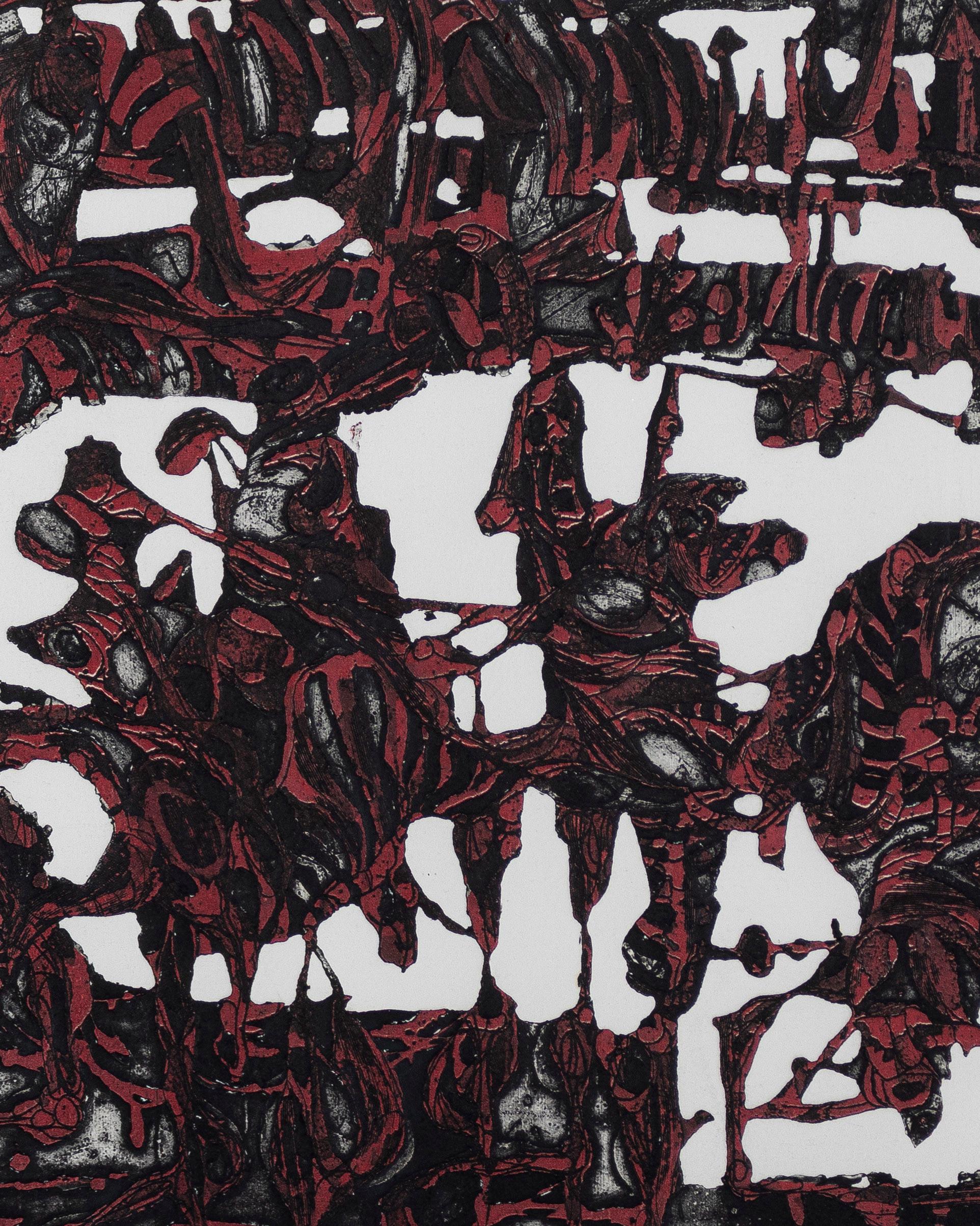

Cousins was born and raised in Washington, D.C. and attended Howard University. He studied art at the Art Students League in NYC, but left for Paris in 1949, to work with Ossip Zadkine. Cousins initially began work ing with traditional materials but was taught how to weld steel by Japanese-American artist Shinkichi Tajiri, also a student of Zadkine. He was also influenced by Spanish modernist sculptor, Julio Gonzalez.
His first major exhibit of metal sculptures took place in 1954 at the Galerie Raymond Cruze (Paris). He wanted to combine metal plates and lines, calling it "plaiton". This was a combination of the French word, "Laiton" (brass) and "Plate". Cousins explained the concept "involves giving special attention to the form of the empty space between the solid elements of a sculpture, as well as to the empty space surrounding the sculpture."
Darthea Speyer (an American gallerist in Paris associated also with Beauford Delaney) was supportive of Cousins and gave him exhibits at Galerie Speyer. Cousins left Paris for Belgium in 1967.
REF: Explorations in the City of Light: African-American Artists in Paris, 19451965, The Studio Museum of Harlem (1996).
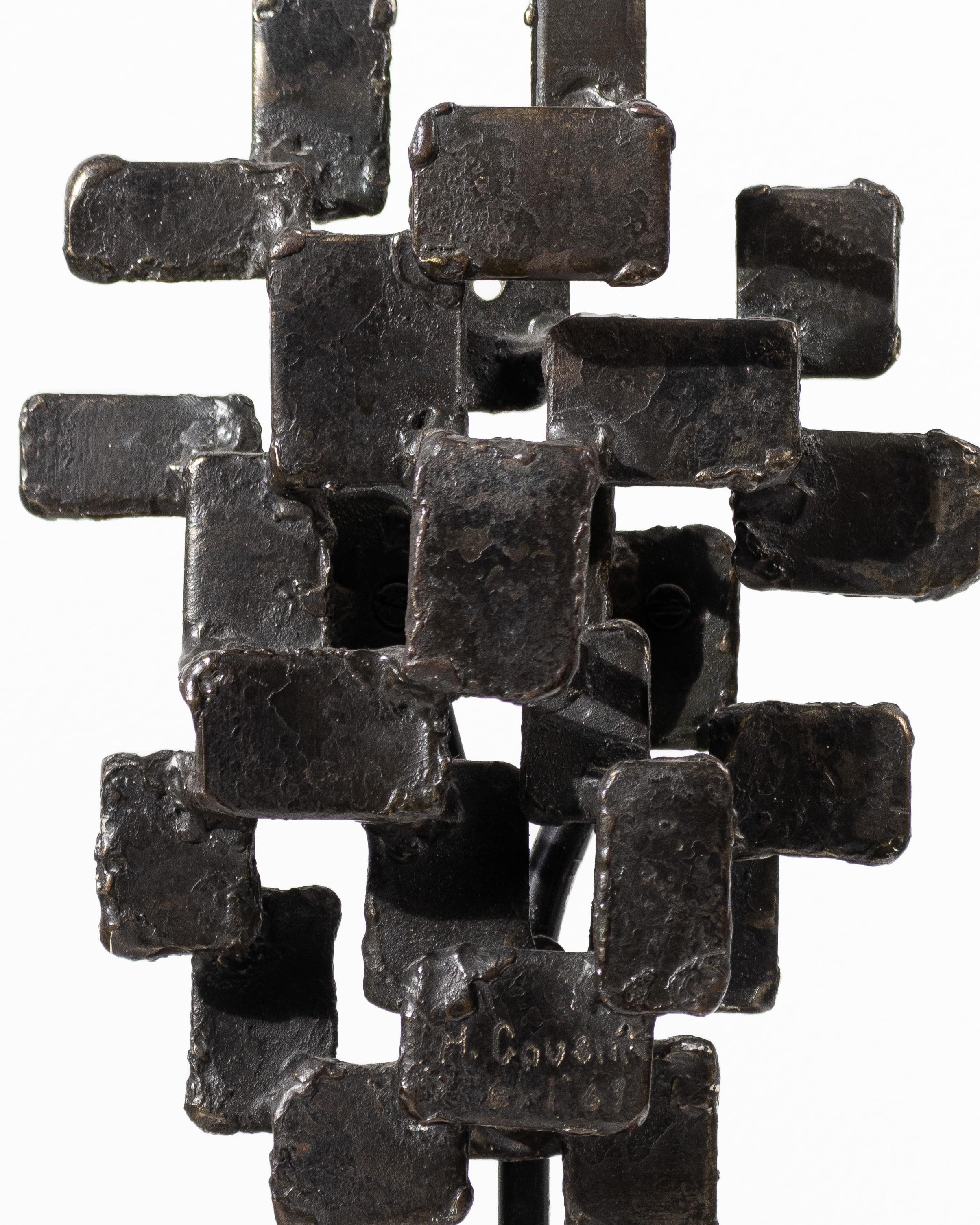
Social realist painter, illustrator, and educator, Ernest Crichlow was born in 1914 in Brooklyn, NY. He began studying commercial art at the School of Commercial Illustrating and Advertising Art, NY, and fine art with the Art Student’s League.

In 1930, Crichlow found a mentor in Augusta Savage when he joined the Harlem Artist’s Guild, alongside other such notables as Romare Bearden, Jacob Lawrence, and Norman Lewis. Here he found his niche creating social realist works that packed a powerful message. During the Depression, he found work with the WPA, teaching art and working on mural projects. He used this platform to create works that captured “the indomitable inner strength, intrinsic beauty, dignity, and essential humanity of the African American community.”
He continued to support his community by establishing Brooklyn’s Fulton Art Fair in 1958. In 1969, along with Romare Bearden and Norman Lewis he co-founded the Cinque Art Gallery, dedicated to supporting and exhibiting the works of emerging black artists. He created a 25 panel mural in 1976 for the Boys and Girls High School of Brooklyn depicting people at work in various trades and careers as an inspiration for those students to achieve excellence. Crichlow was also known for his illustrations and children’s books.
Throughout his career, he participated in notable exhibitions at the American Negro Exposition, Chicago, 1940; the New York World’s Fair; the Harlem Community Center; the Downtown Gallery; ACA Gallery; and Atlanta University. He was honored as one of ten black artists from the National Conference of Artists by President Jimmy Carter in the late 1970’s.
Crichlow’s, Reflections of Another Time, was included in Southern Journeys, African American Artists of the South, a traveling museum exhibition, originating out of the Appleton Museum of Art, Ocala, FL in 2011. In 2018, his work was included in Truth and Beauty: Charles White and His Circle held at Michael Rosenfeld Gallery, NY.
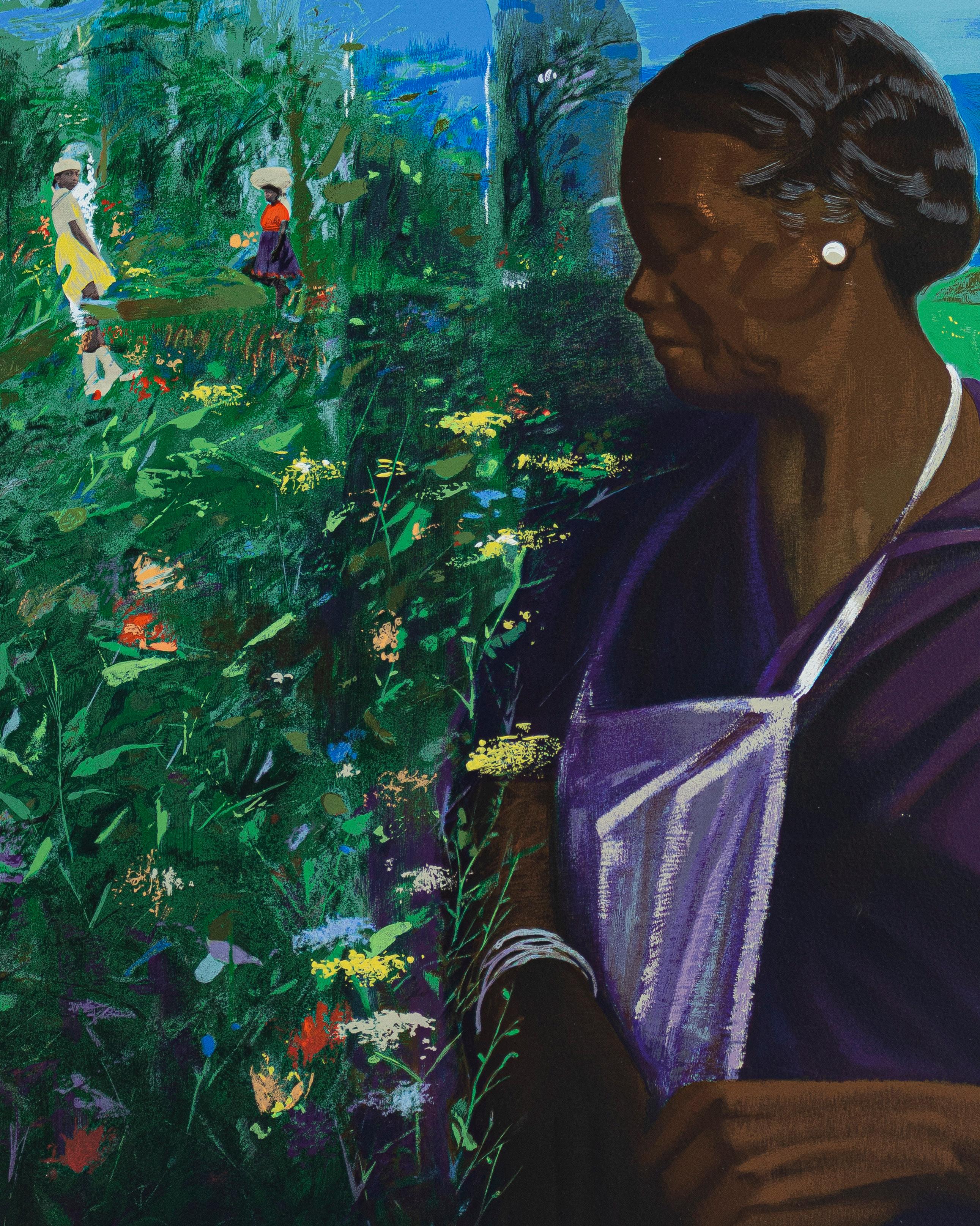
Allan Rohan Crite was born in New Jersey, but spent his entire life in Boston. He graduated from the School of the Museum of Fine Arts Boston in 1936, and was awarded a BA from Harvard Extension School in 1968. Crite participated in the Public Works of Art Project in 1934 and the Works Progress Administration/ Federal Art Project in 1936, while still a student. He was included in an exhibition at the Museum of Modern Art in 1936, called New Horizons in American Art held under the auspices of the WPA/FAP.
In 1940, Crite was employed as a technical illustrator for the Boston Naval Shipyard, and he worked there until 1971. He had abandoned large-scale oils of neighborhood scenes by the 1940s, and was concentrating on drawings and watercolors.
Historian, diligent researcher, theologian, teacher, philosopher, simple believer, Allan Crite is a bit of all these things, but most of all he is an artist whose agile mind and equally agile hands have never tired of creating a world of images simultaneously local and global, divine and secular, poetic yet unsentimental. His art, marked by narrative and documentary characteristics, retains a simple beauty, simply presented.
-Edmund Barry Gaither, essay to the catalogue accompanying the exhibition, Allan Rohan Crite, Artist-Reporter of the African American Community; Frye Art Museum, 2001, 23.
A devout Episcopalian, his work soon began to exhibit strong religious themes as well, depicting blacks in interpretations of Biblical stories and African American spirituals. Crite also wrote and illustrated several books, created hand-tooled brass panels that once adorned a monastery, and designed and painted vestments and banners for St. Stephen’s Episcopal Church in Cambridge.
His work may be found in the collections of the Smithsonian American Art Museum; Museum of Modern Art, NY; Museum of Fine Arts, Boston; and the Art Institute of Chicago.


Davis grew up near Tuskegee University where his father was a professor and his mother a librarian. The family moved from Alabama to Los Angeles in 1955. He studied art at Pepperdine University and earned an MFA in printmaking at the Otis Art Institute, under Charles White. In 1967, he and his brother Dale, opened the Brockman Gallery in L.A., which featured the works of contemporary black artists such as Charles White, John Biggers, Elizabeth Catlett, Romare Bearden Mel Edwards and David Hammons.
Davis exhibited his own work at Brockman, as well as at the Studio Museum in Harlem, Los Angles County Museum, Laguna Beach Art Association and the Watts Summer Art Festival. In Lewis / Waddy’s Black Artists on Art, v. 2, p. 105, Davis says:
I am involved in making visual statements not literary ones. It is for the viewer to inter pret. Thus, I have chosen a few words to give an indication as to what my art deals with or is affected by at this time: direction, deci sion, pressure, black/white, morality, unity, change, feelings, politics, humor, symbols, heritage.
Photo: Alonzo Davis in his Los Angeles studio, 1970; Now Dig This! Art & Black Los Angeles 1960-1980, Kellie Jones, Hammer Museum, University of California, Los Angeles, 2011: p. 222.


Davis was a photojournalist who captured images of the civil rights movement as well as the independence movement of Africa.
After graduating from Morehouse College in 1947, Davis became the first Roving Editor of Ebony magazine, at the recommendation of his friend and mentor Langston Hughes. Hughes also recommended him to attend Columbia University Graduate School of Journalism as the only African-American in the Class of 1949. He took courses at the New School for Social Research with Kurt Safranski, co-founder of Black Star Publishing Company. After graduating, Davis became an international freelance photojournalist for Black Star, working in Liberia, Ethiopia, and Ghana from 19491952. His exclusive article and photographs of The Private Life of Emperor Haile Selassie of Ethiopia was the cover story for Ebony’s 5th Anniversary issue, November 1950. Davis became a foreign service officer in 1952, serving for 35 years in several African countries.

The photographs offered in this sale were taken in the late 1940s to document Charles Alston and Hale Woodruff as they worked in their New York City studio on a mural project for the Golden State Mutual Life Insurance Company. The giant mural was commissioned by the Los Angelesbased African American-owned company to illustrate the historic role of African Americans in the settling of California. These studio photos feature the artists at work; other people - unidentified sitters and casual visitors - also appear in the photographs.
The Golden State Mutual Life Insurance Company Building in Los Angeles was built in 1949 and was designed in the Late Modern style by Paul R. Williams (18941980), the first certified Black architect west of the Mississippi River, the first Black member of the American Institute of Architects, and who also served on the first Los Angeles Planning Commission in 1920.
The interior lobby of the building was designed to incorporate two integrated painted murals, one for each sidewall. Together these large, vibrant, Social Realist style murals, The Negro in California History—Exploration and Colonization by artist Charles Alston and The Negro in California History—Settlement and Development by artist Hale Woodruff, are a panoramic depiction of Black history in California from 1527 through 1949. Building architect Paul Williams sat on the threeperson committee that selected the murals’ artists and subject.
REF: Still Here: The Griffith J. Davis Photographs and Archives in Context, Dorothy Davis, daughter and co-curator and President, Griffith J. Davis Photographs and Archives, Contemporary Art Museum, University of South Florida, 2021
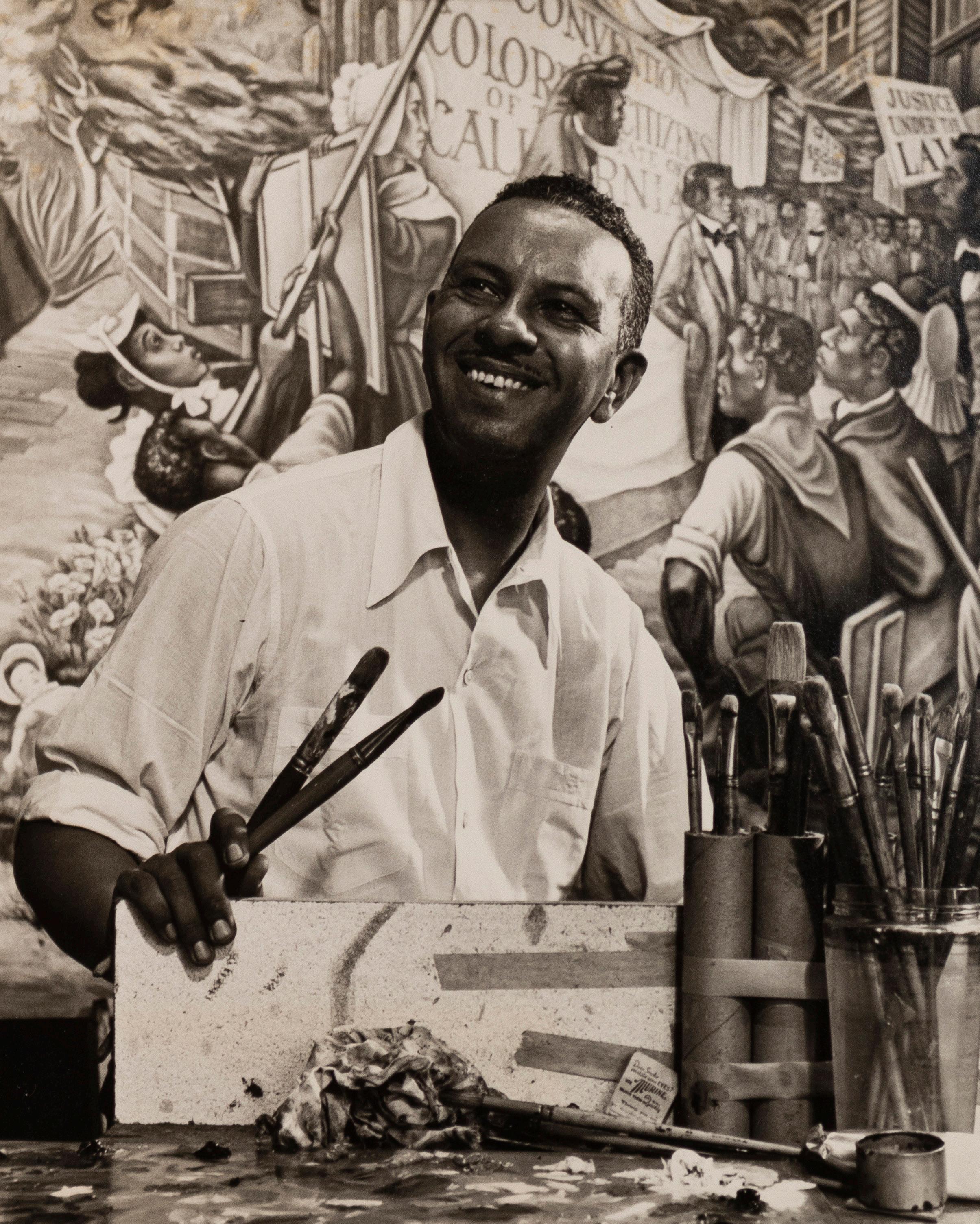
“
I choose objects that are already very human,” says Othello. “The objects mimic actions that humans perform; they’re extensions of our own actions. We use phones to speak and to listen, clocks to tell time, vessels to hold things, and our bodies are indicators of all of those.”
Woody de Othello is best known for his brightly colored bronze and ceramic sculptures. “He reimagines ordinary household objects - a remote control, faucets, …as bulbous, biomorphic forms”, anthropomorphized with his characteristic humor.
DeOthello was raised in Miami Florida - his parents are immigrants from Haiti. He attended the California College of the Arts in San Francisco.
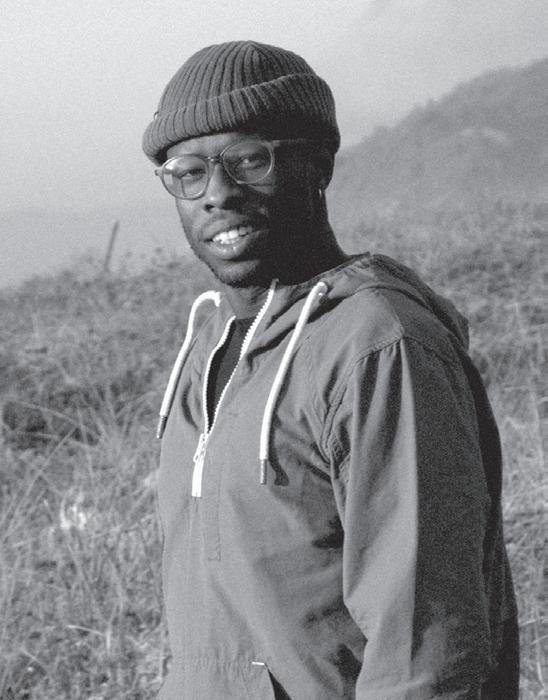
Woody De Othellos’s work is currently included in Hear Me Now: The Black Potters of Old Edgefield, South Carolina, at the Metropolitan Museum of Art. In 2021-2022, Othello was the subject of a solo exhibition, Hope Omens, at the John Michael Kohler Center, and was included in Quiet as It’s Kept, the 2022 Whitney Biennial.
The work being offered here is a collaboration between the artist and Colpa Press, based in Oakland, CA.
REF: Furman, Anna. “Woody De Othello’s Extraordinary Monuments to the Mundane.” New York Times Style Magazine, 17 Mar. 2022.
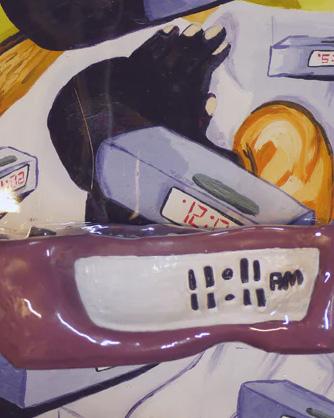
Beauford Delaney’s talent was discovered by local and influential painter, Lloyd Branson whose support took him to Boston to study at the Massachusetts Normal School, the Copley Society, and the South Boston School of Art. In 1929, he moved to New York, where he became an important figure of the Harlem Renaissance, painting urban landscapes populated with the disenfranchised people he lived among, as well as portraits, sometimes of his famous friends.
Although he was a well respected artist with influential friends like James Baldwin, Henry Miller, and Georgia O’Keefe, he couldn’t escape the sense of marginalization he felt as an individual who constantly had to overcome the inequalities of being not only African American, but homosexual as well. He moved to Paris in 1950, a place where he felt a new sense of freedom. His style shifted from the figurative compositions of New York City life, to abstract expressionist studies of color and light, notably a vibrant, Van Gogh inspired yellow. In 1956, he met Darthea Speyer, an American cultural attaché living in Paris. She organized a group exhibition of works which included Delaney at the American Cultural Center in 1966, as well as two solo exhibitions of his work at her gallery which was established in 1968. Delaney lived his remaining years in Paris, eventually being hospitalized for mental illness and dying in 1979.

His work may be found in the collections of the High Museum of Art, Atlanta; The Studio Museum, Harlem, NY; the Smithsonian American Art Museum, and Fogg Art Museum, Harvard University, MA.
In 2020, the Knoxville Museum of Art, TN presented an exhibition of Delaney’s work in Beauford Delaney and James Baldwin: Through the Unusual Door, The exhibition featured 50+ paintings, works on paper, and unpublished archival material which examined the 38-year relationship between painter Beauford Delaney (Knoxville 19011979 Paris) and writer James Baldwin (New York 1924-1987 Saint-Paul-deVence, France) and the ways their ongoing intellectual exchange shaped one another’s creative output and worldview.

Delsarte grew up in Brooklyn and attended the Pratt Institute (BFA) and also the University of Arizona in Tucson (MFA). He also taught art throughout his career, including at Morehouse College in Atlanta, Georgia.
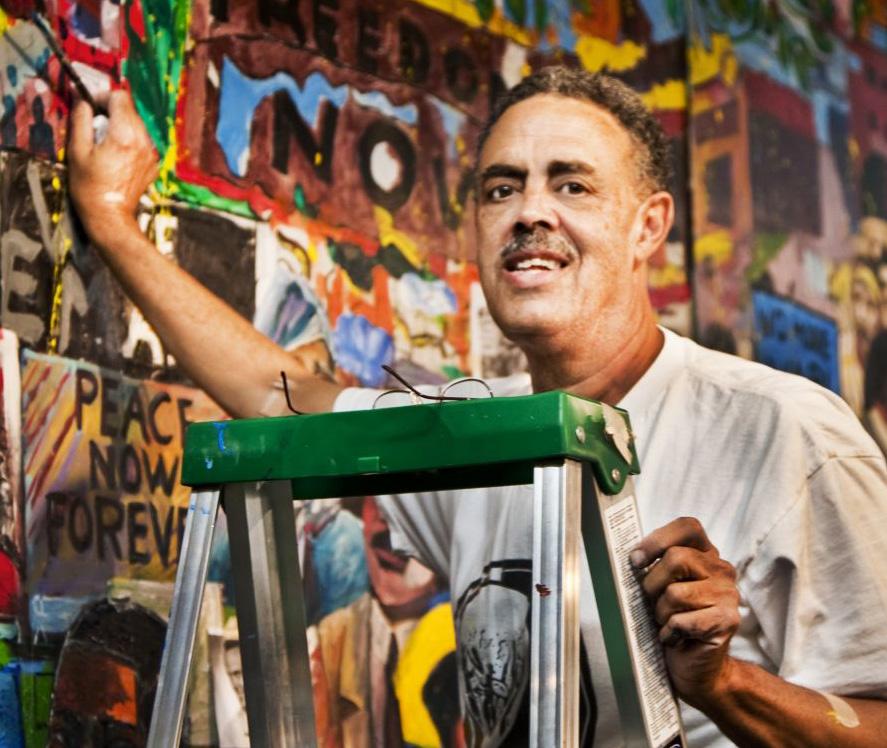
Delsarte was influenced by jazz music and has attempted to represent its spontaneity and rhythm in his work. His work is included in the collections of the Metropolitan Museum of Art, California African-American Art Museum, and the Corcoran Gallery of Art . He was also commissioned to execute several important mural projects in cities throughout the country. His technique is instantly recognizable. His colorful compositions are intentionally flattened and his brushwork causes a “surface tension” that is reminiscent of a reflection of the scene being viewed in choppy water. The figures and even the inanimate objects are buzzing with energy.
This article appeared in the NY Times announcing his passing in 2020:
Louis Delsarte, A Muralist of the Black Experience Dies at 75.
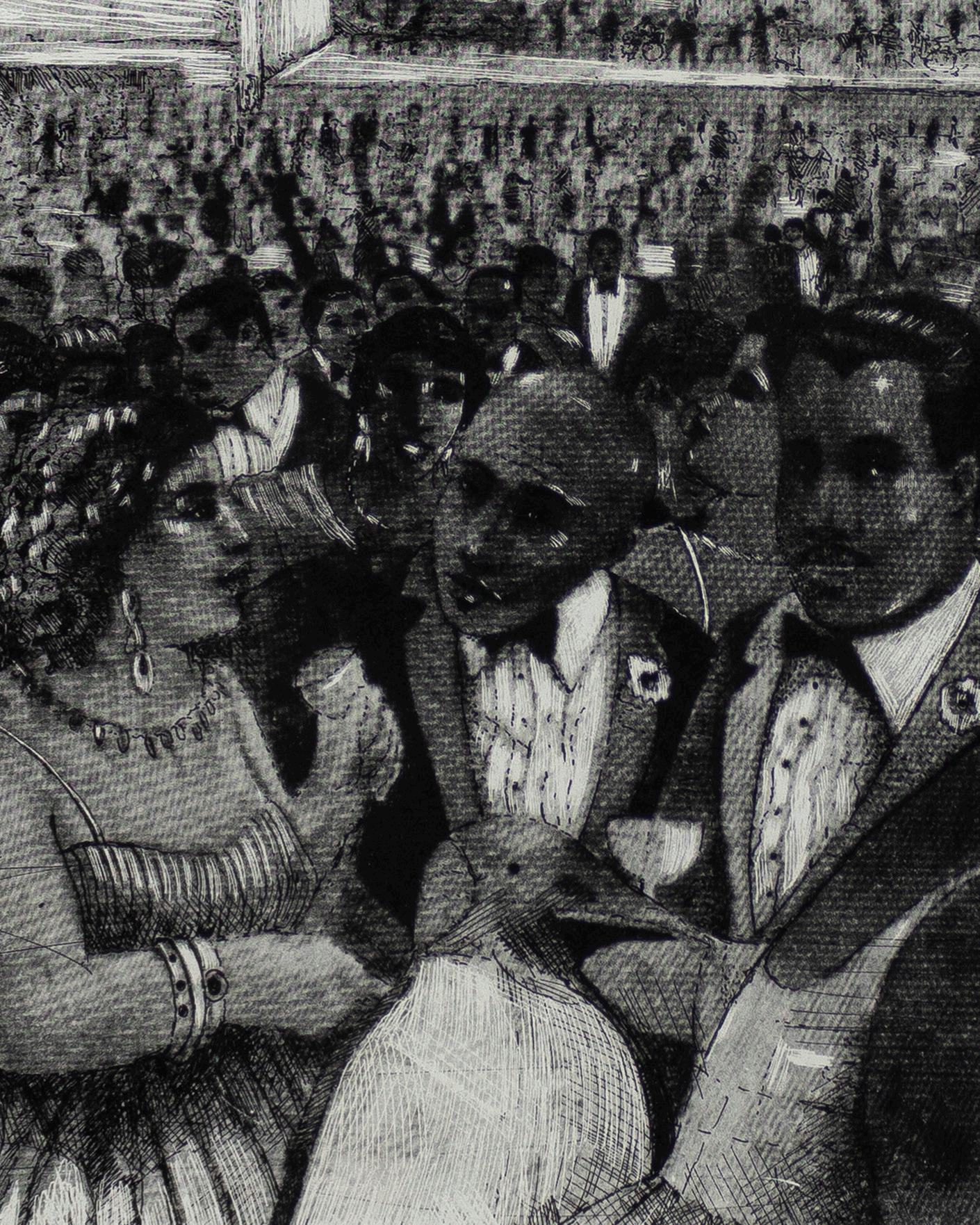
A gifted athlete, James Denmark was granted a scholarship to study at Florida A&M University, where he met and worked with Samella Lewis. Lewis invited many well-known African American artists to lecture there, so Denmark had the opportunity to meet them and gain insight into their work.
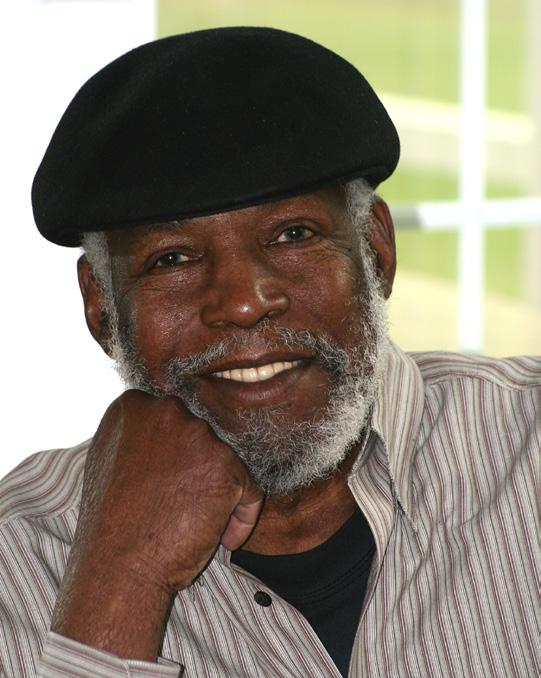
After a short hiatus from school, he enrolled at Pratt Institute of Fine Arts (M.F.A., 1976). He was highly influenced by the colorful collages of Jacob Lawrence, who was teaching at Pratt. Denmark snuck into many of Lawrence’s classes although he was not officially enrolled in them. Lawrence introduced Denmark to Romare Bearden and Al Hollingsworth. It was about this time Denmark moved away from charcoal and watercolor works and committed himself to the art of collage.
Denmark participated in several historically significant exhibitions, including Rebuttal to the Whitney; Afro-American Artists, New York and Boston; and Contemporary Black Artists, 1969. His collage, Black Odyssey (1980) was executed to commemorate the opening of the new Schomburg Center building in New York. His work is included in the collection of the Metropolitan Museum of Art.
Denmark was represented by Nigel Jackson at the Acts of Art Gallery, where he had four solo shows in the early 1970s. Jackson spoke of Denmark (and the gallery):
“
I want a big structure, I want a beautiful thing. I want somebody to be able to encourage a man like James Denmark who has done this kind of work, which is unique in itself, to encourage him, not to limit him.”
(REF: Acts of Art and Rebuttal in 1971, catalog accompanying the exhibition at Hunter College, Howard Singerman, 2018; essay by Clara Chapin, p. 71)

Donaldson was a principal figure in the Black Arts Movement. He was a co-founder of the Organization of Black American Culture (OBAC, pronounced, OBA-see), he was a contributor to the Wall of Respect in Chicago (1968), and co-founded AFRICOBRA (African Commune of Bad Relevant Artists).

He studied at University of Arkansas at Pine Bluff (BA) and the Institute of Design (Illinois Institute of Technology, also known as the New Bauhaus, in Chicago; MFA, 1963), and Northwestern University (Ph.D, 1974).
His work was recently featured in the exhibit, Soul of a Nation, Art in the Age of Black Power.

After studying and teaching in the Midwest, Aaron Douglas moved to New York City where he became a part of Alain Locke’s New Negro Movement. There, he studied with German/ American portrait artist, Winold Reiss, who encouraged Douglas to introduce African imagery and themes into his paintings. As Douglas developed this individual style, he became the figure to which the Harlem Renaissance aspired to emulate.
Aaron Douglas received two Rosenwald Fellowships, one for study in France and the other to tour Haiti and the American South. He was also elected president of the Harlem Artists Guild in 1935 and worked to obtain WPA recognition and support for African-American artists.
In 1937, he founded and chaired the Art Department at Fisk University in Nashville, Tennessee, where he remained involved until 1966. Douglas died in Nashville in 1979. His work may be found in the collections of Fisk University, Nashville, TN; Corcoran Gallery of Art, Washington D.C.; and the de Young Museum, San Francisco.
Aaron Douglas, African American Modernist, Susan Earle, Yale University Press, p. 92.
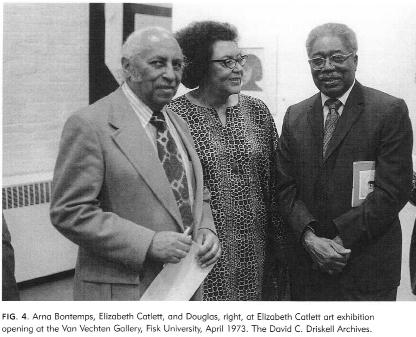 Photo:
Photo:
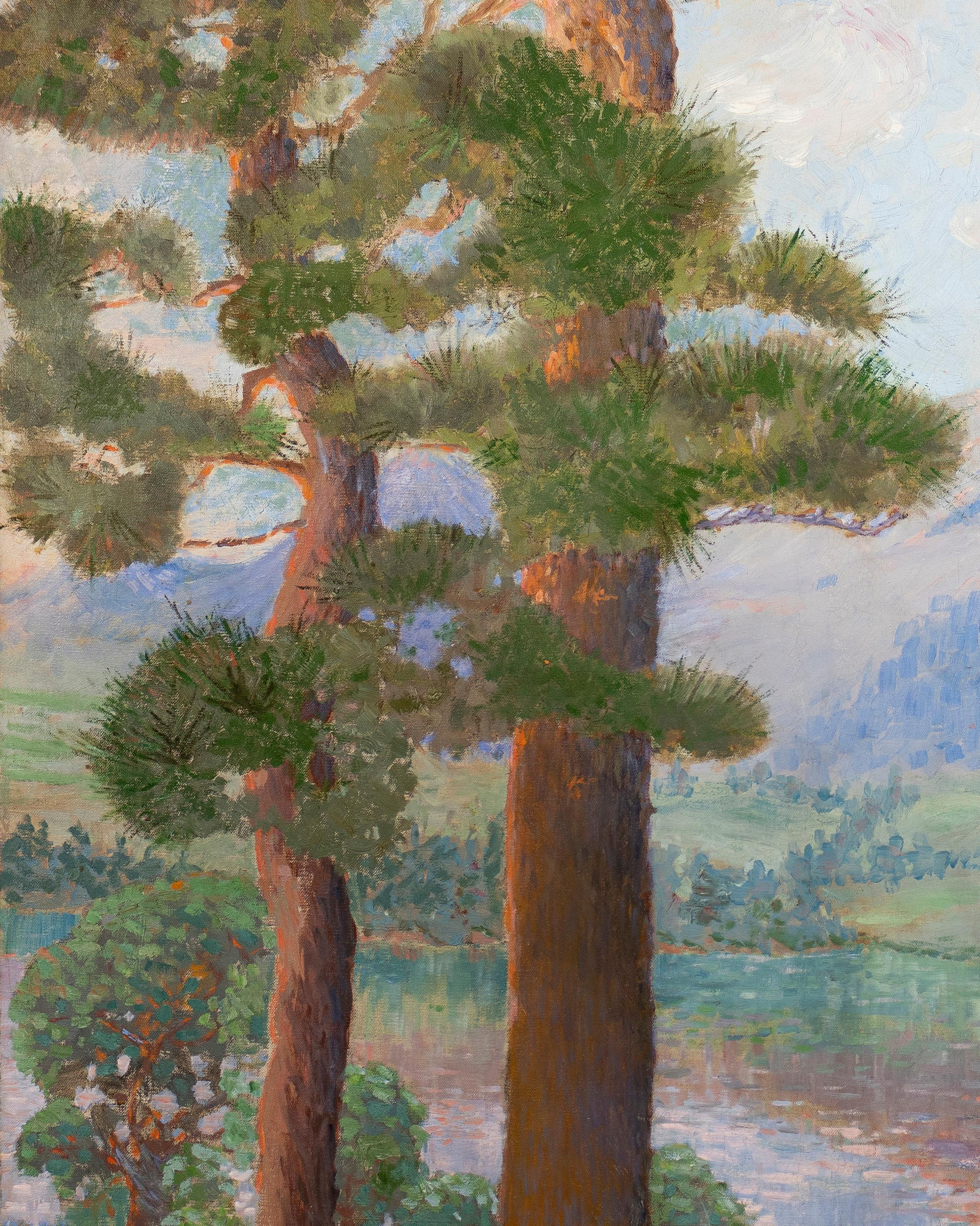
Artist, curator, scholar and distinguished professor emeritus David Driskell was born in Eatonton, GA in 1931. He completed the art program at the Skowhegan School of Painting and Sculpture, Maine, in 1953. He went on to attend Howard University and received his MFA from the Catholic University of America, Washington D.C. Prof. Driskell explored post-graduate study in art history at the Netherlands Institute for the History of Art in The Hague.

He began his career as an educator at Talledega College in 1955. In 1977, he joined the faculty at the University of Maryland, College Park, where he remained for the rest of his career. Upon his retirement, the David C. Driskell Center was established to honor his legacy and dedication to preserving the rich heritage of African American visual art and culture. In 1976, Prof. Driskell curated the important exhibition, Two Centuries of Black American Art: 1750- 1950, which was held at the Los Angeles County Museum of Art. He has authored multiple exhibition catalogs throughout his career.
As an artist, he works in collage and mixed media -oil paint, acrylic, egg tempera, gouache, ink, marker, and collage on paper and on canvas (stretched and unstretched). Prof. Driskell has worked with the Experimental Printmaking Institute of Lafayette college and Raven Editions. The exhibition, Evolution: Five Decades of Printmaking by David C. Driskell, held in 2009 at the High Museum of Art, GA was the first exhibition to highlight his printwork.
Prof. Driskell’s work has recently been included in David Driskell: Artist & Scholar of the African American Experience, Oct. 2019 - Jan. 2020, Morris Museum of Art, GA; David Driskell: Resonance, Paintings 1965-2002, 2019, DC Moore Gallery, NY.
His work has also been featured in the following group exhibitions: Riffs and Relations: African American Artists and the European Modernist Tradition, Feb. 29 - May 24, 2020, Phillips Collection, Washington D.C.; Tell Me Your Story, Feb. 8 - May 17, 2020, Kunsthal Kade, Amsterdam; The Seasons, Nov. 16, 2019 - March 1, 2020, Nassau County Museum of Art, NY; and Soul of a Nation: Art in the Age of Black Power, Museum of Fine Arts, Houston.
The University of Maryland’s David C. Driskell Center for the Study of Visual Arts and Culture of African Americans and African Diaspora is dedicating this academic year to commemorating its namesake’s life and work—combining teaching, art history scholarship and writing, and curation and the practice of art.
Photo: David Hills, Down East Magazine, March 2017

David Fludd was born in New York City in 1965. He attended Morehouse College, Atlanta, GA where he earned a BA in 1987, and Yale University, earning his MFA in 1991. Additionally, he studied printmaking at New York University and Skowhegan School of Painting and Sculpture. Fludd is also an accomplished pianist and composer.
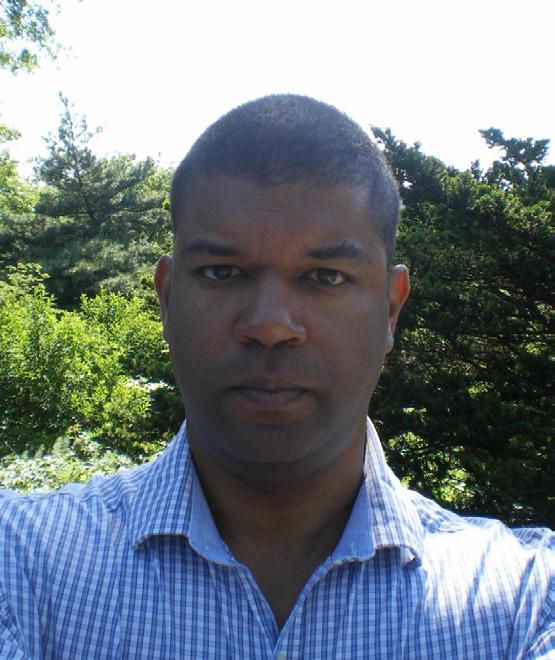
Fludd served as an artist in residence at the Studio Museum in Harlem in 1992. He was awarded a Solomon Guggenheim Fellowship in 1998 and the Rome Prize, 1999-2000, for study in Rome.
Fludd explains his singular approach to imagery as an exploration of the developmental discourse of painting. According to Fludd, his paintings probe reality itself.
Tradition Redefined: The Larry and Brenda Thompson Collection of African American Art, p. 48.
The layering and building of textures is apparent in my paintings. I am interested in creating textures and working with color as well as black and white. I see the process of printmaking and painting as being related.
Meet David Fludd, Main Street Arts, https:// mainstreetartscs.org/blog/air-david-fludd/
His work has been featured in two solo exhibitions at Sherry Washington Gallery, Detroit, MI in 2007 and 2010, New Works and Compositions: New Paintings; Tradition Redefined: The Larry and Brenda Thompson Collection of African American Art, David C. Driskell Center at the University of Maryland, College Park, 2009; and The Stroke: An Overview of Contemporary Painting Curated by Nine Painters, Exit Art, NY, 1999, among others.

I’m concerned about the future of the Black artist; the lasting effect of our work on our own children. It’s important that we, as artists, make some statements to affect change.
Originally from Harlem, Frazier studied at the Art Students League and Hofstra University. In 1980, he moved to Dallas and began working in silkscreen. He had hoped to make his art more affordable to people and make it easier to share his narrative. He uses swatches of vibrantly colored Kente cloth and figurines from Ghana and Upper Volta, as well as the Ashanti tribe. He has exhibited at Howard University; Martin Luther King, Jr Library, Dallas; and the Brooklyn Museum.
(REF: Hearne Fine Art, Arkansas)



Let experience be a part of you as a human being…Even though we’re black and we’ve been hurt by many people, we still have to give of ourselves. We sort of have to be universal. Nor do we lose blackness by being universal.
Gentry was born in Pittsburgh, but was raised in Harlem before WWII, where he had some exposure to art under the programs of the WPA. He served in the war, first in North Africa and then in Germany. He returned to Europe in the latter 1940s and attended the Ecoles des Beaux Arts and the Academie de la Grande in Paris. Gentry loved Paris and believed there were many similarities between Harlem and Paris—they were both “world cities”, with many languages and cultures—and all embraced enthusiastically.
Gentry was drawn to the European Cobra Group of painters, who practiced a bold, gestural, figurative form of expressionism, over the abstract expressionists who were
gathering great popularity in the United States in the mid-20th century. Eventually, he took up residence in Sweden, and divided his time between there and the U.S.

Sam Gilliam was born in Tupelo, Mississippi in 1933. Shortly after his birth, the family (Gilliam was one of eight children) moved to Louisville, KY where he was raised. Gilliam attended college at the University of Louisville, receiving a BFA in 1955. That same year his first solo exhibition was held at the university. He went on to serve in the Army and upon his return, began working towards his MFA.
After graduation, he taught for a year in the Louisville public schools until he moved to Washington D.C., where he continues to live today. Gilliam continued to teach in the Washington public schools as well as the Maryland Institute College of Art, University of Maryland and Carnegie Mellon University, Pittsburgh throughout his career.

By the time Gilliam arrived in Washington D.C. in 1962, the Washington Color School had been established and included Morris Louis, Kenneth Noland, and Thomas Downing. Gilliam met and became friends with Downing. Soon, his works became large, hard-edged abstractions. Everevolving, he continued to experiment with innovative methods - taping and pouring colors, folding and staining canvases. He
created beveled-edge paintings in which he stretched the canvas on a beveled frame, so that the painting appeared to emerge from the wall on which it was hung.
In 1965, he abandoned the frame and stretcher altogether and began draping and suspending his paint stained canvases much like hanging laundry on the clothesline. Each work could be improvised and rearranged at will. The first of these was displayed at the Corcoran Gallery of Art in 1969. Gilliam received numerous public and private commissions for his draped canvases. One of the largest of these was Seahorses in 1975. This six part work involved several hundred feet of paint stained canvas installed along the exterior walls of two adjacent wings of the Philadelphia Museum of Art. In 1972 he represented the US in the Venice Biennale.
By 1975, Gilliam began to create dynamic geometric collages influenced by Miles Davis and John Coltrane. In 1977, he produced similar collages in monochromatic black hues. Re-invention had been a consistent component in Gilliam’s work throughout his career - he constantly innovated, disrupted, and improvised and was still doing all of it until his death earlier this year.
Gilliam’s work is found in the collections of the National Museum of African American History and Culture, Washington D.C.; Museum of Modern Art, NY; Metropolitan Museum of Art, NY; Tate Modern, London; and Los Angeles County Museum of Art, among many others.
Recent exhibitions include: Soul of a Nation: Art in the Age of Black Power 1963-1983; Black: Color, Material, Concept, Studio Museum in Harlem, New York, 2015; Surface Matters, Edward H. Linde Gallery, Museum of Fine Arts, Boston, 2015; Affecting Presence and the Pursuit of Delicious Experiences, the Menil Collection, Houston, 2015.
A semi-permanent installation of Gilliam’s paintings is currently on view at Dia: Beacon, NY.
Photo: Sam Gilliam photographed on June 22, 2016 in Washington, D.C. (Marvin Joseph, Washington Post)

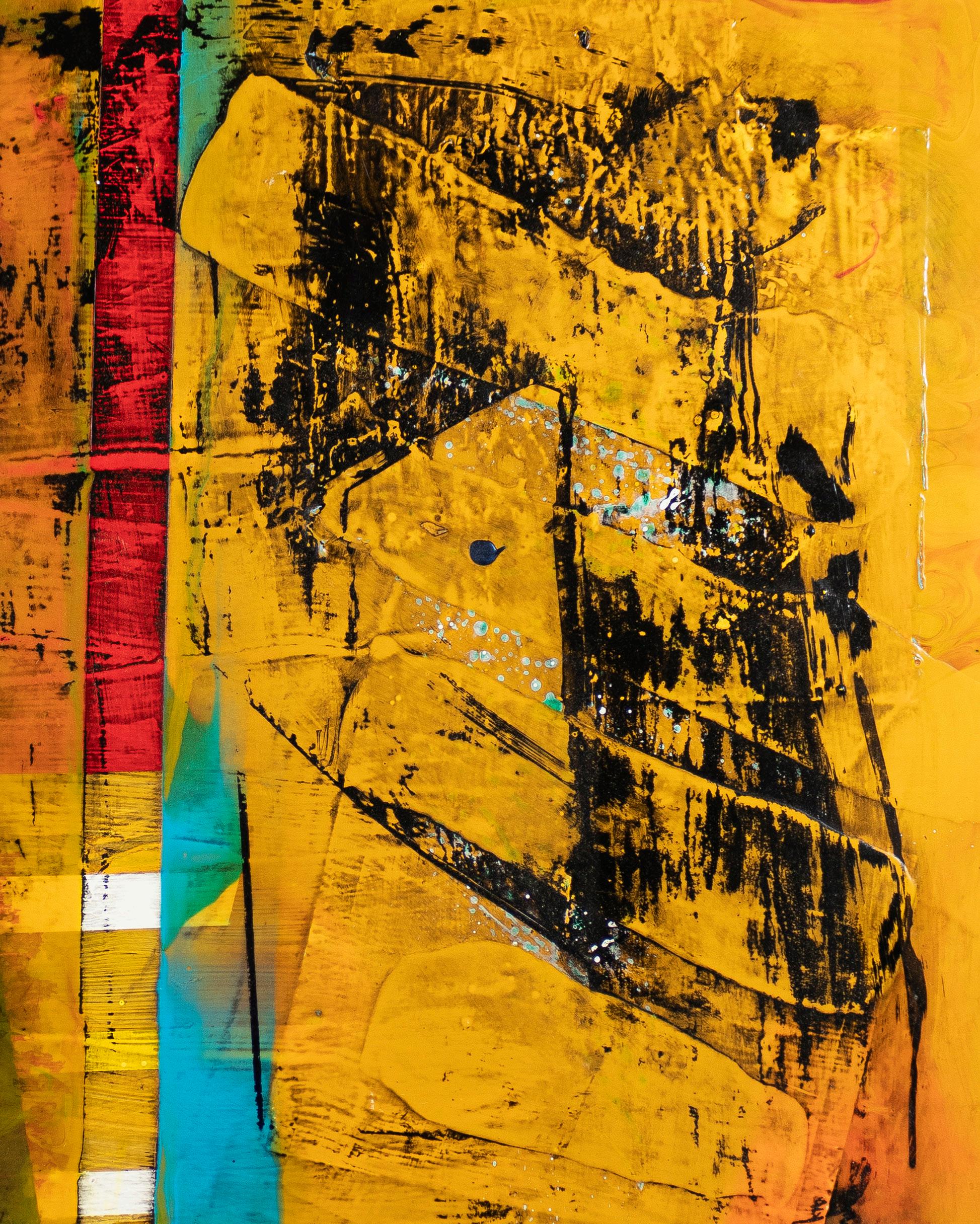
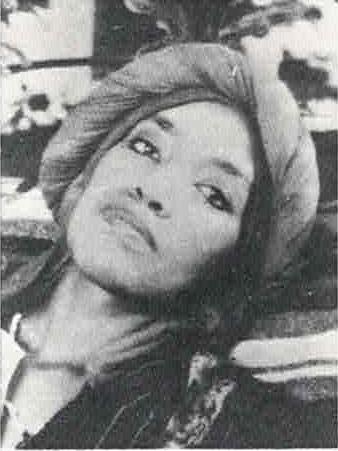
Born Cynthia Freeman, and also known as Nefertiti Goodman, Nefertiti has become best-known for her large, exquisitely produced relief prints. She studied at the Rhode Island School of Design in Providence (MFA, 1977) and the Massachusetts College of Art (BFA, 1974).
After graduating, she taught at the Elma Lewis School of Fine Art in Roxbury (founded in 1950), but after receiving a fellowship in printmaking from the New Jersey Council on the Arts, she left Boston for Nutley, New Jersey. She begins her printmaking process in black and white, and then embellishes the image with gouache and watercolor in jewel-like tones. She incorporates contrasting patterns in most of her works, sometimes within the subject and other times as a border to contain the image.
Her first major exhibition came in 1975 at the National Center of Afro-American Artists, National Arts Club, NY, although she was included in a group exhibition at the Museum of Fine Arts, Boston the previous year. She also exhibited in Jubilee: Afro-
American Artists on Afro-America, Museum of Fine Arts, Boston, 1975 (four works; Dream II was illustrated, along with a work by William H. Johnson, on p. 16 of the catalog).
Her work was also included in Choosing: An Exhibit of Changing Perspectives in Modern Art and Art Criticism by Black Americans, 1925-1985, sponsored by the Phillip Morris Companies (Jacqueline Fonvielle-Bontemps, curator, 1986; work, p. 106 of accompanying catalog).
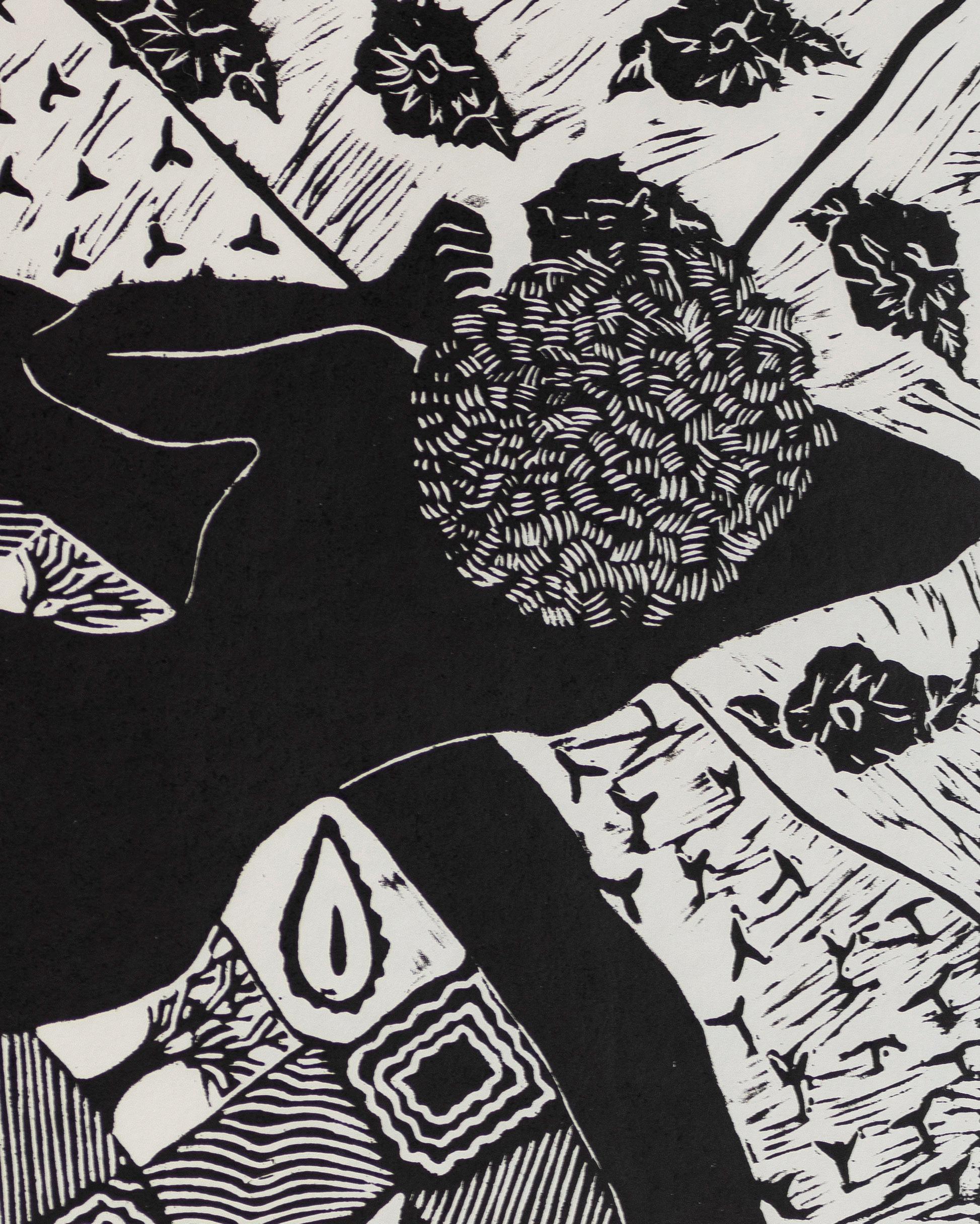
Artist Paul Goodnight was born in Chicago and raised largely on the East Coast. He was drafted during the Vietnam War and re turned with a complex case of PTSD which he worked through with art. He enrolled in the Vesper George School of Art. In 1976, he earned a BA from the Massachusetts College of Art. Goodnight was influenced by his teachers Paul Rahilley and Robert Cornier, and by Black artists, notably Nelson Stevens, Milton Derr, Gary Rickson, and Dana Chandler.
In addition to creating art, Goodnight has taught portrait drawing at the Massachusetts College of Art and worked with inmates through the Massachusetts Prison Arts Project. In 1991, he founded Color Circle Art Publishing which is dedicated to the perpetuation of the art and imagery of the African diaspora.
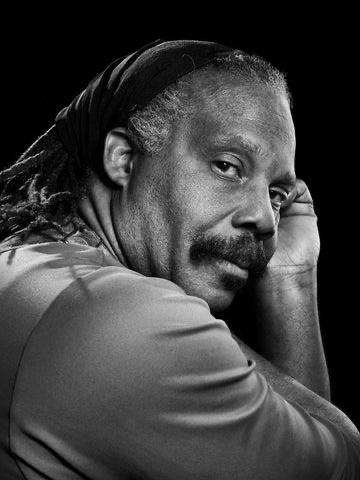
Goodnight’s work has been shown in four Atlanta Life National Art Competitions and Exhibitions, 1980, 1981, 1985, and 1990; Massachusetts Masters: Afro-American Artists, Museum of Fine Arts, Boston, 1988; Hear What I'm Seeing: Selected Works from the Art Collection of Donald Byrd,
University Gallery, University of Delaware, 2000; Free Within Ourselves: AfricanAmerican Artists in the Collection of the National Museum of American Art, National Museum of American Art, Washington DC, 1992; Collecting is Our Legacy: The Dorothy Wilson-Thompson Collection, Carl Van Vechten Gallery, Fisk University, 2011; among others.
The painting Hydrants, offered here, was pictured in, Richardson, Julieanna, “Paul Goodnight,” The International Review of African American Art, v. 5, no. 2, 1982, p. 40.


Painter, printmaker, and educator, Rex Goreleigh was born in Penllyn, Pennsylvania in 1902. At the age of eighteen, he moved to New York City where he began taking drawing classes while waiting tables to make ends meet. During one of his shifts, he happened to meet Diego Rivera, who invited him to watch him work on a mural he was painting at Rockefeller Center. After this, Goreleigh, who had previously been focused on a career in theater, decided to work in the visual arts. He received art instruction from the Art Students League in New York City, and in Paris, at L’Académie André L’Hote.
Under the auspices of the WPA, Goreleigh worked with Ben Shahn and taught at the Harlem Community Art Center - Jacob Lawrence and Robert Blackburn were among his students. He also established an artists community in Greensboro, North Carolina with Norman Lewis. In 1940, he and his wife re-located to Chicago where he served as director of the South Side Community Art Center. When his term ended, Goreleigh moved to New Jersey, be coming the director of the Princeton Group Arts from 1947 to 1953, and establishing a studio in a restored mill where he worked and taught classes.
Goreleigh’s work has been featured in the American Negro Exposition, 1940 as well as in exhibitions at the Harmon Foundation, NY, 1936; Pyramid Club, PA;, 1942; National Center of Afro-American Artists, Boston,1973; and the Studio Museum in Harlem, 1973, among others.

Bernard Goss was born in Sedalia, Missouri and became known as a painter, muralist, and printmaker. He studied at the University of Iowa, as well as the Art Institute of Chicago and the Institute of Design.
He married fellow artist Margaret Burroughs in 1939, and their coach-house flat became a social center, dubbed “little Bohemia,” for a wide and interracial circle of friends and colleagues. Burroughs and Goss worked together to help establish the South Side Community Art Center which opened in 1940, and later founded the DuSable Museum of Black History. Goss’s 1939 painting Musicians, appeared in Alain Locke’s, The Negro in Art.
His work has been featured in exhibitions at the Chicago Artists Group Galleries, 1938; American Negro Exposition, 1940; Howard University, 1941; WPA and the Black Artist: Chicago and New York, 1978; Illinois State Museum, The Flowering: African-American Artists and Friends in 1940s Chicago: A Look at the South Side Community Art Center. 1993; Koehnline Museum of Art, IL; Convergence: Jewish and African American Artists in Depression Era Chicago, 2008; Ohio Historical Center, 2010.
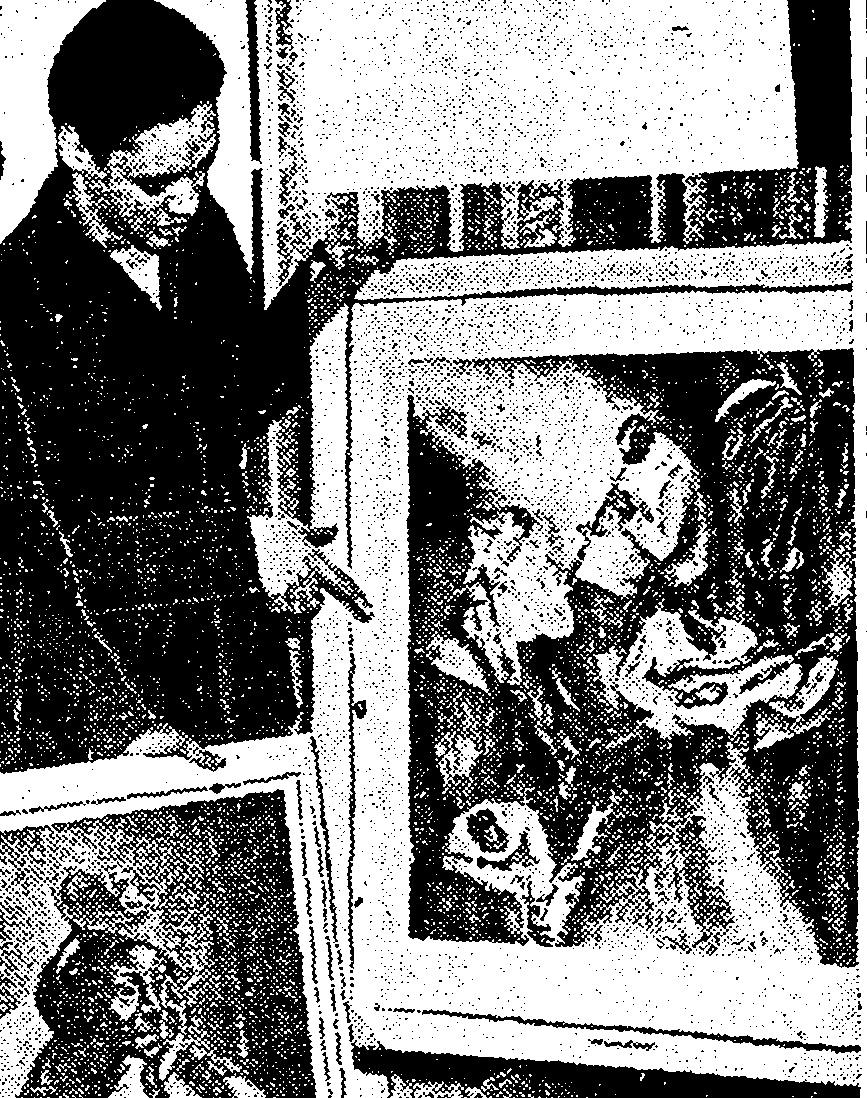
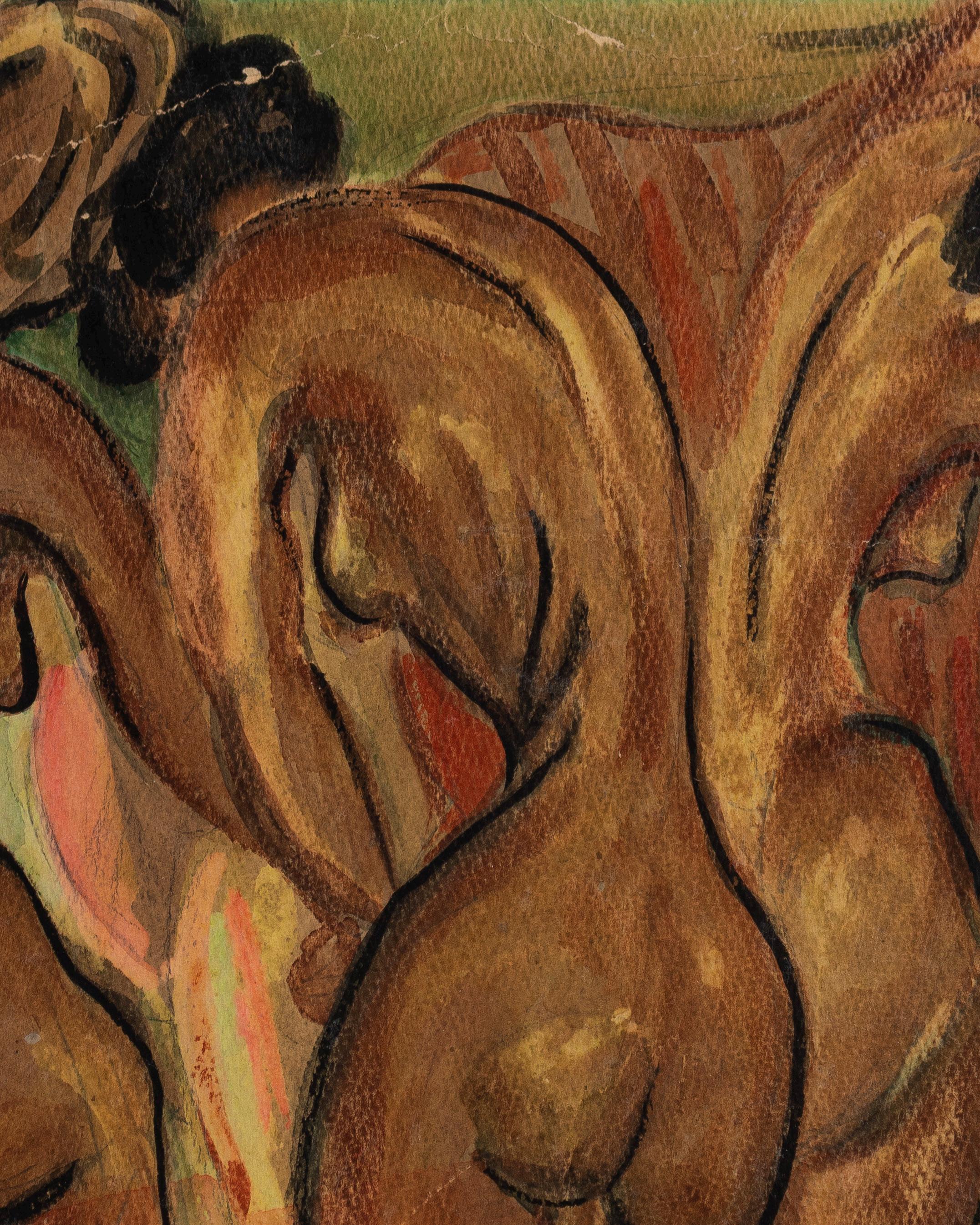
Jonathan Green was born in Gardens Corner, South Carolina, and raised in the home of his maternal grandmother, Eloise Stewart Johnson, where he learned the Gullah dialect and the culture of the Southeast. After a stint in the U.S. Air Force, Green studied at the Art Institute of Chicago (BFA, 1982). His work has been heavily influenced by his Gullah heritage.

The scenes he depicts in his work focus on themes of work, love, belonging, and spiritually in the African American experience.
The Kinsey Collection; Shared Treasures of Bernard and Shirley Kinsey, Where Art and History Intersect, p. 144-145.
Green’s work is included in the permanent collections of The Morris Museum; The Afro-American Museum of Philadelphia; The
Naples Museum of Art; Norton Museum, West Palm Beach, FL; Gibbes Museum of Art, Charleston, SC, and the IFCC Cultural Center, Portland, OR.
Gullah Images, The Art of Jonathan Green, was written by Pat Conroy in 1996.
For a video interview with Jonathan Green, please visit the following link, Seeking Jonathan Green.


Painter and printmaker J. Eugene Grigsby was born in Greensboro,North Carolina. As a boy, growing up in Charlotte, North Carolina, he met self taught painter and stonemason, Walker Foster, who invited him into his studio. This chance meeting showed Grigsby that African Americans could pursue art and in doing so would empower himself and others. At Morehouse College, he studied under Hale Woodruff. Like so many young African American artists, Grigsby found in him a mentor, and a lasting influence on his work throughout his career. After graduating, he pursued a Master of Arts at Ohio State University and a Ph.D at New York University. His doctoral thesis was a comparative study of masks from the Northwest American Indian Kwakiutl Tribe and the Kuba tribe of the Belgian Congo.
Early in his career, Grisby was known for creating scenes in oil or acrylics and woodcuts, lithographs and serigraphs that reflected his interest in depicting scenes of the everyday African American life. As the events of the 1960’s unfolded, he was inspired to create more socially conscious art that reflected the struggles and triumphs of African Americans in resisting racism and oppression. By 1972, Grigsby had been working as a visiting lecturer in Africa, and his work incorporated African themes.
Grigsby is internationally recognized as an educator and writer. In 1977, he wrote the text, Art and Ethnics: Background for Teaching Youth in a Pluralistic Society, featuring the visual arts of African Americans,
American Indians, and Latinos. It is highly regarded by both scholars and artists as a definitive work of the late 20th century. A revised edition was completed in 1997 which included Asian American visual art.
Grigsby continued to produce and show his work until his death in 2013. In 2001 a major retrospective of his work, The Art of Eugene Grigsby, Jr.: A Sixty-Five Year Retrospective, was held at the Phoenix Art Museum. In 2014, the Harvey B. Gantt Center for African American Arts and Culture in Charlotte, North Carolina held the exhibition, Selected Works of J. Eugene Grigsby, Jr.: Returning to Where the Artistic Seed was Planted, which showcased 30 works of art that spanned his entire career. His work may be found in the collections of Arizona State University Art Museum, Tempe; Delta Art Center, Winston-Salem, North Carolina; Malcolm X College, Chicago; Milwaukee Art Museum, Wisconsin; and Ohio State University, Columbus Ohio.
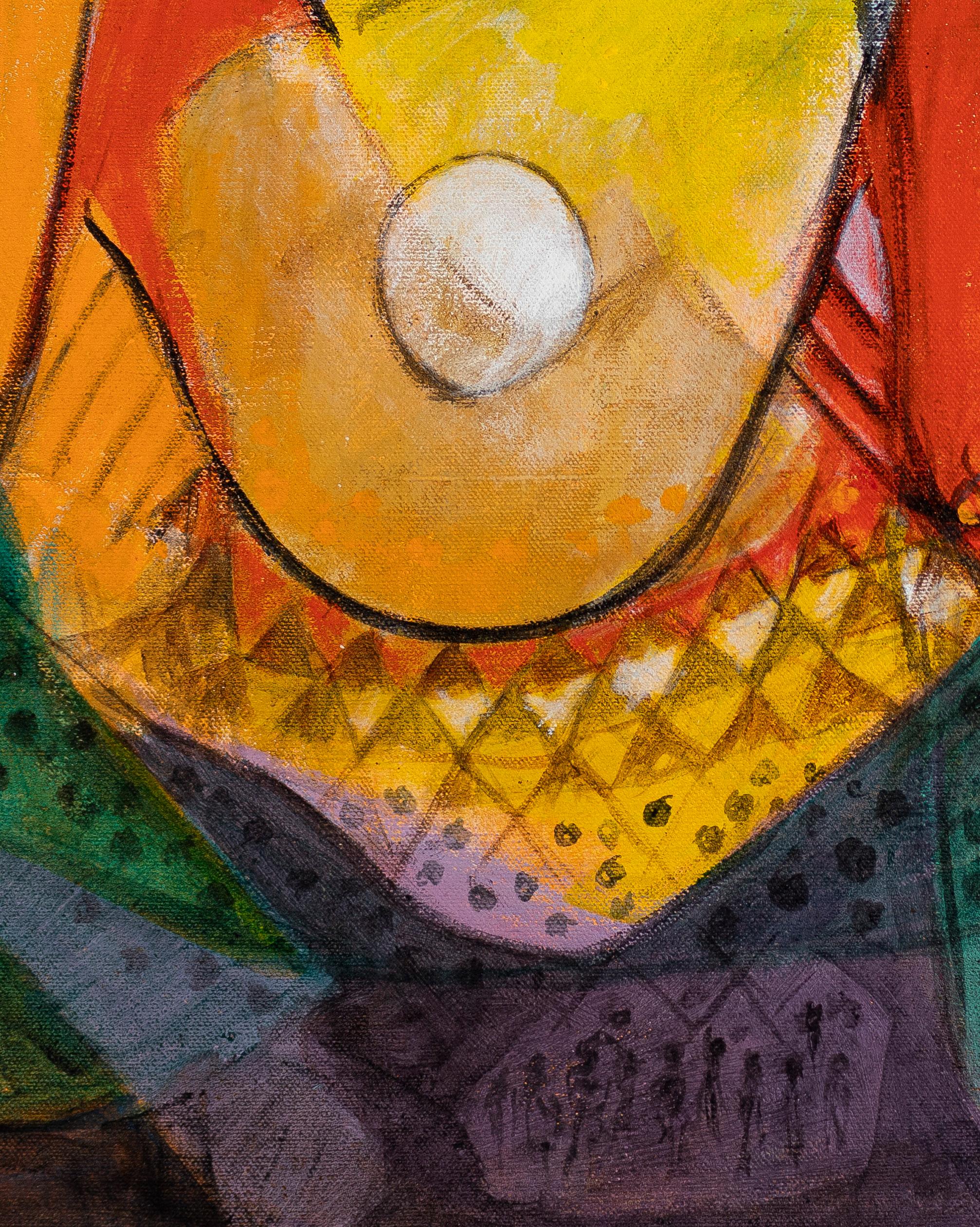
Artist and educator Phillip Hampton was born in 1922 and studied art at Drake University and the Kansas City Art Institute. In 1952, he began teaching at Savannah State College and was instrumental in developing their program in art and design.
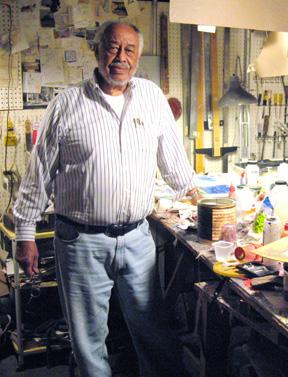
By 1969, Hampton had relocated to Southern Illinois University in Edwardsville, IL where he taught classes in printmaking, design, and painting. In each locale, he extended his reach to the community at large by teaching workshops, giving lectures, and writing articles.
During his tenure in Savannah, Hampton focused on figurative work and street scenes painted locally. In the 1960’s he began to explore abstraction, where he found that he was allowed to address the philosophical without the typical representational constraints. He continues to approach art in this way, inspired by the self-imposed question, “What is reality, and what makes reality real?”.
Hampton takes a scientific approach in examining various types of media and their properties. In the essay accompanying his solo exhibition of works at the Sheldon Art Galleries, Olivia Lahs-Gonzales describes the innovative techniques Hampton has used in his artwork and how they evolved for him through study and application. His goal was to combine these new techniques with socio-cultural research to create a new visual language that could be related to current issues. “One of the most ambitious applications of this idea,” Gonzales writes, “culminated in the multimedia polyptich work of 1980, Funky Rainbow Series. The
ambitious work, a combination of media and techniques that included collage, drawing, decal, painting, and shaped, printed Plexiglass, was a four-panel piece devised to swivel, fold, and tuck beautifully into a special box when not fully unfurled and on display.”
From 1950, Hampton’s work was exhibited extensively at venues such as the SmithMason Gallery of Art, Washington D.C.; Howard University, Washington D.C.; Atlanta University; Lincoln University, Jefferson City, MO; Telfair Academy, Savannah, GA; Southern Illinois University, Edwardsville, IL; Mid America Galleries, Kansas City, MO; A & M University, Alabama; Huntsville Museum of Art, Alabama, and the National Watercolor & Print Exhibition, Knoxville, TN.
A solo exhibition of his work titled, A Celebration of Vision: The Art of Phillip Hampton, was held at the Sheldon Art Galleries, St. Louis, MO in 2005. Hampton was also one of three artists featured in the 2008 exhibition, African American Abstraction: St. Louis Connections, at the Saint Louis Art Museum.
Illustrated:
Note: this work is not hanging in the physical exhibition, which runs from October 7, 2022-January 29, 2023.
 Feels Like Freedom, Phillip J. Hampton (1922-2016), Telfair Museum/Savannah State University, Savannah, Georgia. Catalog that accompanies the exhibition, p. 132.
Feels Like Freedom, Phillip J. Hampton (1922-2016), Telfair Museum/Savannah State University, Savannah, Georgia. Catalog that accompanies the exhibition, p. 132.
John Hardrick was born in Indianapolis to Shepard and Georgia Etta (West) Hardrick in 1891. He showed a talent for art as a young boy, and his work was brought to the attention of the owner of a local art store and framer, Herman Lieber, who helped the boy enroll in children’s classes at the John Herron School of Art (interestingly, many of the frames one will find on his paintings today were made by Lieber and bear the label).
As a teenager, he began studying with important Hoosier Group impressionist painters, William Forsyth and Otto Stark. He worked at a foundry at night to put himself through John Herron (he executed a well known painting of this subject matter, illustrated in the catalog for the exhibition, A Shared Heritage, Art by Four African Americans (Hardrick, Scott, Woodruff, and Majors), IMA, Warkel and Taylor, p. 59).
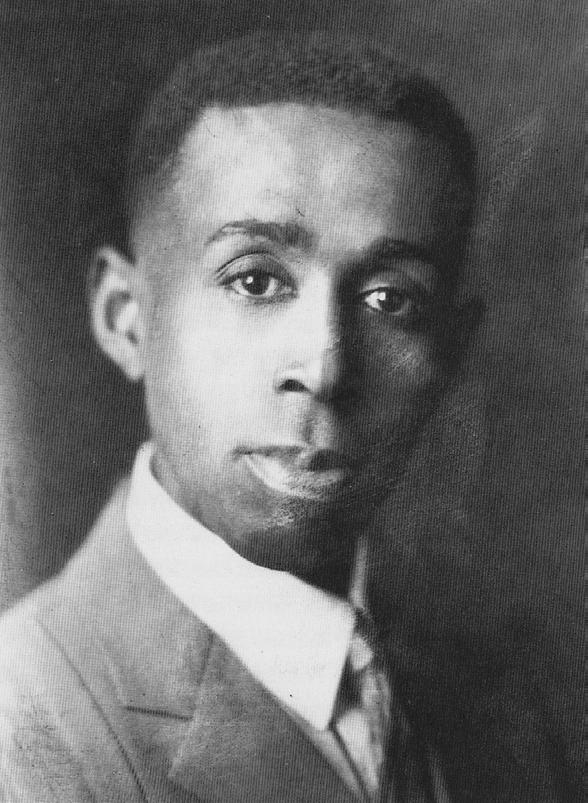
In 1914, he was married to Georgia Ann Howard and held his first exhibition, which was successful. He shared a studio on Indiana Avenue with Hale Woodruff for some of that year, but increased financial pressures caused him to stop painting, and take a job in his family’s trucking business.
When he resumed painting, he exhibited at the Art Institute of Chicago in
1927. One of his paintings, Little Brown Girl was purchased by a group of supportive black citizens and donated to the Herron Art Institute for their permanent collection. It currently hangs at the Indianapolis Museum of Art. He exhibited at the 2nd Annual Exhibition of Contemporary Negro Art in San Diego in 1928, and the catalog read: “In spite of acute poverty, this young man has the faculty of discerning beauty in everything, being able to face all his adversities with a smile that conceals the feeling within, at the same time he possesses a personality which strangely draws people to him.”
He also exhibited at the Hoosier Salon in
1929, 1931,and 1934, which were then held in Chicago at Marshall Field and Company. He won first prize for a portrait at the Indiana State Fair in 1934. He participated in the American Negro Exposition in Chicago, 1940.
The Civil Works Administration commissioned him to do a mural at the Crispus Attucks High School (the school where Irvena, the subject of this work, attended) in 1934, but it was rejected by the principal because it depicted black foundry workers, not doctors and lawyers.
Hardrick’s health declined by 1941, and he worked as a cab driver. He would keep supplies in the trunk of his cab, and while waiting for fares, quickly paint local street scenes; later, he would also offer the paintings for sale from the trunk of his cab. (REF: Tom Davis, research for the Crown Hill Cemetery, Indianapolis)
Hardrick’s landscapes are derived from the many trips he took to Brown County, about fifty miles from Indianapolis. He traveled to the area at the peak of the autumn season,
when the leaves were at the height of their color; during the summer when the sun was bright and hot; and in the winter when the ground was covered with snow. He did not sketch or paint during these visits . Instead, the artist took in the different scenes and committed them to memory. (REF: A Shared Heritage, Art by Four African Americans, IMA, Warkel and Taylor, p. 41).
He applied his paint very thickly, using a palette knife to create a tactile surface. He relied on a brush only to blend or add a shape, and use his thumb to mold the paint as if he were shaping a sculpture. (Ibid, p. 41) Hardrick worked quickly, beginning at the top of the canvas and working down. He was more concerned with the atmosphere and expression of the landscape than the descriptive qualities, thus following in the tradition of earlier African American landscape painters, Bannister and Duncanson. His landscapes were romanticized versions of his memories of his visits to the country. He blended his own paint when possible, and has a very distinctive palette.
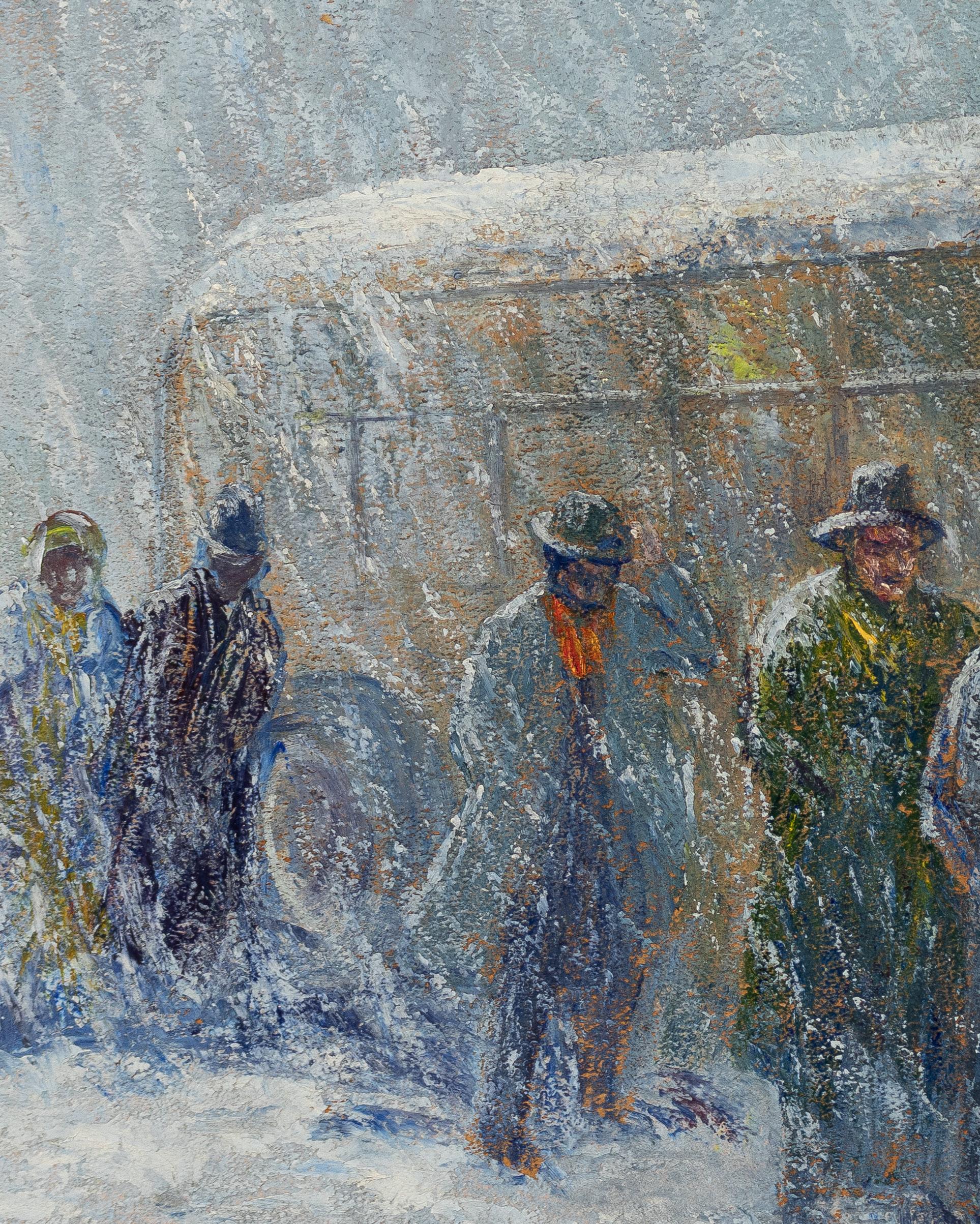

Born and raised in NYC, Verna Hart was introduced to none other than Romare Bearden by her father at the age of 8. Bearden remained a mentor to her, buying her work at her first exhibition. Hart took classes at the Cooper Union before graduating high school. She graduated from the Cooper Union School of Visual Arts in 1984, and earned a MFA in painting from Pratt Institute. In addition, she attended Bank Street College of Education.
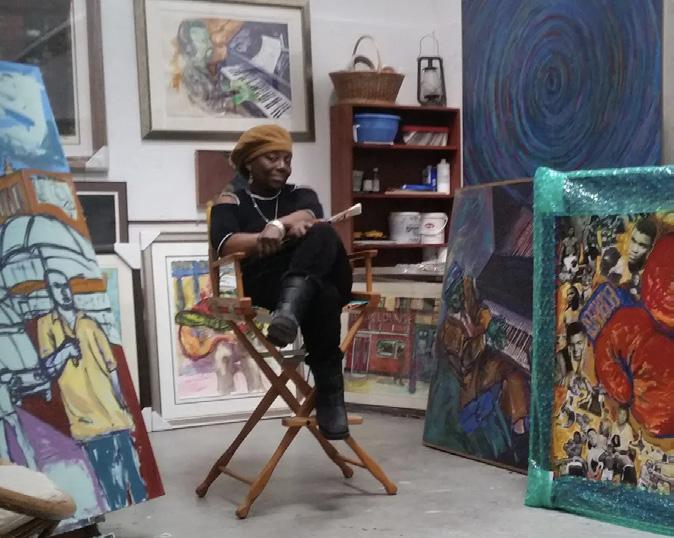
Hart taught at Springfield Gardens High School in Queens and at Medgar Evers College of the City University of New York in Brooklyn.
Her work was inspired by the rhythms of jazz and was featured in commissions for the Metropolitan Transportation Authority, faceted glass murals titled, Jammin’ Under the El, as well as a postage stamp in Anguilla, where her painting Fresh Catch won first place in its International Arts Festival in 1998. Her work appeared on the sets of movies and television shows — including Spike Lee’s 1990 film, Mo’ Better Blues for which he commissioned her Piano Man.
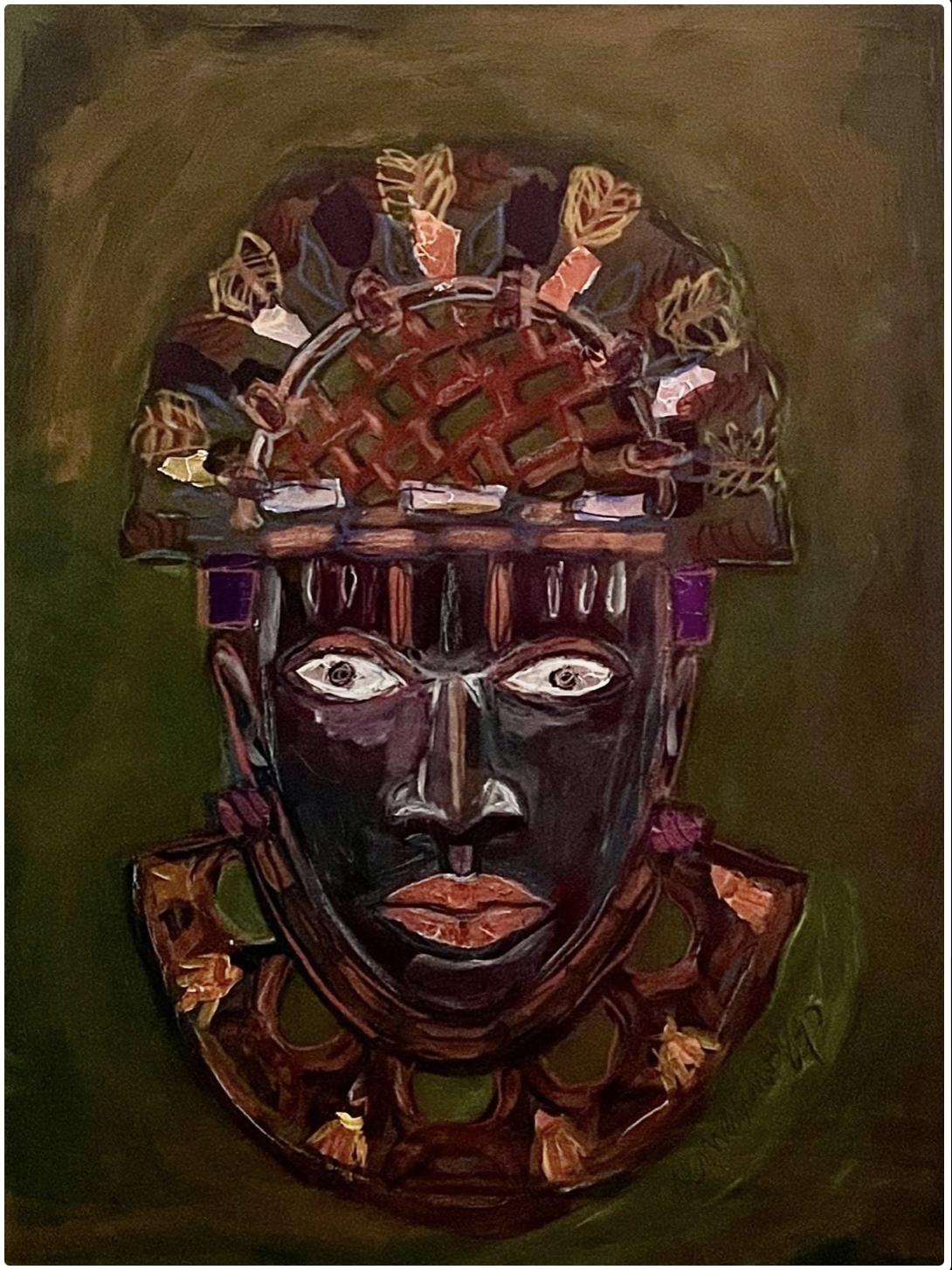
Painter and photographer best known for his portraits of young, urban men and women rendered in a realist or post-modern style, Barkley L. Hendricks was born in 1945 in north Philadelphia. He attended the Pennsylvania Academy of Fine Arts between 1963 and 1967 and graduated with a BFA and MFA from Yale University School of Art, where he studied photography with Walker Evans.
Hendricks was primarily a painter, his work incorporating photography more and more as his style evolved - rendering his subjects with exquisite detail to their clothing, shoes, jewelry, and other accoutrements. In 2008, his work was featured in the major exhibition, Barkley L. Hendricks: Birth of Cool, organized by Trevor Schoonmaker, contemporary curator at the Nasher Museum of Art at Duke University, NC.
Of Hendricks work, Schoonmaker said, “His bold portrayal of his subject’s attitude and style elevates the common person to celebrity status. Cool, empowering, and sometimes confrontational, Hendricks’ artistic privileging of a culturally complex black body has paved the way for today’s younger generation of artists.”
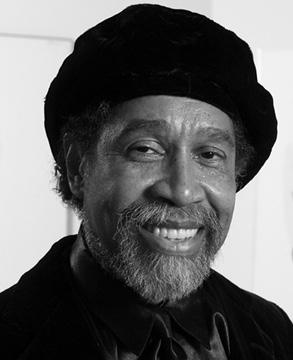
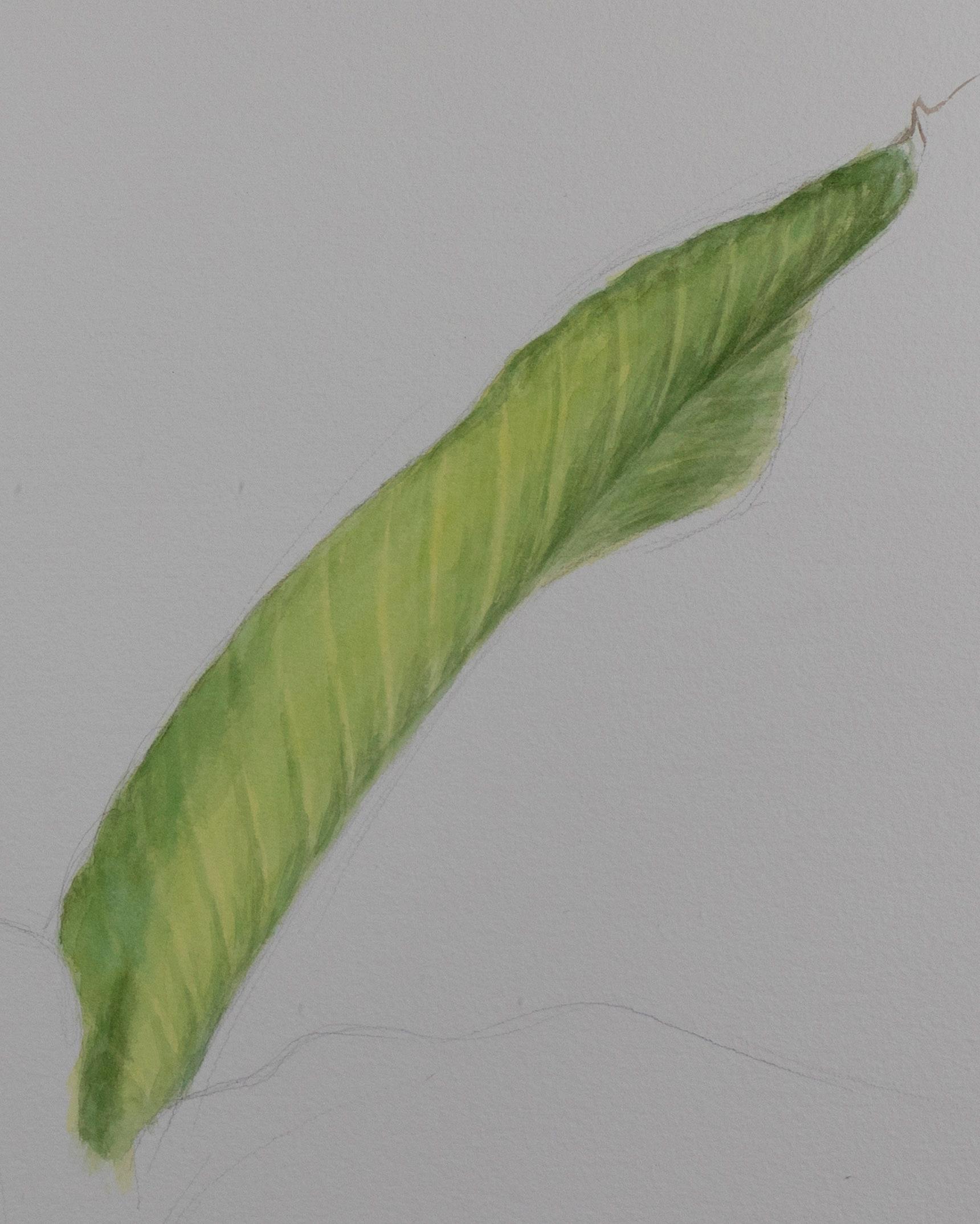
Hollingsworth was born in Harlem to Barbadian immigrants. While still a teen, he worked after school as an artist assistant at Holyoke Publishing Company for Catman Comics. Hollingsworth continued with his own syndicated comics in the early 1950’s while attending the College of the City of New York. He decided later to concentrate on fine art and began painting in an abstract expressionist style.
Hollingsworth tended to work in themesworking out his ideas in a variety of media. One of his themes was The Women. “I take my hat off doubly to the Black woman,” he was quoted in an interview published in Black Art, An International Quarterly (Fall 1977). “I wanted people to recognize the pride of women, the spiritual quality of wom en, the sacrifices of women.” Hollingsworth’s first one man show, Exodus, was held at the Ward Eggleston Gallery, NY in 1961. He produced paintings, drawings, and collag es both abstract and representational in style. Among Hollingsworth’s series were Cry City (1963-65), The Prophet Series (1970), and the Subconscious Series. He was a member of Spiral, along with other notable African American artists like Romare Bearden, Charles Alston, Earl Miller, Norman Lewis and Hale Woodruff.
Throughout his long and varied career, Hollingsworth also created and hosted the television show, You’re Part of Art on NBC in 1970, was an instructor at the Art Student’s League, and a professor at Eugenio Maria de Hostos Community College of the City University of New York.

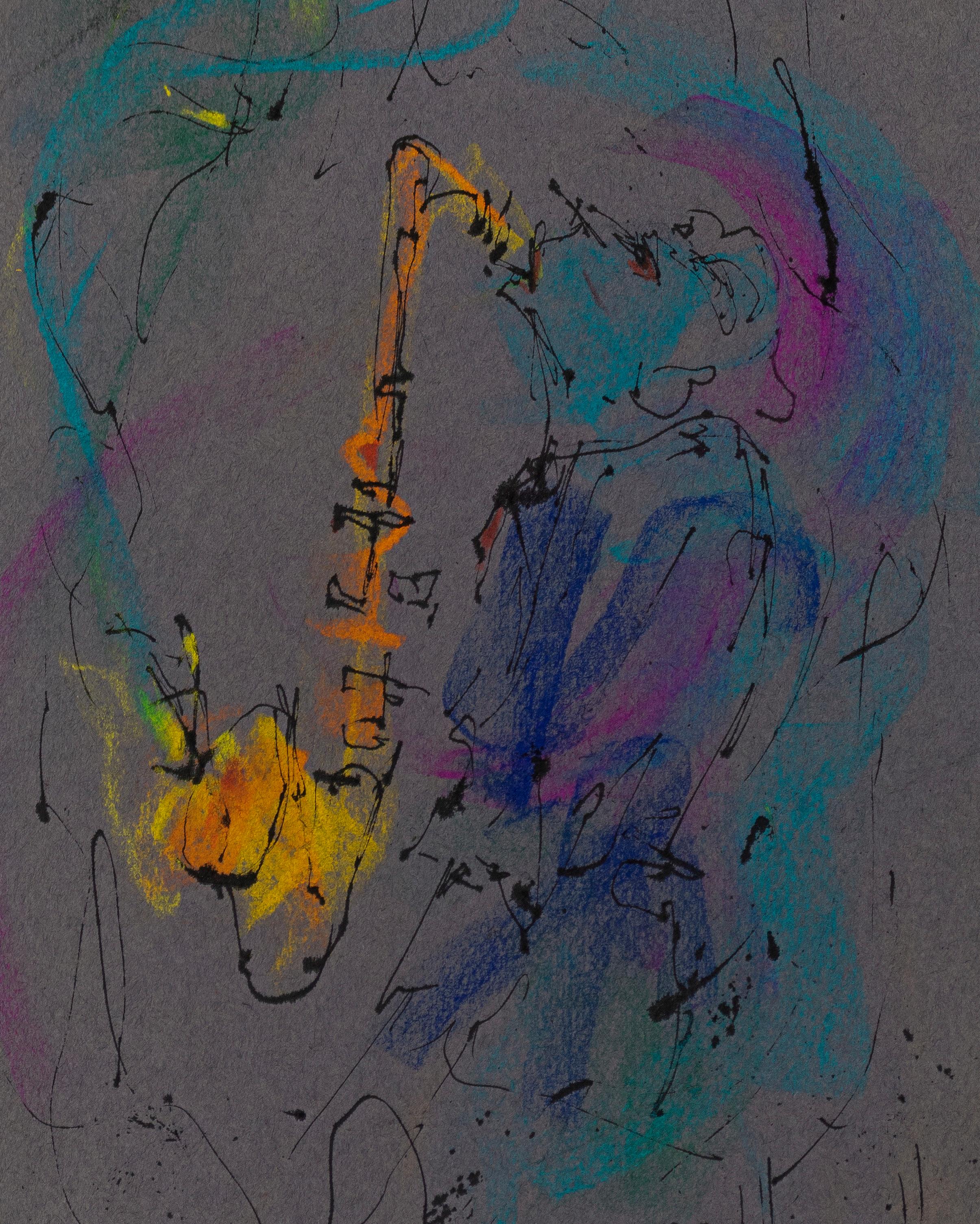
Herbert House is a sculptor best known for his innovative sculptures made of cut and welded chrome bumpers. House was raised in Washington DC, and attended an art centered high school that was a precursor to the Ellington School.
He went on to attend Illinois State University and after leaving school, apprenticed with sculptors who were making large scale metal works in Chicago, including Richard Hunt and Ed Love. It was at this time that he was introduced to the idea of using chrome bumpers for his sculptures. House would find material in wrecking yards, auto supply shops, and sometimes, even on the side of the road. After cutting the pieces, he would join them with an acetylene welding torch. He called these pieces, “sticks.”
When you’re pulling pieces and shapes, that’s when more of the ideas begin to flow. You know what you’ve got to work with. By the time I made the sticks, I could turn around and begin the work.
House found gallery representation and sold pieces in the United States and Europe. Howard University held an exhibition of his work in 1989. Washington Post critic Michael Welzenbach wrote:
House’s art is about form, mythos and archetype. Based on the female form, his figures are sensuous and remarkably erotic. . The characteristics of ceremonial masks and figurines are readily apparent, giving his works a mysterious, ritualistic aspect. And the gleaming, curvaceous quality of welded car parts lends them suppleness and tactility.
House was commissioned to create public sculptures for Illinois State University in 1974 (Untitled Abstract), and Howard University (Family Circle).
House found regular work as a carpenter and now considers himseld retired from both vocations, however he recently was coaxed out of retirement by Howard University to replace two figures in Family Circle that had been damaged.
REF: John Kelly, “Who Made the shiny car-bumper sculpture in an Adams Morgan park?”, The Washington Post, Nov 14, 2015.
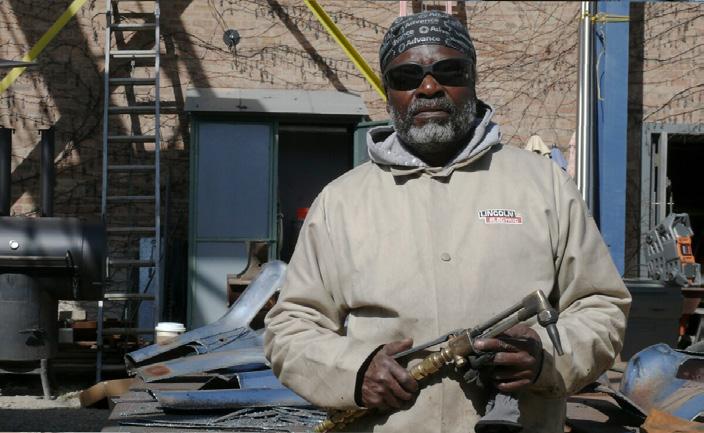
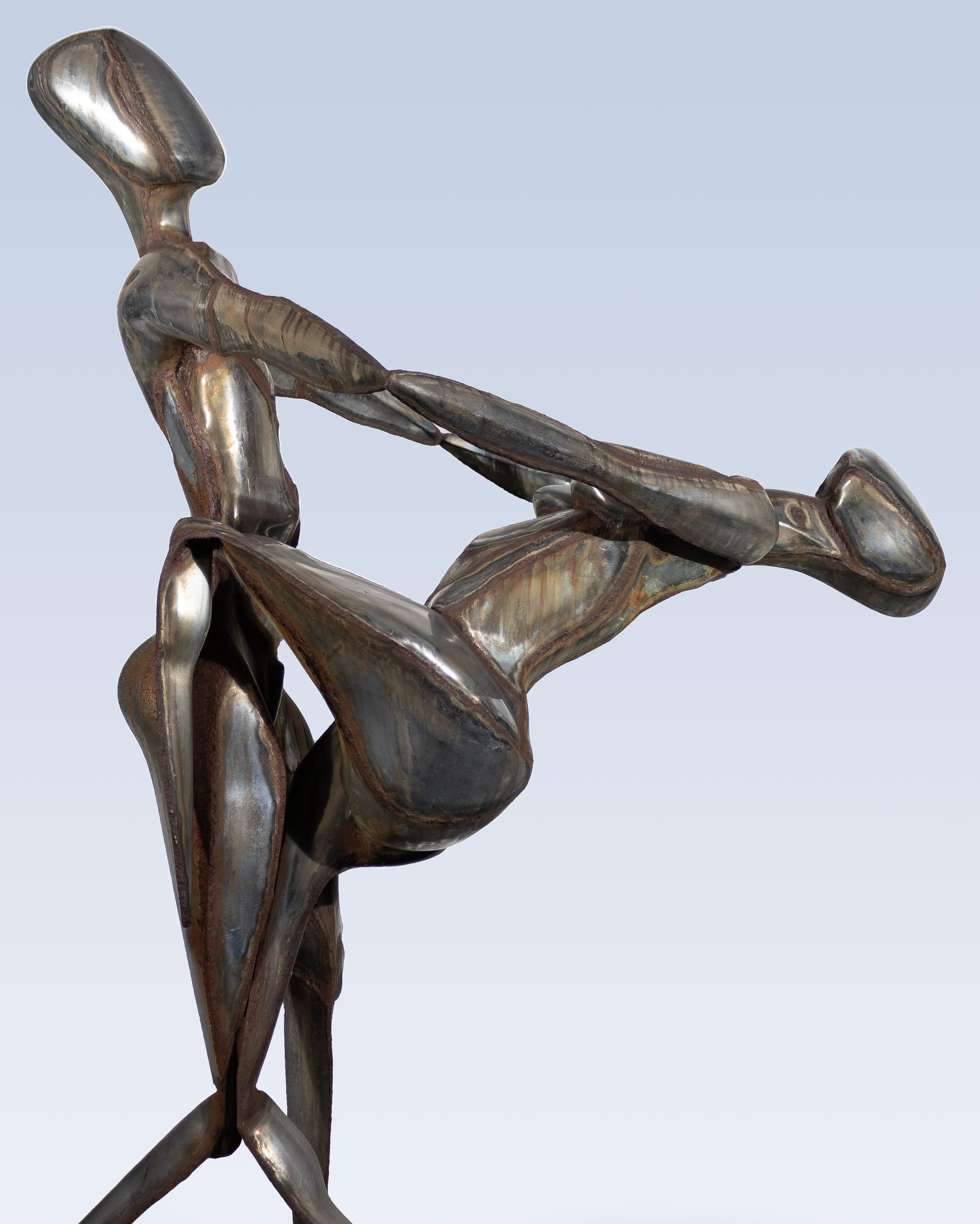
For more than three decades Richard Hunt’s status as the foremost AfricanAmerican abstract sculptor and artist of public sculpture has remained unchallenged. Executed in welded and cast steel, aluminum, copper, and bronze, Hunt’s abstract creations make frequent references to plant, human, and animal forms.

While attending the School of the Art Institute of Chicago, the Museum of Modern Art purchased his sculpture, Arachne. Since then Hunt’s work has been exhibited extensively. His first public commission was completed in 1959. His most recent public commission, The Light of Truth, Ida B. Wells National Monument, was unveiled July of 2021 in Chicago’s Bronzeville neighborhood.
Throughout his career, Hunt has created Swing Low for the National Museum of African American History and Culture; I Have Been to the Mountaintop, MLK Memorial, Memphis; Hero Constuction, Art Institute of Chicago; Spiral Odyssey, Romare Bearden Park, Charlotte, NC, among others.
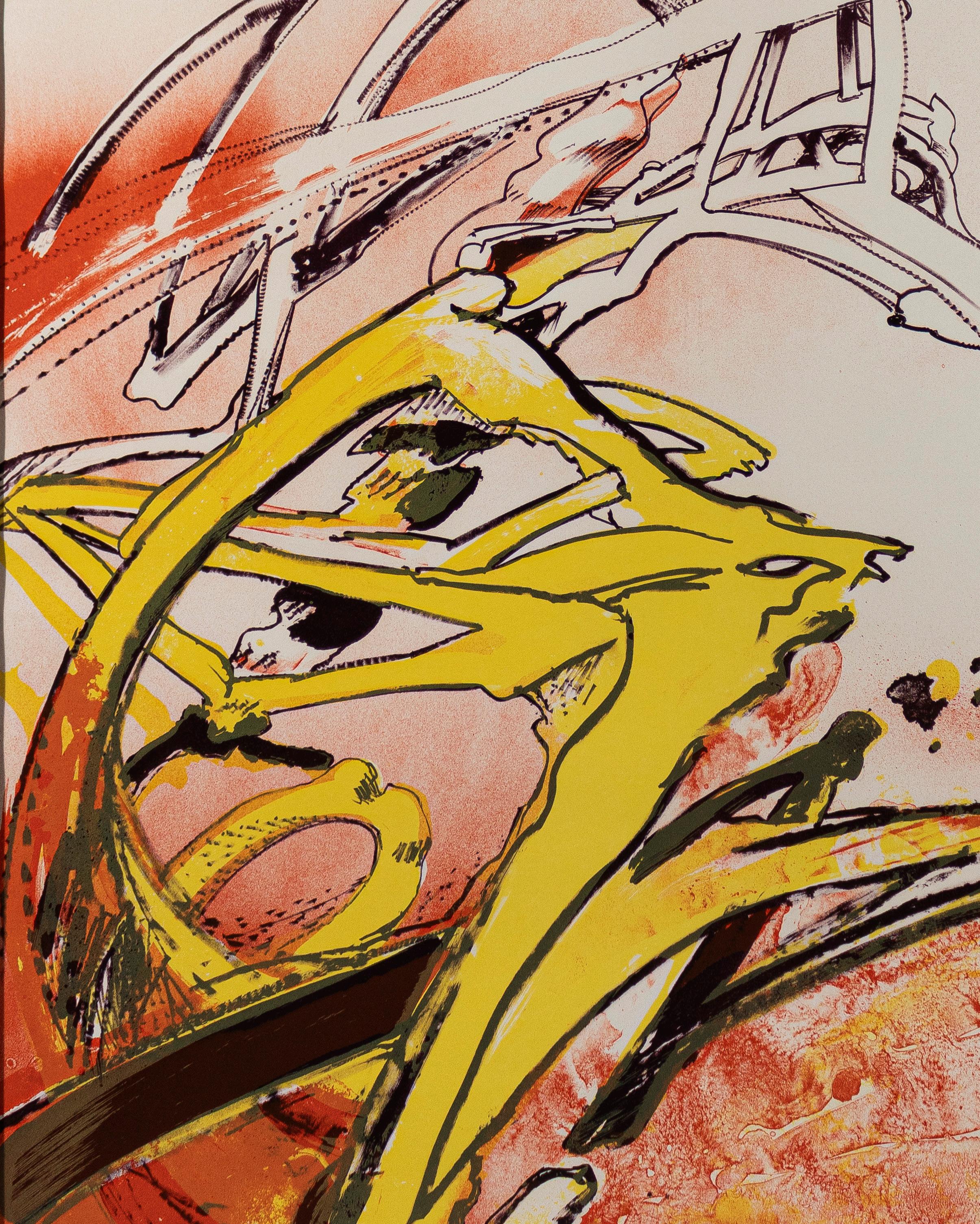
Clifford Jackson was a visual artist and jazz musician. Like many of his contemporaries, such as Walter Williams, Harold Cousins, Harvey Cropper, Larry Potter, Sam Middleton, Herb Gentry, and Earl B. Miller, he chose to work in Scandinavia, rather than lose opportunities due to racial inequalities in the United States. He studied at the Royal Academy in Stockholm and his work is in the collection of the Sundsvall Museum, Sweden. Jackson’s work was included in the 1964 exhibition 10 American Negro Artists Living and Working in Europe in Copenhagen.
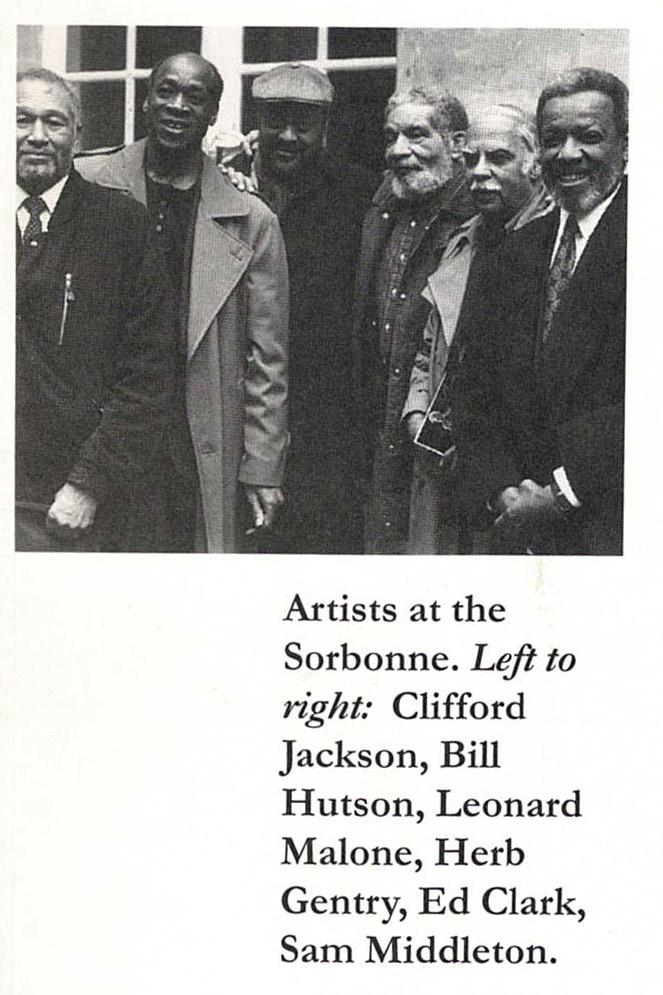
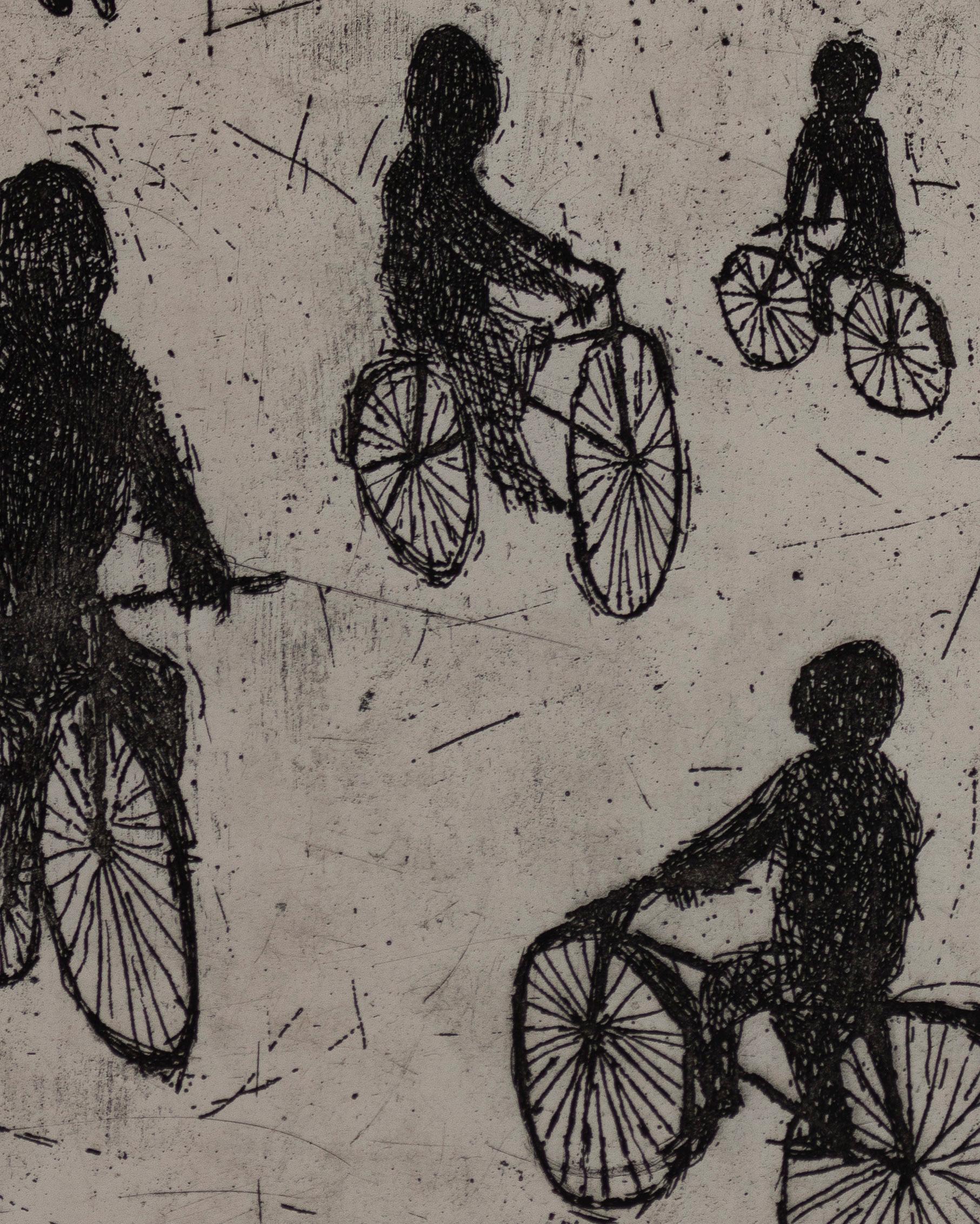
Harlan Jackson was born in Cleburne, TX in 1918. He moved to Hutchinson KS and attended Kansas State Teacher’s College to major in art. Shortly before WWII, he returned to Texas and worked as a cartoonist for the Houston Informer. During the war, he served in the Navy. After the war, he briefly joined the Harlem Globetrotters as a part of their backup team. Jackson’s talents in basketball were less impressive than his artistic ones, so when the G. I. Bill afforded him the opportunity to continue his education, he pursued it.
He enrolled at the California School of Fine Art, where he studied with Abstract Expressionists Clyfford Still, Mark Rothko (Rothko taught in San Francisco during the summers of 1947 and 1949 and had the use of Still’s studio), Clay Spohn, and David Park. His notable classmates were John Grillo and James Keeney. In San Francisco, Jackson listened to bebop and met Maya Deren (a Ukrainian surrealist film-maker who influenced Jackson. The function of film, Deren believed, like most art forms, was to create an experience; each one of her films would evoke new conclusions, lending her focus to be dynamic and always-evolving. She combined her interests in dance, Haitian
Vodou and subjective psychology in a series of surreal, perceptual, black and white short films. Jackson contributed to and acted in a short surrealist film titled The Cage, authored by his friend Keeney in 1947), saw Katherine Dunham perform (Dunham’s modern interpretive dance influenced the art of both Jackson and Thelma Johnson Streat), and with James Budd Dixon, started the North Beach Art Gallery, an artist’s cooperative. His first one-person show was at the Artist’s Guild in 1947. At this time the only recognized African American artist on the West Coast was Sargent Johnson. Jackson was quickly accepted and represented in shows sponsored by the San Francisco Art Association at the city art museum in 1946, 1948, and 1951.
Jackson received a Rosenberg Traveling Fellowship in 1948 which enabled him to live and work in Haiti. It was here he met and befriended the artist Eldzier Cortor. Jackson renewed his acquaintance with Maya Deren in Haiti. During this period his works were notable for their deconstruction and reconstruction of Haitian masks and motifs using cubist elements.
Upon his return, he studied at the Hans Hoffman School of Fine Art (1950-1), and shared a studio in NYC with Lilly Fenichel, another Abstract expressionist artist from California. Jackson and Fenichel frequented the Cedar Tavern in Greenwich Village, wellknown as a hang out of painters Rothko, Kline, Pollock and Resnick.

Eventually, Jackson and his wife, Jaki, moved to the Hamptons, across the street from painter Willem de Kooning, and among a community of Ab-ex artists: Motherwell, Pollock, Krasner, and Rothko. He continued to focus on works of experimental abstraction until the mid-1970’s. At this time his religious convictions began to preclude his artistic inclinations. Harlan Jackson died in relative obscurity in 1993.
Roberta Smith wrote a review for the NY Times regarding the exhibition, The Search For Freedom: African American Abstract Painting 1945-1975; Kenkeleba House, NY (1991), and mentioned Jackson’s work: “Stronger still in touch and composition are the semi-abstract mask images, also from the late 40’s, by Harlan Jackson, a painter born in 1918 who studied with Mark Rothko. In these highly tactile works, Picasso’s dissections of the human face, themselves inspired by African masks, are turned into attenuated abstractions whose facial features announce themselves slowly.”
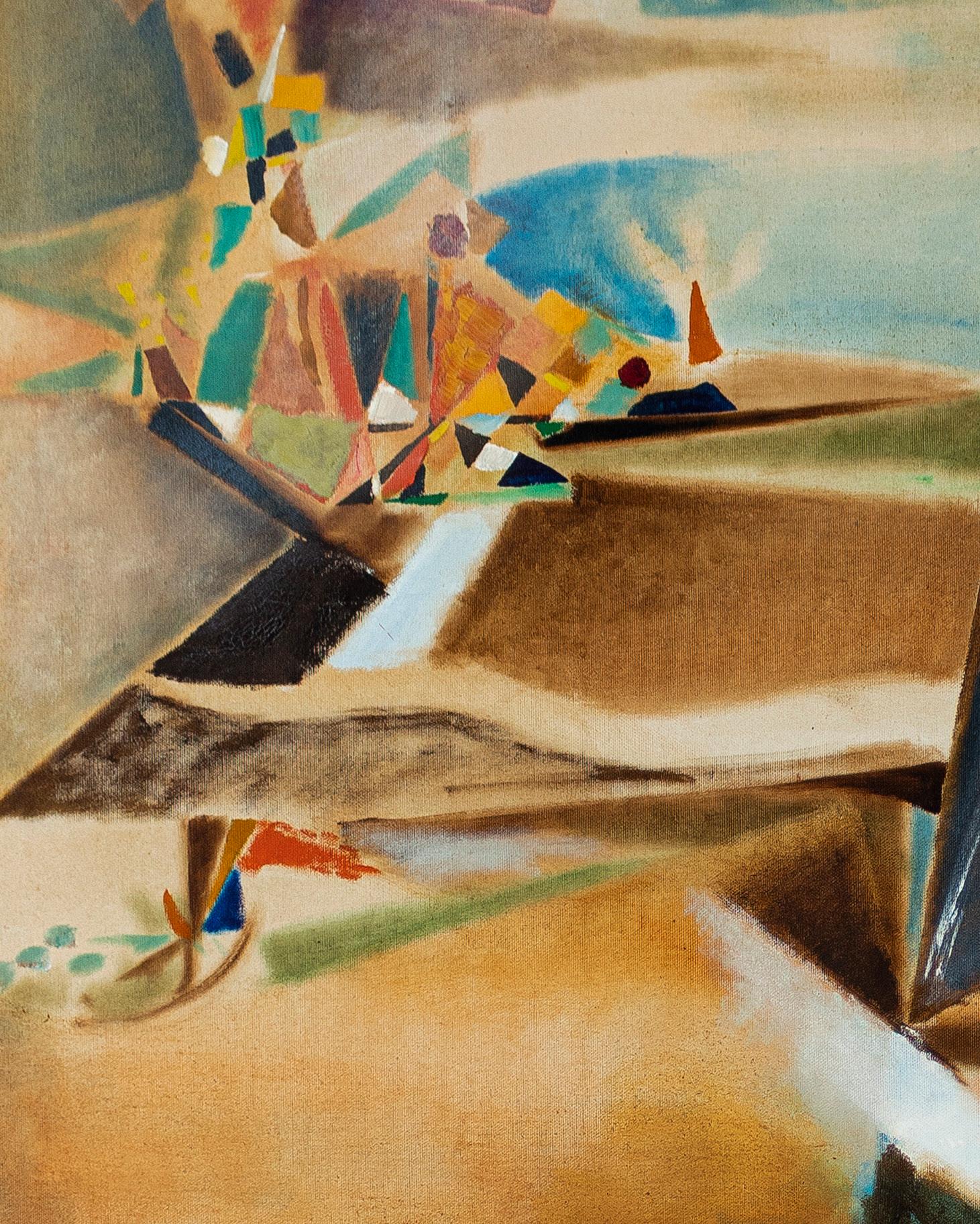

Johnson was born in Jacksonville, FL and was self-taught as an artist. Johnson had a very turbulent youth and was in reform schools and prisons, including Sing-Sing and Attica. He took advantage of the art programs at the prisons. Artists like Cliff Joseph and Benny Andrews created programs of art therapy for the New York State prison system, and Johnson was one of the benefactors. Johnson painted a portrait of Louis Armstrong in Attica that received critical praise, and that encouragement turned his life around. “I felt things were happening and wanted to start to dictate my whereabouts...After the Louis Armstrong piece I knew I had to come home, to change, and I did.” (Syncopated Rhythms 20th Century African American Art from the George & Joyce Wein Collection, Boston University, 2005, p. 57).
Gallery director Felice Balay and her husband Roland (former president of Knoedler Gallery) saw a television show featuring Johnson’s work and arranged a show for him at Wildenstein Gallery (1979).
Johnson’s works are in the collections of Malcolm Forbes and Camille O. And William H. Cosby, and were featured on the set of The Cosby Show.
More recently, his work was included in Black Romantic, Studio Museum in Harlem, 2002, p. 83; and Black New York Artists of the 20th Century Selections from the Schomburg Center Collections, NYPL, 1998; p. 47.
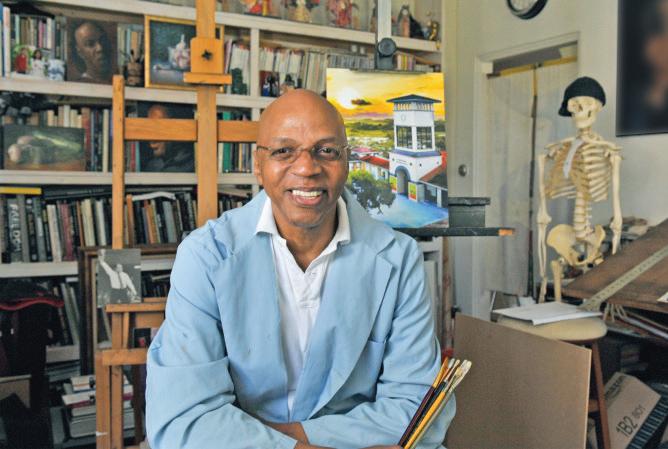
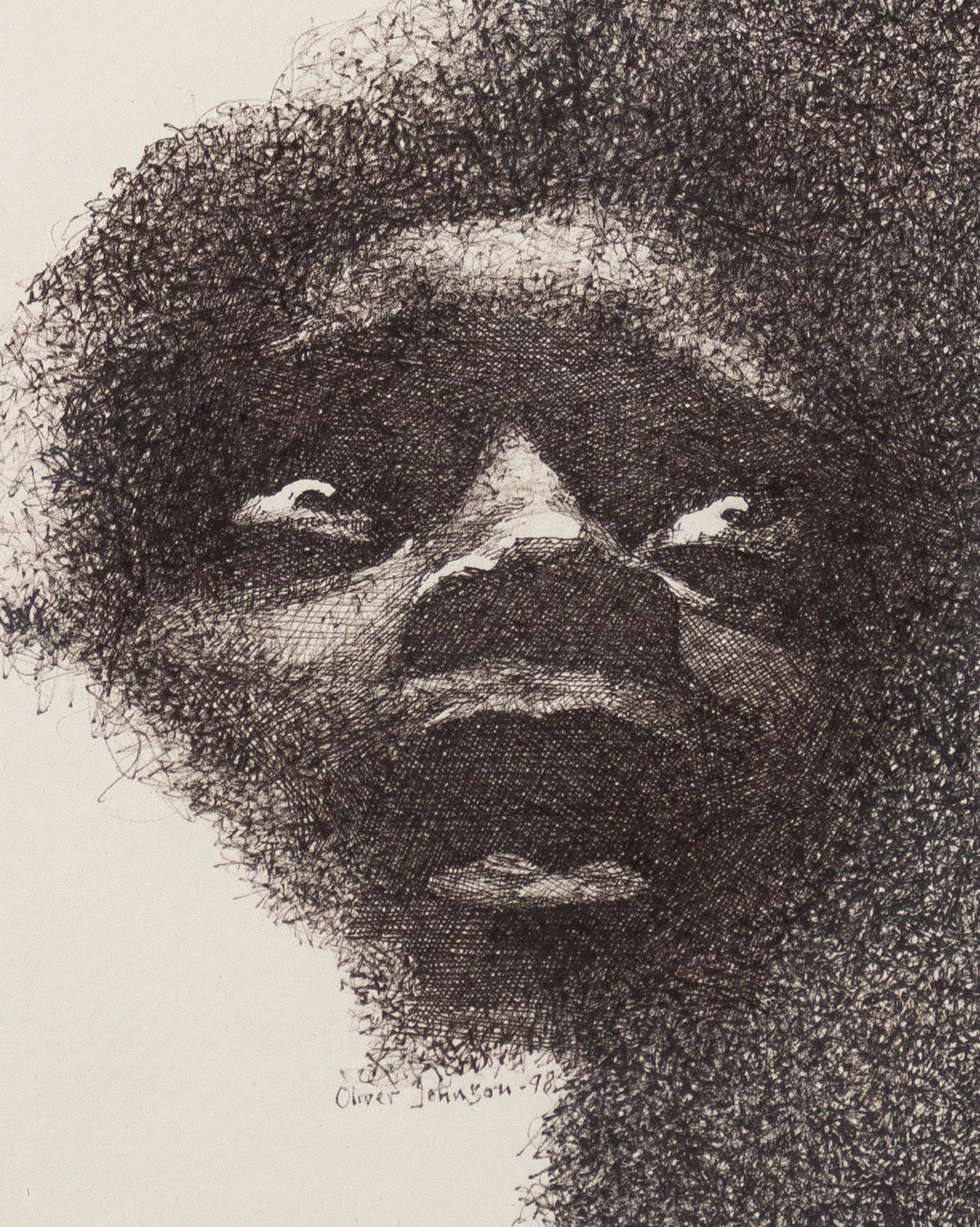
William Henry Johnson was born in Florence, South Carolina in 1901. His mother, Alice Johnson, was of African American and Native American ancestry and his father (who was not married to his mother) was white. Alice soon married a local African American man and they had four additional children. William was interested in drawing at an early age, copying cartoon characters. When he was 18, he dropped out of school and accompanied his uncle to New York in search of better job opportunities. Two years later, when he was 20 years old, he had saved enough money to enroll at the National Academy of Design to study art. Johnson showed tremendous promise at the NAD and came to the attention of two well-respected painters, Charles Hawthorne and George Luks. They mentored him and raised enough money forJohnson to travel to Paris. Hawthorne suggested Johnson might have more success as a black artist in Europe initially, and upon proving himself there, possibly return to the States.
One of Johnson’s greatest influences in France was the work of Chaim Soutine. Soutine’s paintings were a step further than the Ashcan style works of Luks; they were Expressionist, and full of energy and emotion. Landscapes, seascapes and buildings were frenzied, distorted and thickly painted. Johnson moved to the South of France to Cagnes-sur-Mer, where
Soutine had worked. This work shares two very obvious characteristics with the work of Soutine: the red/pink palette and the “accordion-like” composition of trees and buildings.
In 1929, Johnson met a Danish tapestry weaver and ceramicist named Holcha Krake. Holcha and her sister and brother-in-law were preparing to tour Europe’s museums and art centers, and invited William to come along. Eventually, the group returned to Holcha’s home of Odense, Denmark.
Johnson married Holcha in 1930, and they lived in Kerteminde, a Danish fishing village.
Johnson admired the woodcut prints made by the Expressionists, especially the German, Max Beckmann, and the Norwegian, Edvard Munch, and this work reveals the influence of artists such as these on not only Johnson’s style, but also his choice of medium. Johnson met Munch in 1932, introduced by Pola Gauguin, the son of painter Paul Gauguin.
In 1929, Johnson had returned to New York to exhibit in the Harmon Foundation show of 1930, in which he was awarded the gold prize. He returned to the United States with Holcha in 1938, planning to make the U.S. his permanent residence. He felt a need to succeed in his home country. This was a difficult time in the
United States, and Johnson had no luck selling his work. He eventually got a job through the W.P.A. teaching at the Harlem Community Art Center. Johnson became enamored with the work of Horace Pippin and Jacob Lawrence and decided to change his style to what he called “primitive” (he had actually deemed himself a “primitive” earlier in his career, influenced by Paul Gauguin’s adoption of the term as a mindset—not a style of painting). Johnson’s new style embraced simplicity, and his subjects were calm and self-assured of their identity. He enjoyed his most productive period from 1939 through the mid 1940s. In 1943, Holcha died of breast cancer, and Johnson returned to Florence. He painted portraits and local scenes in his new style, but succumbed to grief about losing Holcha. In his devastated state, he developed a plan to return to Denmark to marry Holcha’s sister, Musse, whom he had met in 1929. His proposal was rejected by Musse, but he remained with the Krake family for six months. He then moved to Oslo with the intention to exhibit his work there, but was in a state of declined mental health and was found wandering the streets. He was taken in by the Traveler’s Aid Society and shipped back to New York, where he was admitted to a state hospital in 1947. He remained there until his death in 1970, unable to recognize anyone and unable to paint.
William H. Johnson at easel, c. 1930; William H. Johnson: An American Modern, Teresa G. Gionis, 2011; p.104
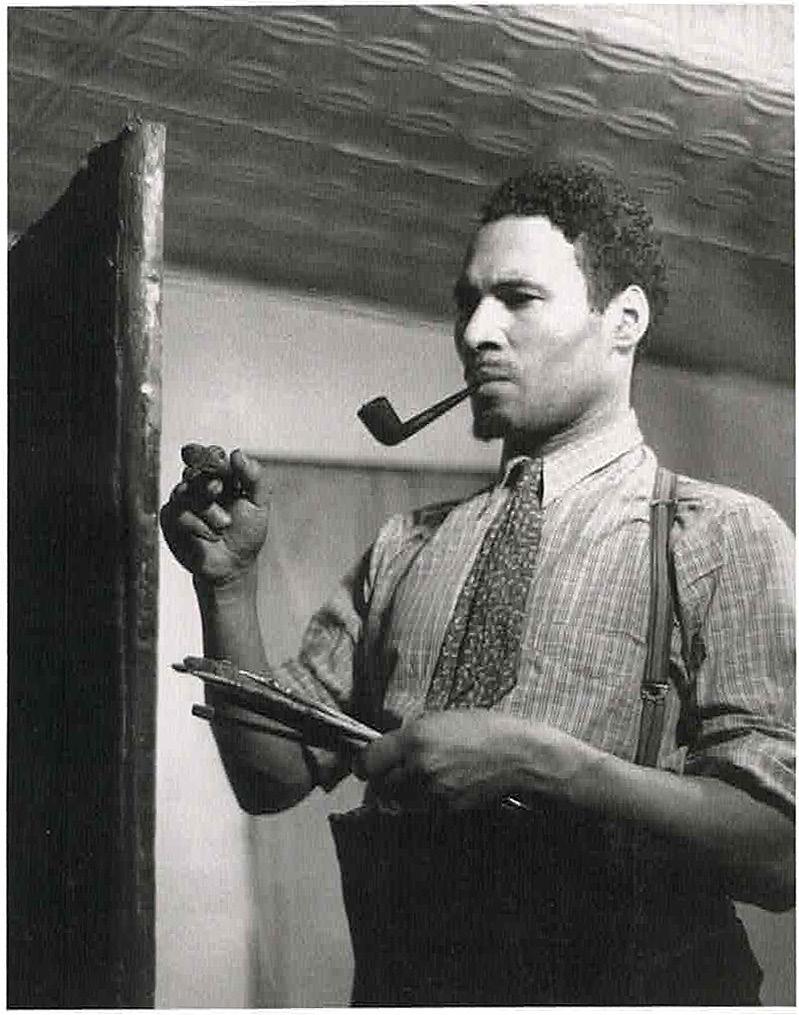


Ronald Joseph was born in St. Kitts and raised for ten years by foster parents on the island of Dominica. In 1921, he was brought to America where he finished his education. He received a scholarship to attend the Ethical Culture School, and before he even graduated, was exhibiting 60 charcoal watercolors and drawings at the Metropolitan Museum of Art.
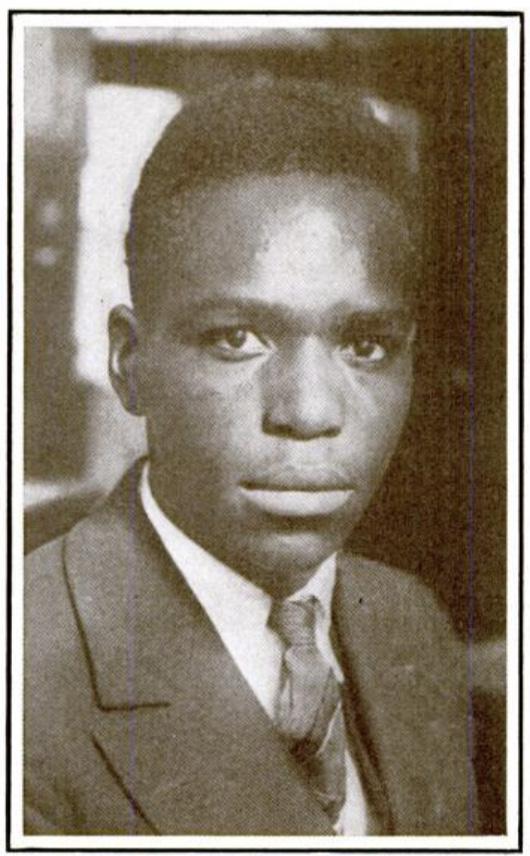
Joseph went on to attend Pratt Institute, graduating in 1934. He joined the WPA working in the mural division and was involved with the Harlem Artists Guild where he learned printmaking from Riva Helfond along with Bob Blackburn. It was here that he came to know Jacob Lawrence, Gwendolyn Knight, and other African-American artists who were honing their craft.
By the onset of the war, Joseph’s work had been featured in exhibitions at the Harlem Art Center; Baltimore Museum; Columbia University; Augusta Savage Studios; Library of Congress; Downtown Gallery, NY; American Negro Art, McMillen Inc., NY; Negro Art: Contemporary; and the Albany Institute of History and Art, The Negro Artist Comes of Age: A National Survey of Contemporary American Artists
After serving in the war, Joseph received a Rosenwald Fellowship which allowed him to live and work in Peru, and then in Paris. He used the GI Bill to study at the Grand Chaumiere. After a lackluster return to New York, Joseph departed for Belgium, where he lived and worked for the majority of the rest of his life.
Photo: The Crisis, March 1930, p. 99.
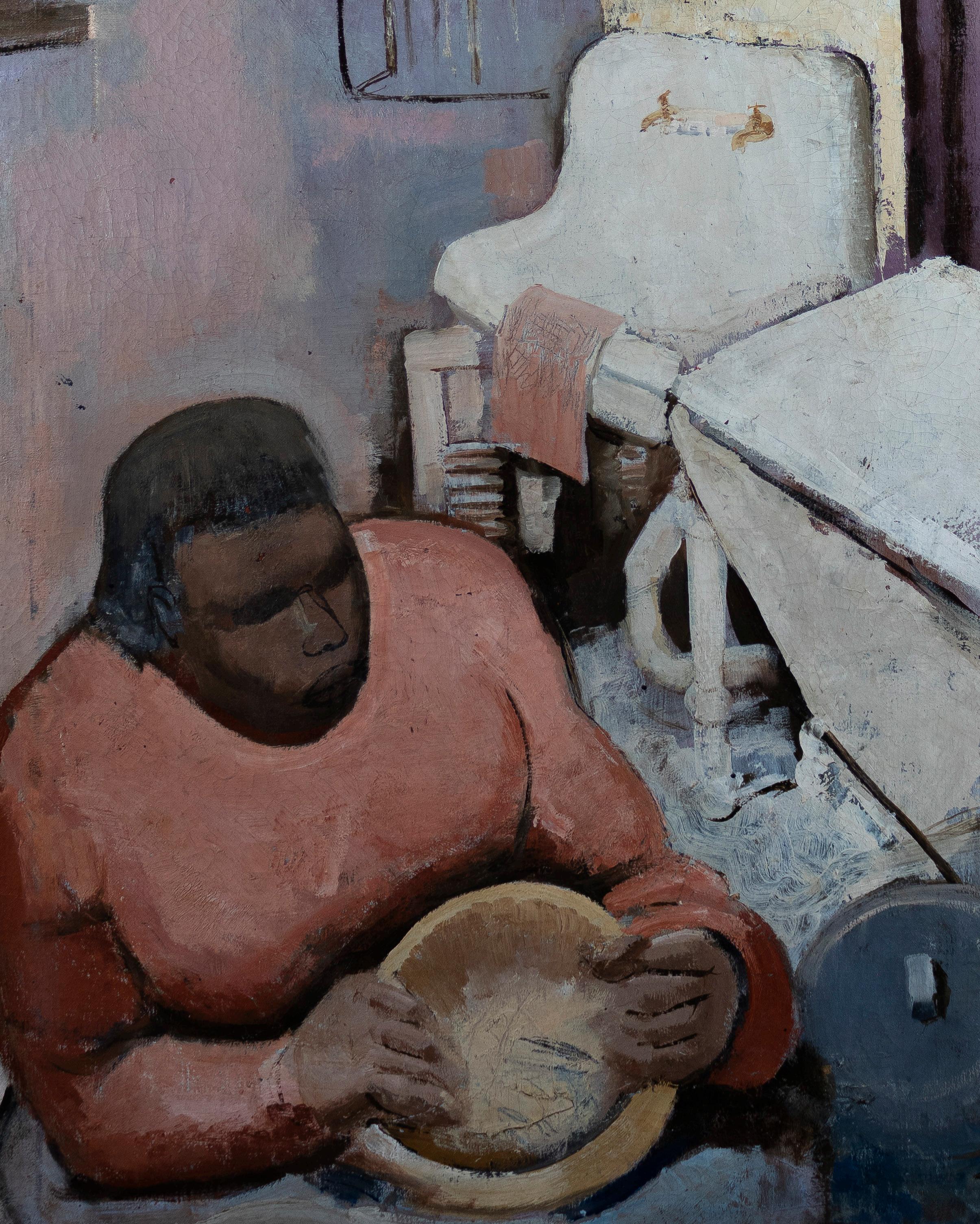
Whether she is creating purely figurative work that represents the universality of man, or portraits of such luminaries as Jacqueline Kennedy and Nelson Mandela, painter, sculptor, and educator Artis Lane has always been concerned with portraying enduring spiritual truths. Most recently she completed a bust of Sojourner Truth which has been installed in Emancipation Hall and is part of the collection of the U.S. Capitol. Julian Bond, chairman of the NAACP, remarked that she was a perfect choice to sculpt Truth because, “her family- her personal story-is so compelling, and in some ways she embodies the history of black Americans.”
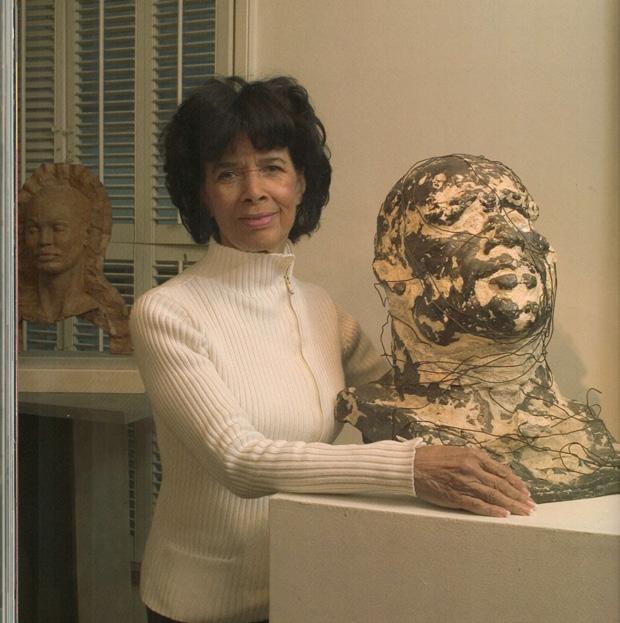
Lane was born Artis Shreve in 1927 in North Buxton, an all black village in Ontario, Canada. She is a direct descendant of abolitionist Mary Ann Shad Cary, who founded a school and the newspaper, The Provincial Freedom. One of her earliest memories is of recreating dolls out of clay she found in a stream on her grandmother’s property. She was painting portraits by age 6, and at 16, she received the Canadian Portraiture Award as well as the Edith Chapman Scholarship to the Ontario College of Art. Lane moved on to the Cranbrook Art Academy, and while in Detroit, had the opportunity to paint
many of the important business and political leaders at the time, including Governor George Romney, Mayor Colman Young and several Ford family members.
Lane worked and lived in New York City, Texas, New Mexico, and Mexico City before settling down more permanently in Los Angeles. Throughout her career she created portraits, explored social injustice, and the metaphysical - examining both the individual and mankind as a whole. She writes, “In my work, I strive to heal, uplift, and inspire viewers and collectors to find perfection in their own being.” She has created portraits of such luminaries as Nelson Mandela, Michael Jordan, and Oprah Winfrey. Her bronze portrait of Rosa Parks was the first work of an African American woman to be exhibited at the
National Portrait Gallery in Washington D.C. In 1999, she designed the Congressional Medal of Honor awarded to Ms. Parks. Lane was inspired by this to further her artistic vision into the realm of the metaphysical with a series of works that explored mankind’s spiritual evolution, the culmination of which has been the creation of a 12 foot bronze sculpture called, Emerging Man.
Her work has been featured in major group and individual exhibitions, including Dillard University, New Orleans, Louisiana; Hammonds House Museum, Atlanta, Georgia; DuSable Museum, Chicago, Illinois; and the Museum of African American Art, Los Angeles, California. In 2007 a major retrospective of Lane’s work was held at the California African American Museum which spanned 60 years.
Photo: Studios and Workspaces of Black American Artists, Dennis L. Forbes, 2008
Jacob Lawrence was born in Atlantic City, New Jersey in 1917 and raised in Philadelphia and Harlem. As a teenager, Lawrence had been uprooted from a childhood spent in Philadelphia when his mother brought her children to live with her in Harlem. She enrolled him in the after-school arts program directed by James Lesesne Wells. Lawrence’s mentor happened to be Charles Alston. He was able to create voraciously - he created elaborate paper mâché masks and threedimensional models of Harlem. He read about master painters and focused his attention on patterns and colors.

Lawrence began attending high school, but quit after two years, worked odd jobs, and completed a stint with the CCC digging ditches during the Depression. He rediscovered Alston who was now teaching in a WPA art center. Alston directed him to the Harlem Community Art Center, which was run by Augusta Savage. She was able to get him admitted as an easel painter by the time he turned 21. He eventually found studio space with fellow artists Ronald Joseph, Romare Bearden, and Claude McKay. Lawrence was a regular at Professor Charles Seifert’s discussions of African and African American history at the 135th St. branch of the NYPL. At Seifert’s request, he attended an exhibition of West African sculpture at the Museum of Modern Art.
As an artist, Lawrence synthesized the events, meetings, discussions, experiences,
and moments of his life onto the canvas and into his first narrative series (and the works to come). In 1936-38, he produced a series of works, The Life of Toussaint L’Ouverture. For him, it was not sufficient to produce one defining work on the life of such an important historical figure, so he created 41 paintings. Lawrence also created series on Frederick Douglass in 1939; Harriet Tubman, 1940; John Brown; and the Migration Series.
In 1939 the James Weldon Johnson Literary Guild sponsored an exhibition of his work at the Harlem YMCA - his first publicized one man show. The Toussaint L’Ouverture series was also shown at the Manhattan headquarters of the Catholic Interracial Council. Later, an entire room was set aside at the Baltimore Museum of Art for his series. This was unprecedented. Lawrence was well on his way to becoming the best known African American artist of his time.
Lawrence won three successive Rosenwald Fellowships. With the second, he traveled through the South, experiencing both rural and urban life, the result of which was his Migration Series. It was at this time that Edith Halpert of the Downtown Gallery began representing him. During WWII, he served in the Coast Guard, and was assigned to the first racially integrated ship in US history. In 1946, he accepted an invitation from Josef Albers to teach at Black Mountain College in North Carolina. He taught at many schools throughout his career, including the Art Students League, New School for Social Research, Pratt Institute and the University of Washington in Seattle, where he eventually retired.
Between 1986 and 1997, Lawrence created prints from The Life of Toussaint L’Ouverture Series, which is now in the collection of the Amistad Research Center at Tulane University in New Orleans. Lawrence translated 15 of these paintings into silk screen prints. At this later date, he was able change certain aspects of the work when adapting his original paintings to sets of
silkscreen prints. The works were shown in the exhibition, To Preserve Their Freedom: Jacob Lawrence’s Toussaint L’Ouverture Serigraph Series, held at the Amistad Research Center, New Orleans in 2017.
Recently, his work has been shown in Historical and Contemporary Perspectives on Jacob Lawrence and Black Mountain College, Black Mountain College Museum & Art Center, Asheville, NC, 2018-19 and I, Too, Sing America, Columbus Museum of Art, OH, 201819. The exhibition, Jacob Lawrence: The American Struggle, was held at the Peabody Essex Museum, Salem, MA and the Metropolitan Museum of Art, NY in 2020.
His work is found in the collections of MOMA, NY; National Academy of Design, NY; National Gallery, Washington D.C.; The Phillips Collection, Washington D.C.; the Museum of Fine Arts, Boston; and many more.
Lee-Smith was born in Eustis, Florida in 1915, and raised in Atlanta and Cleveland, Ohio. He knew from an early age that art was his mission. His mother encouraged his growing talent by enrolling him in an art class for gifted students at the Cleveland Museum of Art. At twenty years old, he won a Scholastic magazine competition that allowed him to study at the Art School of the Detroit Society of Arts and Crafts. He also studied at the Cleveland Institute of Art (1938); and at Wayne State University (1952-1953), he studied art, theater, and dance. Throughout his career, he taught at several distinguished institutions including the Karamu House, Cleveland (late 1930’s), Princeton Country Day School, NJ (196365), Howard University, Washington D.C. (1969-1971), and the Art Student’s League, NYC (1972-1987).
Lee-Smith was employed by the Ohio Works Progress Administration in 1938-1939. At this time, he did a series of lithographic prints and painted murals at the Great Lakes Naval Station in Illinois. The Cleveland Museum recognized him for drawing in 1938 and for printmaking in 1939-1940. His early works were shown mostly in Chicago and Detroit; at the South Side Community Art Center, the Snowdon Gallery, and the Detroit Artist’s Market. He was a regular exhibitor at the National Academy of Design between the years of 1959 and 1976.
Despite many accolades and awards throughout his career, Lee-Smith did not
enjoy a major solo exhibition of his work until 50 years after he began painting. The retrospective was held at the New Jersey State Museum in Trenton (1988). Just two years before his death, he was featured at the Ogunquit Museum of American Art in Maine, and in 1994, he was commissioned to paint the official City Hall portrait of former New York City Mayor David Dinkins. He died in Albuquerque, New Mexico in 1999 after a long illness.
His work is included in many major collections including the South Side Community Art Center, Chicago; Howard University; the Detroit Institute of Arts, and Wayne State University. In 2013, the Muskegon Museum of Art in Michigan, organized a solo exhibition of his work from the 1930’s and 40’s titled, Hughie LeeSmith: Meditations


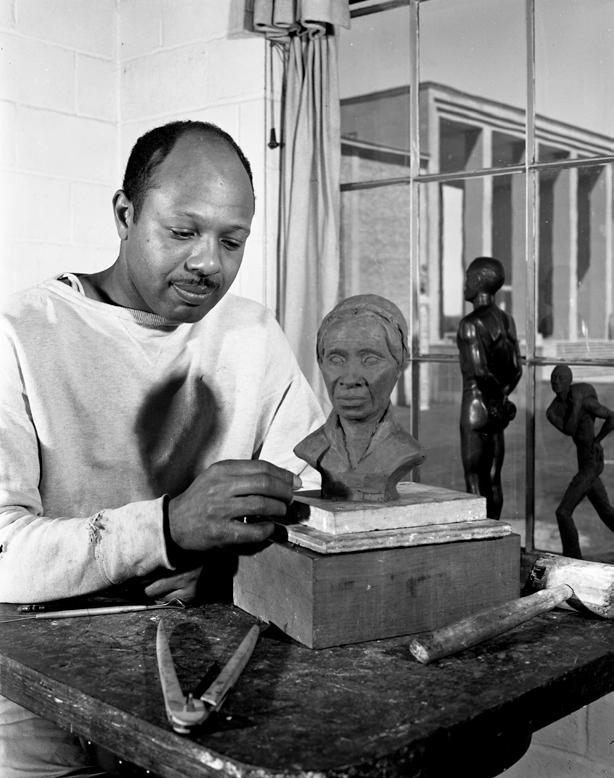

Jules Lion came to New Orleans from France in late 1836 or early 1837. He had learned the daguerreotype process in France, and shortly after arriving in New Orleans, in 1840, was awarded a display of his work in this medium at the St Charles Museum-- the first documented exhibition of photographs in Louisiana. While still in France he was also the first American artist to have lithographs included in the juried academic salon exhibits. His prints were exhibited in the Paris Exposition of 1833, where he was awarded an honorable mention. It was because of this distinction and his French birth that he was considered something of a celebrity when he arrived in New Orleans. There was some confusion regarding his race because he was listed in some city directories as “a free man of color” and others, simply as “French”.
Lion worked as a lithographer for the New Orleans Bee (L’Abeille de la NouvelleOrleans), a French-language newspaper founded by a Haitian immigrant. He worked as a portraitist and taught drawing at Louisiana College.
In the International Review of African American Art, Patricia Brady writes: “His lithographs, precisely executed with fine detail, have a characteristically photographic quality, perhaps influenced by his daguerrean work. The sitters include Andrew Jackson, Zachary Taylor, and John James Audubon.” (“Free Artists of Color of Antebellum New Orleans”, vol.12, no. 3, p. 10.
Patricia Brady wrote for the entry on Lion in St James Guide to Black Artists, “In 1841 the signatures of the sitters began to appear beneath their portraits. The practice was in preparation for Lion’s plans for a bound volume of portraits of famous Louisianans to be financed by subscription.” (p.336)
Branch Tanner Archer (December 13, 1790 – September 22, 1856) was a Texan who served as Commissioner to the United States and Speaker of the House of the Republic of Texas House of Representatives and Secretary of War of the Republic of Texas. He was elected Chairman of the Consultation of 1835, meeting in San Felipe de Austin which formed a provisional government for Texas. Although Archer was a hard-liner in favor of independence, he acceded to the will of the majority which voted to support a return to the Mexican Constitution of 1824.
The Consultation subsequently elected Archer, along with Stephen F. Austin and William H. Wharton to serve as Commissioners of Texas in the United States. Their purpose was to raise funds, recruit troops and gain support among Americans for the cause of Texas. The trio sailed from Galveston to New Orleans in late December 1835 and moved up the Mississippi River over the next several weeks making speeches to crowds before moving east to Washington, D.C. It was likely during his stay in New Orleans when he met Lion and sat for his portrait.

Lofton studied with John Biggers at Texas Southern University (Houston) and Clarence Talley at Prairie View A&M University (Prairie View). He has exhibited extensively from the 1980s to present, including at the Houston Art League; Museum of Science and Industry, Chicago; Traveling Exhibition of Works by Texas Printmakers, 1995; African American Museum, Dallas, TX; Amon Carter Museum; Kinsey Collection Art Exhibition, Houston Museum of African American Culture; The Harmon and Harriet Kelley Collection: Works on Paper, Houston Museum of African American Culture.
Photo: Studios and Workspaces of Black American Artists, Forbes, 2008, p. 298.
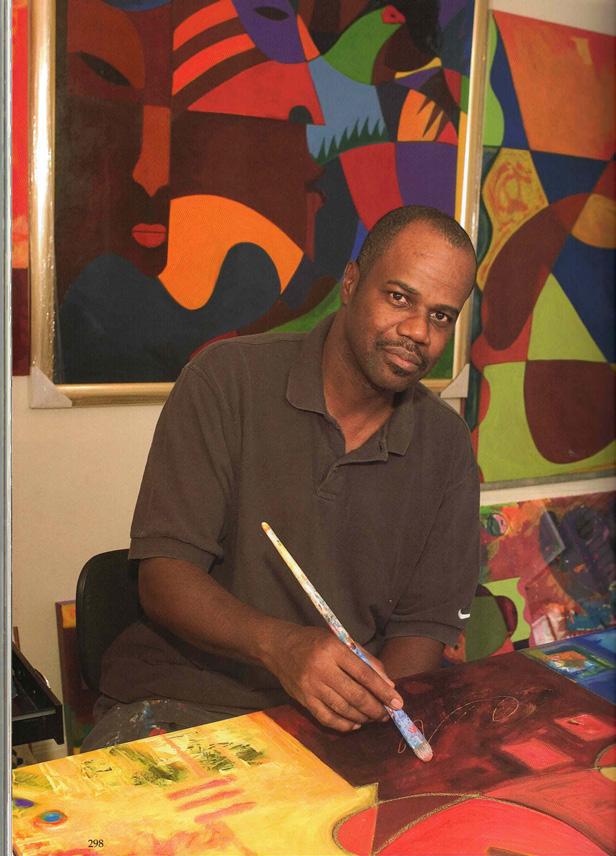
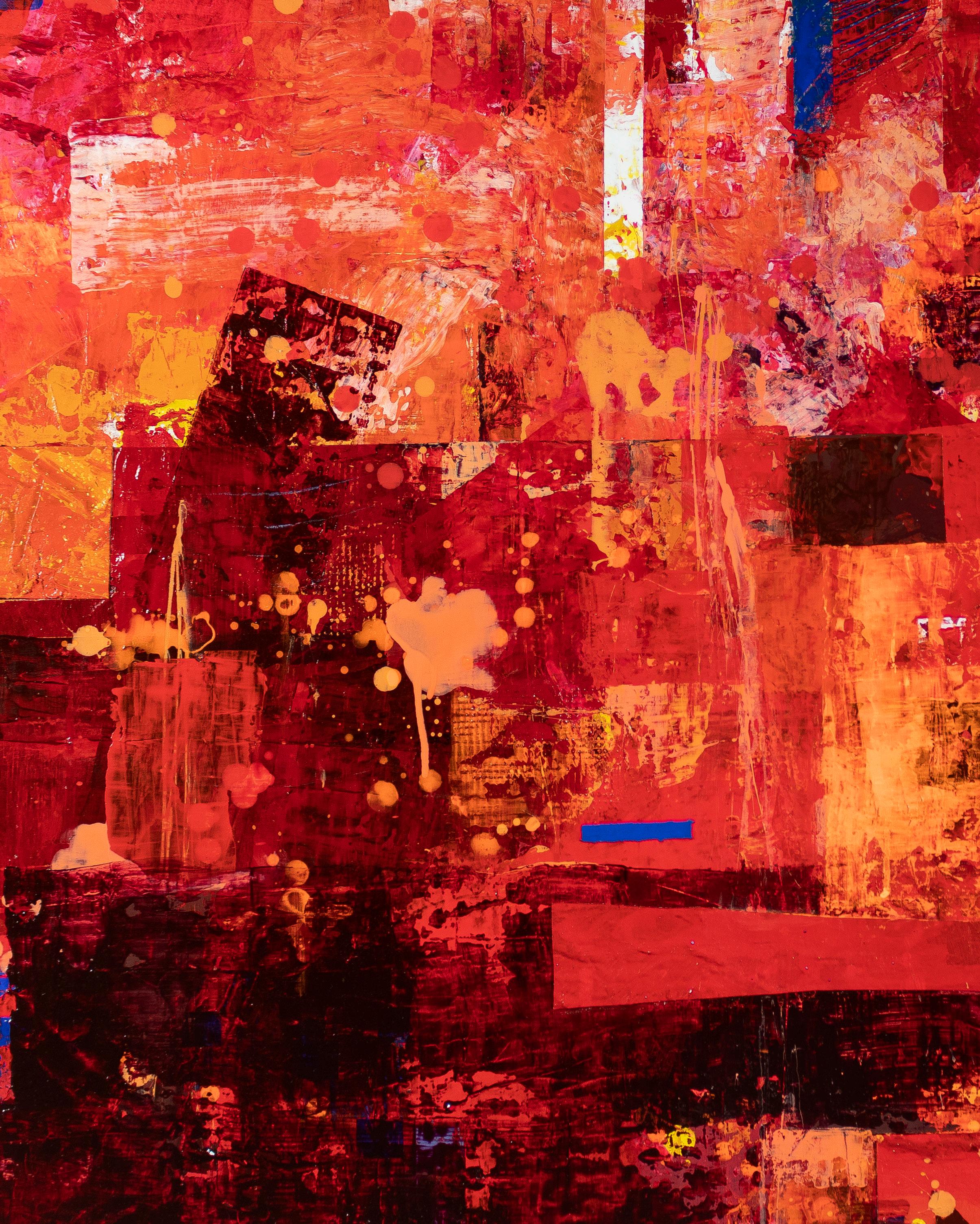
Love was born in Los Angeles and studied at California State University (LA), receiving a MFA. He also studied abroad at the University of Uppsla, Sweden as a post-graduate fellow. He eventually became a professor at Howard University, teaching sculpture (1969-1987) and from 1987-1990 he served as Dean of Visual Arts at the New World School of Arts, Miami. In 1990, he became a professor and director of undergraduate studies at Florida State University.

Love’s work in metal is influenced by jazz, traditional African sculpture, and ancient Egyptian mythology. His work was recently included in an exhibition at the California African American Museum titled L.A. Blacksmith which ran from September 10, 2019 through February 16, 2020. The exhibition featured "historic Los Angeles metal sculpture that signifies the durability of West African metalsmithing aesthetics to contemporary explorations of iron and steel alloys, bronze, copper, tin, aluminum and gold." https://caamuseum.org/exhibitions/2019/ la-blacksmith
Ed Love exhibited at the Corcoran Gallery of Art, solo, 1976; Studio Museum in
Harlem; California State University, LA; University of Massachusetts; Washington Project for the Arts; University of Maryland, and elsewhere. His work was also included in Choosing: An Exhibit of Changing Perspectives in Modern Art and Art Criticism by Black Americans, 1925-1985, sponsored by the Phillip Morris Companies (Jacqueline FonvielleBontemps, curator, 1986.)
Similar examples of his work are illustrated in University of the District of Columbia Special Art Collection, 1984, p. 52-53.

Al Loving was born in Detroit. His father was the first black teacher in Detroit’s public high schools and Loving, Sr. went on to become a professor and dean at the University of Michigan.
Loving, Jr. studied first at Wayne State University and Flint Junior College (now Mott Community College), then the University of Illinois (BFA, 1963) and the University of Michigan (Ann Arbor, MFA). Shortly after graduation, Loving moved to New York, and lived at the Hotel Chelsea (1968). He is the first African American artist to have a solo show at the Whitney Museum of American Art (1969).
Unlike many African-American artists whose art focused on the racial politics of the era, Loving was a staunch abstractionist. His early works were built upon strict yet simple geometric shapes—often hexagonal or cubic modules. Inspired by Hans Hoffmann (who taught Loving’s mentor Al Mullen), Loving concentrated on the tension between flatness and spatial illusionism. In the 1970s the artist became disenchanted with his earlier, hard-edge geometric paintings. Loving dispensed with notions of centralized composition, figure/ground separation, and pictorial frame in his later torn canvas and collaged paper works. He combined hundreds of pieces of cut and torn canvas or paper into an abundance of overlapping patterns and shapes, their rich and intuitive array of colors stretch irregularly, spiraling outward, surrounding the space, and engulfing the viewer.
(REF: www.alloving.org)
In an interview in the catalogue for The Appropriate Object, an exhibition of seven black artists at the Albright-Knox Art Gallery in Buffalo in 1989, Mr. Loving spoke about his difficulty with the cube and his need to break out of a geometrical prison.
In the early 1970s, Loving abandoned hard-edge abstraction, and began creating fabric collages in the abstract expressionist style. He was influenced by an exhibition at the Whitney, Abstract Designs in American Quilts, and began working with sewn material fragments, much like Sam Gilliam. A decade later, he transitioned into using other materials, such as corrugated board and rag paper, torn by hand and reconstructed into circles and spirals. Each piece of cardboard is painted and placed overlapping to create the dynamic and continued composition. About this time (1988), Loving joined the faculty of the City University of New York. Loving’s work is included in the Detroit Institute of Art, The Metropolitan Museum of Art (NYC), Philadelphia Museum of Art, Studio Museum in Harlem, and the Whitney Museum of American Art, among others.
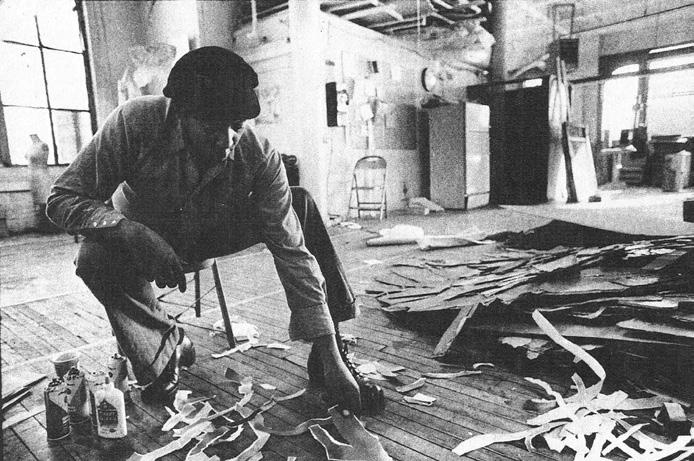
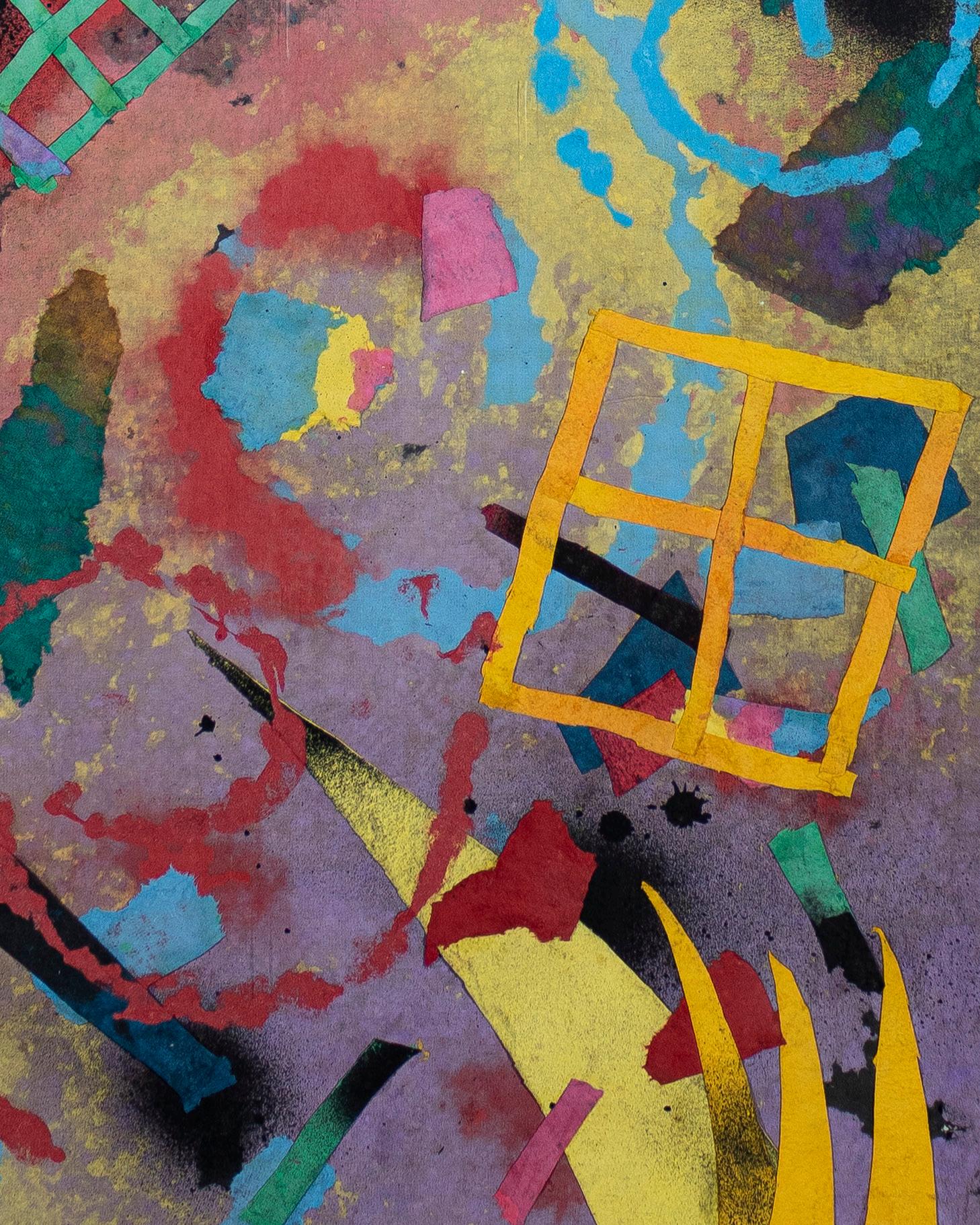
Mayhew was born in 1924 to parents of African American and Native American descent. He was educated at the Art Students League, NY; Brooklyn Museum Art School; and Pratt University, as well as receiving a degree in art history at Columbia University, NY. During this time, he studied under Edwin Dickinson, Reuben Tam, Hans Hofmann, and Max Beckmann. Mayhew was one of the founding members of the group Spiral, formed in 1963 by Romare Bearden, Norman Lewis, and Hale Woodruff and worked to address issues of civil rights and racial inequality through art.
Mayhew’s first solo exhibition was held at the Brooklyn Museum in 1955 with a second solo exhibition held in 1957 at Morris Gallery, NY, both of which met with much critical success. His work has also been exhibited at the Studio Museum in Harlem; San Jose Museum of Art, CA; Butler Institute of American Art, OH; High Museum of Art GA; and Boston Museum of Fine Arts. In 2009, a retrospective of his work including paintings from the 1950’s through the 1970’s was held at the Museum of the African Diaspora, San Francisco, CA.
His work is found in the collections of Albion College, Michigan; Brooklyn Museum, NY; Evansville Museum, IN; Midtown Galleries, NY; and the Whitney Museum of American Art, NY.
Photo: The artist, ca 1979; The Art of Richard Mayhew, Museum of the African Diaspora, 2009.

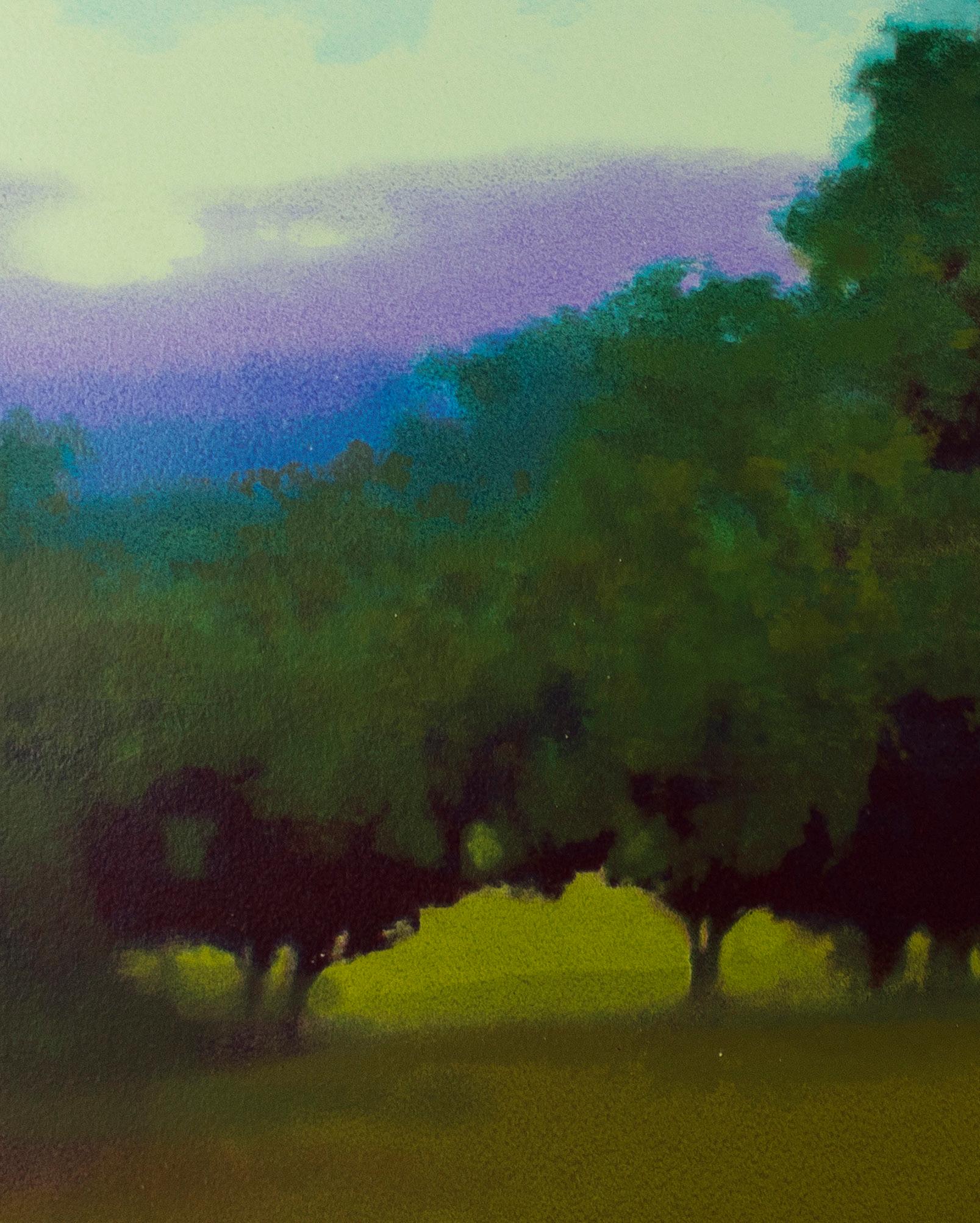
SAM MIDDLETON (1927-2015)
Mixed media artist, Sam Middleton was one of a group of expatriate African Americans who enjoyed success in Europe in the 1960’s. Middleton was born in New York City and grew up in Harlem near the Savoy Ballroom. This notable venue provided much inspiration for his future collages. His love of music - classical and jazz - was integral to his very life - he was known to carry an unwieldy turntable and collection of records with him wherever he traveled.
He joined the Merchant Marines in 1944. Upon his return to New York City in the 1950s, he relocated to Greenwich Village, meeting and befriending a small group of African American artists including Walter Williams, Clifford Jackson, Harvey Cropper, and Herb Gentry - all of whom would expatriate to Europe in the next decade In the early 1950s, Middleton was part of New York’s Cedar Tavern scene, which included his friends Robert Motherwell and Franz Kline. Kline encouraged Middleton to apply to the John Hay Whitney Foundation and advised him to seek artistic success outside New York.
Middleton received a scholarship for one year of study at the Instituto Allende in San Miguel, otherwise he was largely selftaught. It was there in 1957, that he began experimenting with collage. His work was shown at Contemporary Arts Gallery in 1958 and again in 1960. The Whitney Museum of American Art showed four of his works in Young America 1960: Thirty American Painters Under 36.
Between 1959 and 1961, Middleton lived in Europe, exhibiting in Spain, Sweden, and Denmark. Much of his artistic material was gleaned from ephemera he collected as he moved from city to city. In 1962 he decided to make a home in the Netherlands. His later work brought the Dutch landscape into his collages.
Middleton remained in the Netherlands for the rest of his life. He showed extensively there and other locales throughout Europe, but was not forgotten in the States. In 1970, his work was shown in the exhibi tion, Afro-American Artists Abroad at the Blanton Museum of Art, University of Texas, Austin and in 1983, the Studio Museum in Harlem held the exhibition An Ocean Apart: American Artists Abroad which also included Herb Gentry, Cliff Jackson, and Walter Williams.
His work is found in the collection of the Whitney Museum of American Art, NY; Stedelijk Museum, Amsterdam, NL; Fisk University, Nashville, TN; Brooklyn Museum, NY, as well as many others.
Photo: Middleton, Cliff Jackson, and Harvey Cropper in Stockholm, Sweden, 1960; Sam Middleton Estate. Unidentified photographer; © Sam Middleton Estate


Earl Miller was born in Chicago and studied at Roosevelt College, the Illinois Institute of Technology, Chicago; Pratt Institute; Art Students League; and the Brooklyn Museum School in New York. He also studied at the Akademie der Bildenden Kunste, Germany. Miller’s early influences in Chicago, especially at the Institute of Design (a.k.a., the Chicago Bauhaus, because it was founded by Bauhaus master, Laszlo Moholy-Nagy), would have been in abstraction.
In New York, Miller joined the group Spiral, the year this work was executed (1963). He exhibited in an important group show which included Beauford Delaney, Herbert Gentry, Sam Middleton, Larry Potter, Norma Morgan and Walter Williams in Copenhagen in 1964: 10 American Negro Artists Living and Working in Europe. He also exhibited at the Museum of Modern Art, the Studio Museum in Harlem, Minneapolis Institute of Arts, along with an extensive list of exhibitions in Europe. He eventually began teaching at the University of Washington in Seattle (1969).
Photo: The artist and Romare Bearden at a meeting of the Spiral group; courtesy of Dr. Pringl Miller, the artist’s daughter.



Gus Nall studied at the School of the Art Institute of Chicago and in Paris. Nall studied with Eldzier Cortor and was also influenced by fellow Chicagoan, Archibald Motley, Jr. His subjects were elongated hu man figures executed in a surrealist or cubist manner. In turn, Nall influenced the work of young writer and painter, Clarence Major, who met Nall at the Art Institute and gave Major lessons in his studio/apartment. Nall exhibited regularly during the 1950’s-60’s in popular art fairs around the city, much like many of the local painters, including fellow South Side painter, Gertrude Abercrombie.
Margaret Burroughs praised Nall’s work in Art Gallery Magazine (April,1968) when she was asked to report on the Chicago African American art scene. Nall was also mentioned in Black Power in the Arts (Carol Myers, Cornell University, 1970). His most well-known work, Lincoln Speaks to Freedmen on the Steps of the Capitol at Richmond (1963) was commissioned by the State of Illinois to commemorate the 100th anniversary of the Emancipation Proclamation. This work is on permanent exhibit at the Du Sable Museum of African American History in Chicago.
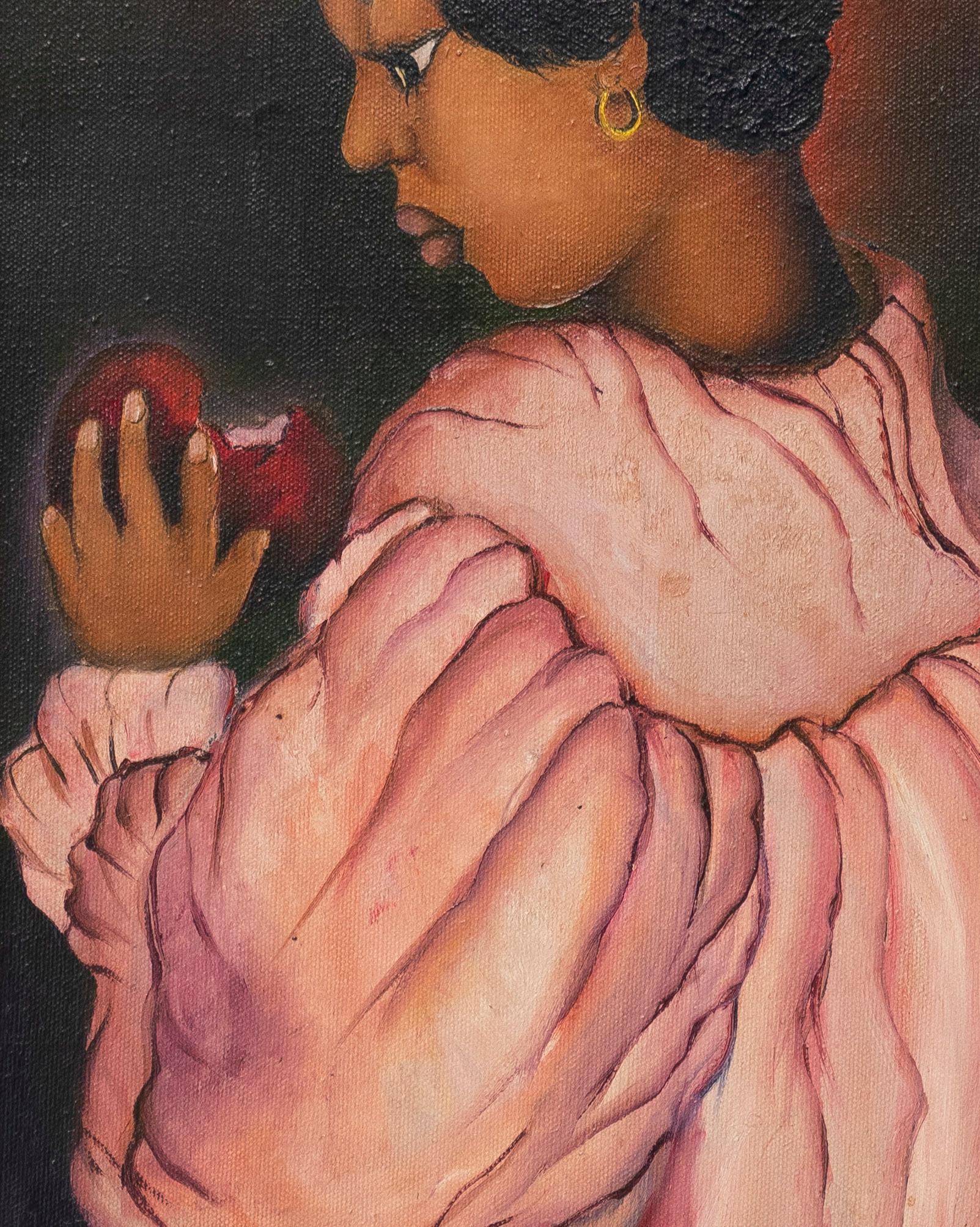
Nash was born in Akron, Ohio and grew up in a black inner city neighborhood. He became interested in art and earned jobs locally as a self-taught illustrator. In 1975, he left for New York City to work as a fashion illustrator; he also was designing album covers for jazz labels, and finally, was earning himself a degree in commercial art from the Pels School of Art in NYC (established by well known mid-20th century painter, Albert Pels).
He graduated in 1977 and worked for about 10 years as a freelance illustrator before returning to Ohio to work for the Goodyear Aerospace Corporation as a technical illustrator, and even a stint at American Greetings Corporation. In 1991, he moved again to Madison, Wisconsin to work as a graphic artist. By this time in his career, Nash had experienced more and more integration of computers and electronic imaging in his job. While armed with a vast array of technical skills, Nash believed he was losing touch with the true essence of what art was all about—so he went in the opposite direction, and devoted his energy to sculpting. His technique and subject matter was now based in history and people: Africa and world tribal culture. He calls his version of raku (or pit-fired) glazes “African Nouveau”.
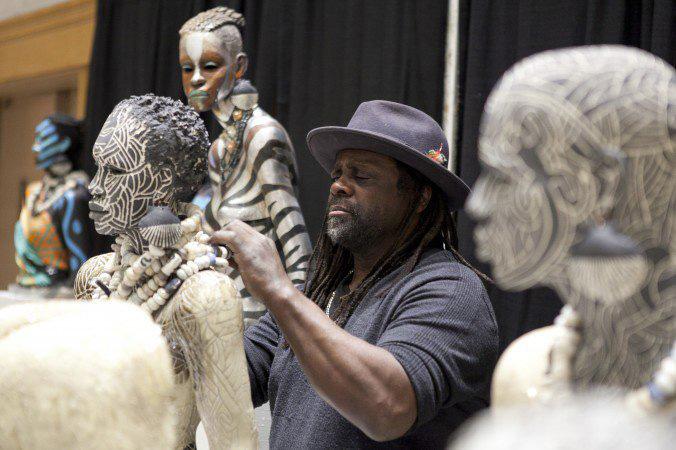

Neals' mother left her husband and three children in South Carolina in the early 1930s in search of employment in New York City. There was a much greater chance of a woman succeeding at the time because of the numerous domestic jobs available in the city. She did, in fact, become employed, and her family immediately moved to Brooklyn in 1934. Neals attended the Brooklyn High School for Special Trades there and was already very interested in the arts (coincidentally, Ernest Crichlow attended the school at the same time, albeit they were a few years apart).
After high school, Neals got a job in a factory, but two years later, in 1952, he was drafted into the army (he did not go to Korea, but was stationed at Fort Bragg, NC). In the mid-1950s, he married Vera Anita, whose relatives were from Guyana. Otto joined a group of Harlem-based artists known as the Twentieth-Century Creators. This group eventually split and the dominant faction started Weusi (a Swahili term for “blackness”), and then five of those members founded the Nyubba Ya Sanna (House of Art), located at 132nd Street in Harlem. Neals had also studied at Bob Blackburn’s Printmaking Workshop and the Brooklyn Museum’s school.
Neals began participating in the Fulton Art Fair in Bedford-Stuyvesant (1950s-60s), along with artists Ernie Crichlow and Tom Feelings. He made two trips to Guyana, the second in 1970, and when
he returned, he became much more invested in sculpture. He found a studio in Brooklyn, and began working with Vivian Schuyler Key, whom after a break in her artistic career to raise a family, returned to work as a painter and sculptor. The two influenced each other’s work.

REF: Black New York Artists of the 20th Century Selections from the Schomburg Center Collections, NYPL, 1998
Black Artists of the New Generation, Elton Fax,1977. (Photo credit: Leroy Ruffin)

William Pajaud was born in New Orleans and lived there until he finished the ninth grade. Even though he was young, his experiences in that city shaped his subject matter as a painter later in his life. Pajaud moved with his mother to Chattanooga for a year, and there he experienced a racially motivated beating. A year later, his mother landed a teaching job at Texas College, so they moved, once again, to Tyler, TX. Just a teenager, he was subjected to another racially motivated act of violence. Later he commented that his art was a reaction to how a person copes with these kinds of challenges experienced throughout his life.
Pajaud earned a BFA from Xavier University in New Orleans. Eventually he moved to Los Angeles in 1948, and enrolled at the Chouinard Art Institute. He exhibited in the 1950s-60s, he exhibited at Heritage Gallery, Santa Barbara Museum of Art and Esther Robles Gallery. He also participated in a co-op group known as Eleven Associated. The artists, including Beulah Woodard, Alice Gafford, and Curtis Tann who rented a space on South Hill Street in an attempt to gain
more visibility for their work. The group, while historically significant, did not last long.
Pajaud was appointed as an art director for Golden State Mutual Life Insurance Company in 1957, the largest African American-owned business in Los Angeles. Golden State was known for supporting African American artists, and Pajaud also convinced them to build an impressive collection of African American art.
Pajaud exhibited at the Los Angeles County Museum of Art; Pasadena Art Museum; deYoung Art Museum, San Francisco; Atlanta University; University of Iowa.
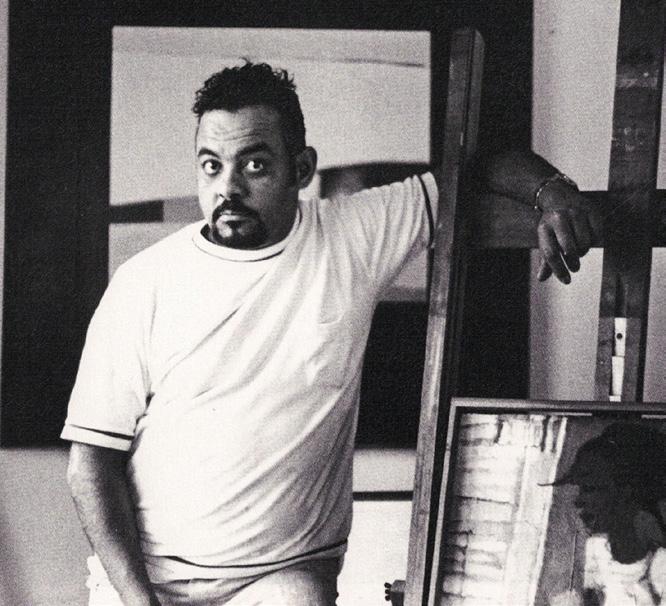

Palmer was born in Alabama, but raised in Milwaukee, Wisconsin. He moved to nearby Chicago to study at the American Academy of Art and the School of the Art Institute of Chicago. He is foremost a portrait painter, but he incorporates landscape, flowers, and even geometric abstraction into his compositions, and he works mostly with acrylic paint.
In July of 2020, Palmer’s work was featured on TIME Magazine’s cover. The artist says, “In my 60 years on this earth, so much has changed; however all too much has remained the same.”
Palmer also provided the cover art for John Legend’s latest album, Bigger Love, a poster for the 1996 Olympics, and commissions marking the 150th anniversaries of both Fisk and Howard Universities. He most recently taught illustration and design at Spelman College. His work is included in the collections of Atlanta Life Insurance, McDonald’s Corporation, Miller Brewing Company, Coca-Cola Company and Vanderbilt University.
Recently, the exhibition, Departure, Charly Palmer, was held at the Hammonds House Museum, Atlanta, GA, in 2021, and featured
...a 30-year range of Palmer’s style including recent paintings that move between realism and abstraction, lending a universality to his images of Black experience.
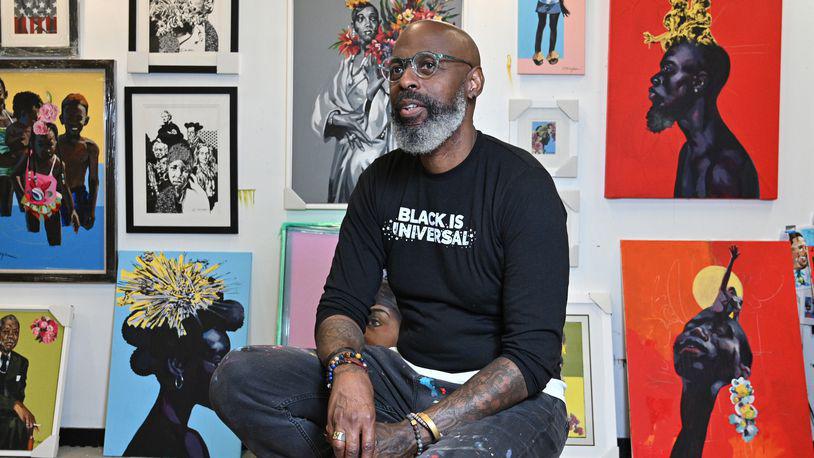
-Felicia Feaster, Charly Palmer retrospective highlights the artist’s versatility, The Atlanta Journal-Constitution
Photo Credit: HYOSUB SHIN / Atlanta Journal-Constitution
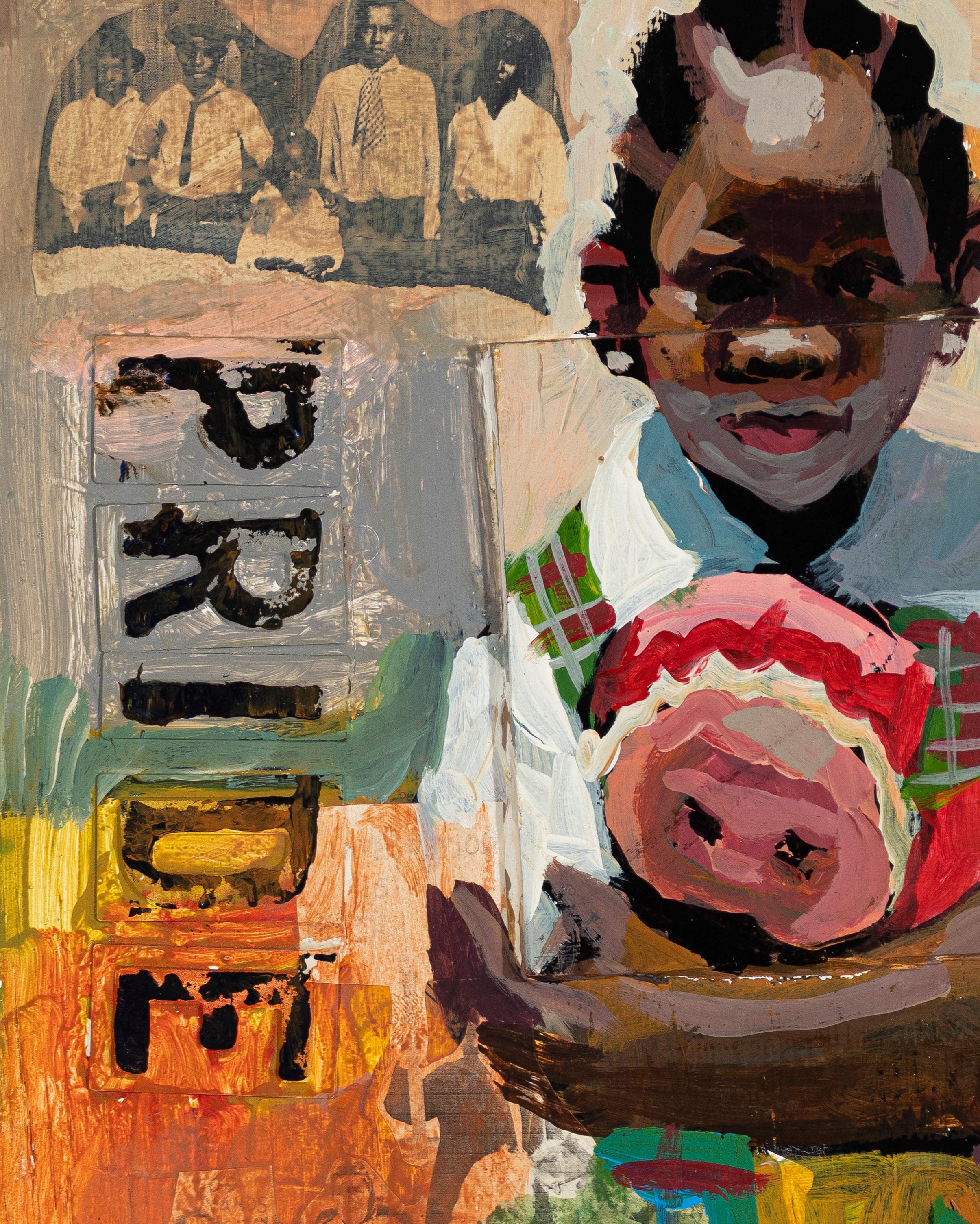
Similarly to Emma Amos, with whom she exhibited in 1983 at Jazzonia Gallery (owned by George N’Namdi) in Detroit, Rabb was attuned to both the civil rights movement and the women’s movement, but unlike the artists of Africobra, she was not radical. Her subjects appear personal, and they are, but they are also universal statements of racial and gender identity. The scene addresses the subject’s contemplation of identity, specifically, how a woman of color fits into society, but it is also a statement of protest—an affirmation of racial and gender equality. Amos once said, “For me, a black woman artist, to walk into the studio, is a political act”.
Madeline Murphy Rabb was born in Wilmington, DE and earned her BFA at the Maryland Institute College of Art (1966); she earned her MS in 1975 at the Illinois Institute of Technology (Chicago). Continually working and exhibiting her own art, she also was dedicated to promoting art civically. She was became the Executive Director of Fine Arts for the City of Chicago in

1983. She also worked in a curatorial capacity for several corporate collections and is on the board of various museums.
Rabb exhibited at the Artist Guild of Chicago, 1974; North Shore Art League; The League of Black Women, Southside Community Art Center; Black Women Artists, 1974; Hyde Park Art Center, Chicago, 1976-1976; Black Printmakers in Chicago, 1980; and The Arts Club of Chicago, 2012.

Los Angeles native John Riddle became known initially for his politically charged works that combined welded steel and debris left from the WATTS riots in 1965the purpose for which was to expose the harsh conditions that African Americans lived and labored in South Central L.A.
Later in his career, after moving to Atlanta, Georgia, he began to work on low relief assemblages, prints and paintings, which, with their solid color, angular shapes recalled the work of Jacob Lawrence and allowed viewers a glimpse of African American culture.
Riddle earned his Associate’s degree from Los Angeles City College, and then served in the US Air Force from 1953-1957. After leaving the military, he was able to earn his BA from California State University, Los Angeles on the G.I. Bill, graduating in 1966. He continued there to earn his MFA in 1973.
Like his mentor Noah Purifoy... Riddle was deeply affected by the physical aftermath of the [Watts] riots and created assemblage works from the torched metal junk that was piled everywhere.
His sculpture Ghetto Merchant (1966) was pieced together from a destroyed cash register that Riddle found in the wreckage,
picked apart down to its barest skeleton, and then mounted on metal legs that he had scavenged from a junkyard. Although its parts betray a pained history, the sculpture possesses a lyricism of form that clearly draws from early twentieth-century abstraction in its emphasis on line and geometry.
- Andrea Gyorody, Now Dig This! Art & Black Los Angeles 1960-1980, p. 212. Catalog accompanying the exhibition at The Getty, 2011
Riddle’s work, Gradual Troop Withdrawal (1970), was included in Soul of a Nation Art in the Age of Black Power (the leg of the exhibit at The Broad).
His work may be found in the collections of the Oakland Museum, High Museum of Art, and the California African American Museum.



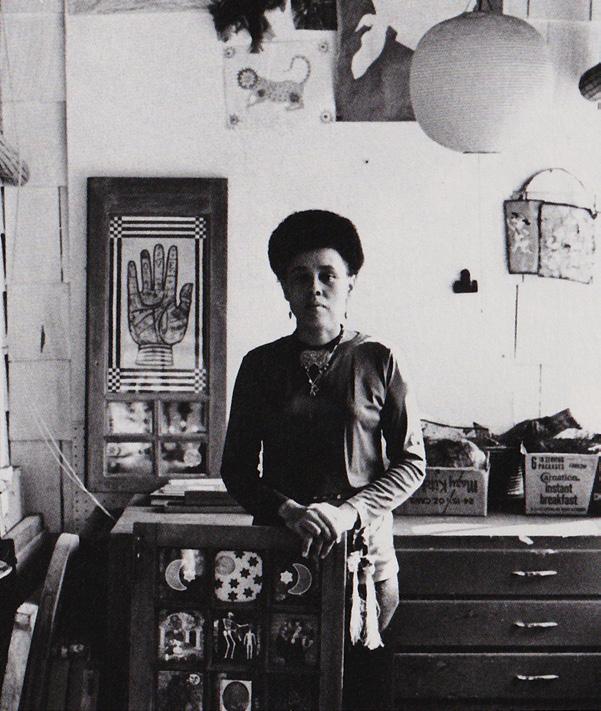
Saar was born in Los Angeles, and moved with her family to Pasadena in the early 1930s. She first studied design at Pasadena City College and interior design at UCLA. This strong design-centered background would prove to be highly influential in her mature work in fine art. She was close friends with two other L.A. artists, Curtis Tann and William Pajaud. Saar and Tann actually started an enamel design business which was featured in Ebony in 1951.
After graduating, from the late 50s through the mid-1960s, Saar was primarily interested in print-making, producing color etchings and intaglio prints. During the turmoil of the 1960s, the Watts riots, and the death of Martin Luther King, Jr., Saar’s work began to shift to collage and assemblage, reclaiming and repurposing personal objects she inherited as well as negatively-charged objects she found at LA flea markets. She believed that a universality of international culture could be connected by reclaiming objects and artifacts from other cultures to be used in her own constructs of perspective. She was inspired further by a visit to a retrospective exhibition of Joseph Cornell at the Pasadena Art Museum in 1967. Saar comments:
There has been an apparent thread in my art that weaves from my early prints of the 1960s through later collages and assemblages and ties into the current installations.
I am intrigued with combining the remnants of memories, fragments of relics, and ordinary objects with the component of technology. It’s a way of delving into the past and reaching into the future simultaneously. The art itself becomes the bridge.
Saar exhibited extensively throughout the 1970s and on, including: Whitney Museum of American Art, NY;Wadsworth Athenaeum; San Francisco Museum of Modern Art; Studio Museum in Harlem; MOCA, Los Angeles; University of Connecticut, Hartford; Santa Monica Museum of Art, and the National Gallery, Washington D.C. Her work is in numerous important public and private collections including the Brooklyn Museum, NY; MOMA, NY; The Oakland Museum, CA; and the Philadelphia Museum of Art, PA.

Augusta Savage was born in Green Cove Springs, Florida. She had a knack for sculpting even as a small child, making mud ducks and selling them at the local fair. She married at the age of 15, but her husband died the following year, after having a child together. In 1915, her family moved to West Palm Beach, where she met a potter and acquired 25 pounds of clay. Her sculpture received much local attention, and through a series of events and support of teachers, Savage traveled to New York City in her quest to become a professional sculptor. She was admitted to the Cooper Union School, which was tuition-free, and finished her 4 year program in 3 years. She traveled abroad to France on scholarship and joined a group of black artists and intellectuals, including Hale Woodruff, Henry Tanner, and Countee Cullen.
By the early 1930s, Savage was living in Harlem and had created a school, Savage Studio of Arts and Crafts. In 1933, she founded The Vanguard, a group of Harlem intellectuals who met in her studio to discuss politics, art, and the condition of the African American.

Savage at work on Lift Every Voice and Sing, 1935-45, unidentified photographer; Fig 6, Augusta Savage: Renaissance Woman, 2018, Cummer Museum.
The New York Public Library, Manuscripts and Archives Division, Astor, Lenox, and Tilden Foundations, New York World’s Fair 1939-40 Records, 1654255
Augusta Savage presenting the president of the New York World’s Fair Corporation, Grover Whalen, with a miniature replica of her sculpture. The replica is a souvenir from the fair and Savage made a number of them to sell to support her art. Fig. 43 from Augusta Savage: Renaissance Woman, 2018, Cummer Museum, p. 146.
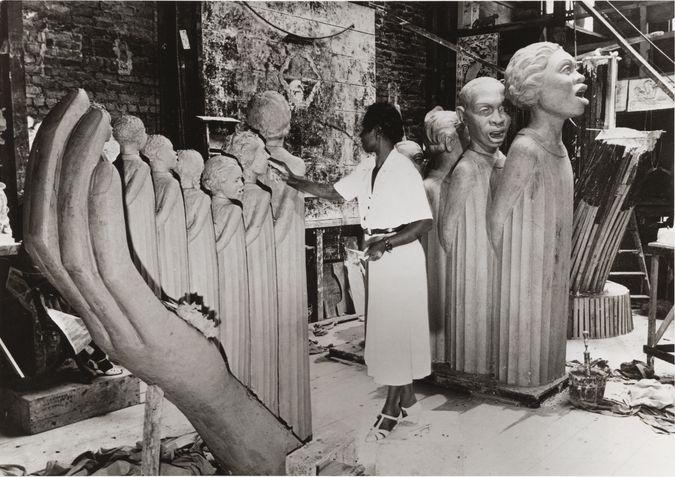
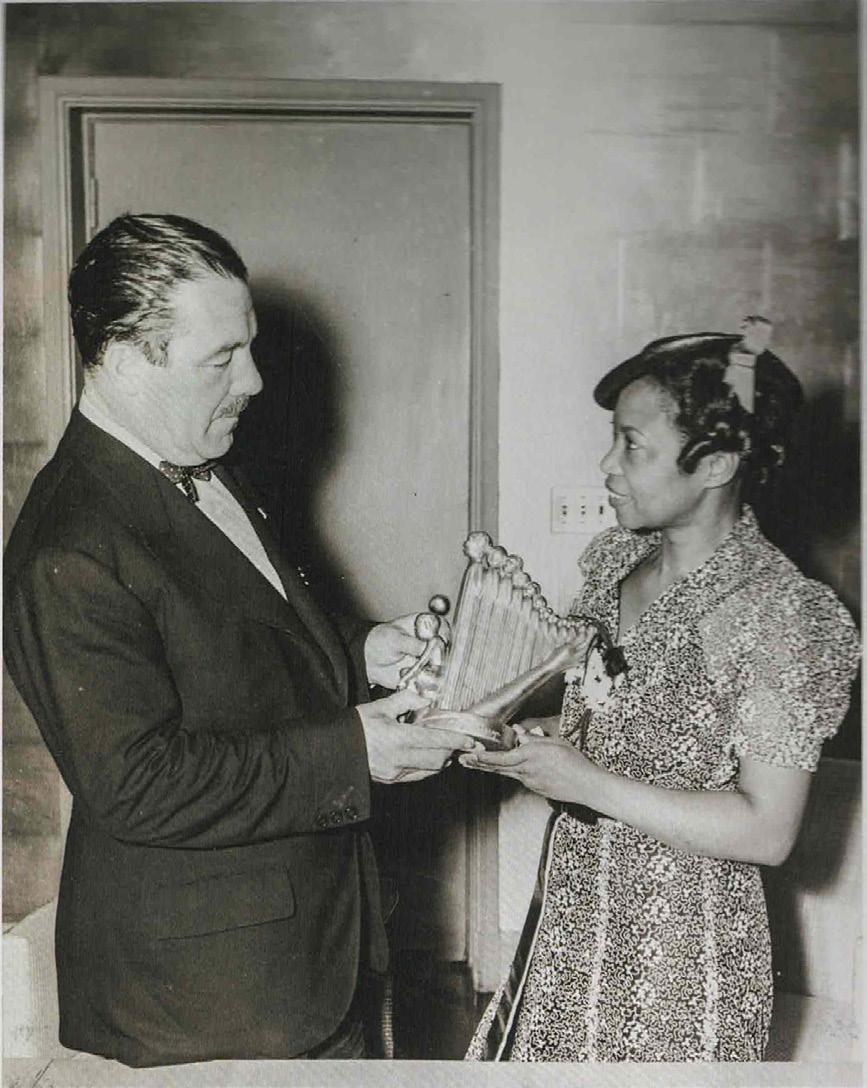


Scott was born in Indianapolis, Indiana, one of two children of Caroline Russell and Edward Miles Scott. His introduction to formal art training came at the Manual High School in Indianapolis, where he studied with Otto Stark, one of the Hoosier Group artists. Encouraged by Stark, Scott went on to study at the Art Institute of Chicago, graduating in 1907 (although he continued classes for two additional years). As an upperclassman, Scott was awarded mural commissions at local schools and won the Magnus Brand Memorial Prize for three consecutive years, and these financial success provided him with the finances to travel abroad.
He traveled to Paris, where he met and spent time under the tutelage of Henry O. Tanner. Scott enrolled as a student at the Académie Julian, and had works accepted at the Salon de la Société des Artistes Francais in Paris, the second AfricanAmerican after Tanner to do so. His work in Europe focused on French genre scenes, especially peasant life. He was invited to exhibit at the Paris Salon in 1912 and 1913.
When he returned to the States, he applied this French academic tradition to genre scenes painted of southern African Americans. Scott also painted portraits of important African American figures Frederick Douglas, Booker T. Washington, and George Washington Carver and illustrated several covers for The Crisis. In 1927, Scott was awarded the Distinguished Achievement award from the Harmon

Foundation, and four years later, he received the Julius Rosenwald Fellowship to study and paint in Port-au-Prince, Haiti. He spent over a year here and completed over 144 works depicting peasant life. After his return, he painted murals celebrating African American history and culture.
Throughout his career, Scott remained devoted to traditional, academic methods of painting and realistic style. His work may be found in the collections of the Indianapolis Museum of Art; Du Sable Museum of African American History; New York Public Library; National Gallery of Art; Guggenheim Museum; Columbus Museum, GA; and Fisk University.
REF: A Shared Heritage, Art by Four African Americans, Indianapolis Museum of Art, Harriet Warkel and William Taylor, 1996.
Joe Selby was born in Mobile, Alabama. He painted in Miami, Florida from the 1920s to the 1950s. As a boy he worked as a deck hand on tugboats; in 1905 at age twelve he was involved in a tragic accident when his leg was mangled in a line-handling accident. The accident ended his career as a deckhand, so Selby turned to painting ship portraits.
He painted all types of boats, but primarily yachts, approaching owners at the Miami city pier to ask if they wanted a portrait of their boat. If the owner agreed, Selby boarded the vessel to take notes and make measurements, then returned to a fire station near the dock where he would commence on the portrait. Early in his painting career (1920s-30s), Selby worked in Baltimore and painted boats on the Chesapeake Bay.

Over the years his clients included General Motors magnates Alfred P. Sloan and Charles Kettering, Axel Wennegren, Arthur James Curtis, William B. Leeds, and members of the Morgan and Rockefeller families.
Selby lived much of his life in public housing in Miami's Overtown district before constructing his own home. His last dated painting was in 1959. His work is in the collection of the Chesapeake Bay Maritime Museum, St Michaels, MD. REF: Roger King Fine Art
A short film about the work of Joe Selby.
Photo: Miami Herald, Feb 21, 1959, p. 29.

Scott was born in Indianapolis, Indiana, one of two children of Caroline Russell and Edward Miles Scott. His introduction to formal art training came at the Manual High School in Indianapolis, where he studied with Otto Stark, one of the Hoosier Group artists. Encouraged by Stark, Scott went on to study at the Art Institute of Chicago, graduating in 1907 (although he continued classes for two additional years). As an upperclassman, Scott was awarded mural commissions at local schools and won the Magnus Brand Memorial Prize for three consecutive years, and these financial success provided him with the finances to travel abroad.
He traveled to Paris, where he met and spent time under the tutelage of Henry O. Tanner. Scott enrolled as a student at the Académie Julian, and had works accepted at the Salon de la Société des Artistes Francais in Paris, the second AfricanAmerican after Tanner to do so. His work in Europe focused on French genre scenes, especially peasant life. He was invited to exhibit at the Paris Salon in 1912 and 1913.
When he returned to the States, he applied this French academic tradition to genre scenes painted of southern African Americans. Scott also painted portraits of important African American figures Frederick Douglas, Booker T. Washington, and George Washington Carver and illustrated several covers for The Crisis. In 1927, Scott was awarded the Distinguished

Achievement award from the Harmon Foundation, and four years later, he received the Julius Rosenwald Fellowship to study and paint in Port-au-Prince, Haiti. He spent over a year here and completed over 144 works depicting peasant life. After his return, he painted murals celebrating African American history and culture.
Throughout his career, Scott remained devoted to traditional, academic methods of painting and realistic style. His work may be found in the collections of the Indianapolis Museum of Art; Du Sable Museum of African American History; New York Public Library; National Gallery of Art; Guggenheim Museum; Columbus Museum, GA; and Fisk University.
REF: A Shared Heritage, Art by Four African Americans, Indianapolis Museum of Art, Harriet Warkel and William Taylor, 1996.


Born in Philadelphia in 1937, artist and educator Charles Searles held a careerlong interest in African tribal arts--he first incorporated mask forms and colors from Africa in these late 1960s and early ‘70s figurative paintings. By 1971, Searles had risen to prominence with the inclusion of his 1970 painting, News, in the exhibition Contemporary Black Artists in America at the Whitney Museum of American Art.
Searles studied at the University of Pennsylvania and the Pennsylvania Academy of the Fine Arts, graduating with honors, and later taught at the University of the Arts in Philadelphia for 19 years. His works are found in the collections of the Philadelphia Museum of Art; Montclair Museum of Art, Montclair, NJ; Dallas Museum of Art; National Museum of American Art, Smithsonian Institution, Washington, DC; Afro-American Historical and Cultural Museum, Philadelphia; and Howard University.

I am a representative of our ancestors, bringing attention to their beauty and divine spirit.
Deborah Shedrick is a self-taught artist with a background in psychology whose paintings capture experiences and memories with vivid color and texture. She has worked as a professional artist since 1986.
Her work has been featured in: Introspection: Recent Paintings by Deborah Shedrick, Anacostia Fine Art, Washington DC, 2007 (solo); Sounds of Blackness, Dorsey Art Gallery, Brooklyn, NY, 2011; The Thank You Show III, Dorsey Art Gallery, Brooklyn, NY, 2011; Jazz Portraits in Blue, St. Marks United Methodist Church; Clinton Hill Art Gallery, Brooklyn; Canvas, Paper, and Stone Gallery and other venues, NY, 2008; Masks UnMasked, Art Gallery at Studio B, Los Angeles, CA, 2007; New Works, ArtJaz Gallery, Philadelphia, PA, 2006; and Black Artists on Tour: The African American Aesthetic, Riverside Metropolitan Museum, CA, 2007.
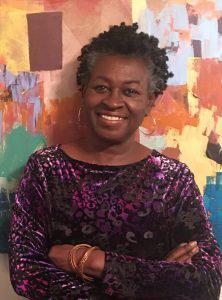
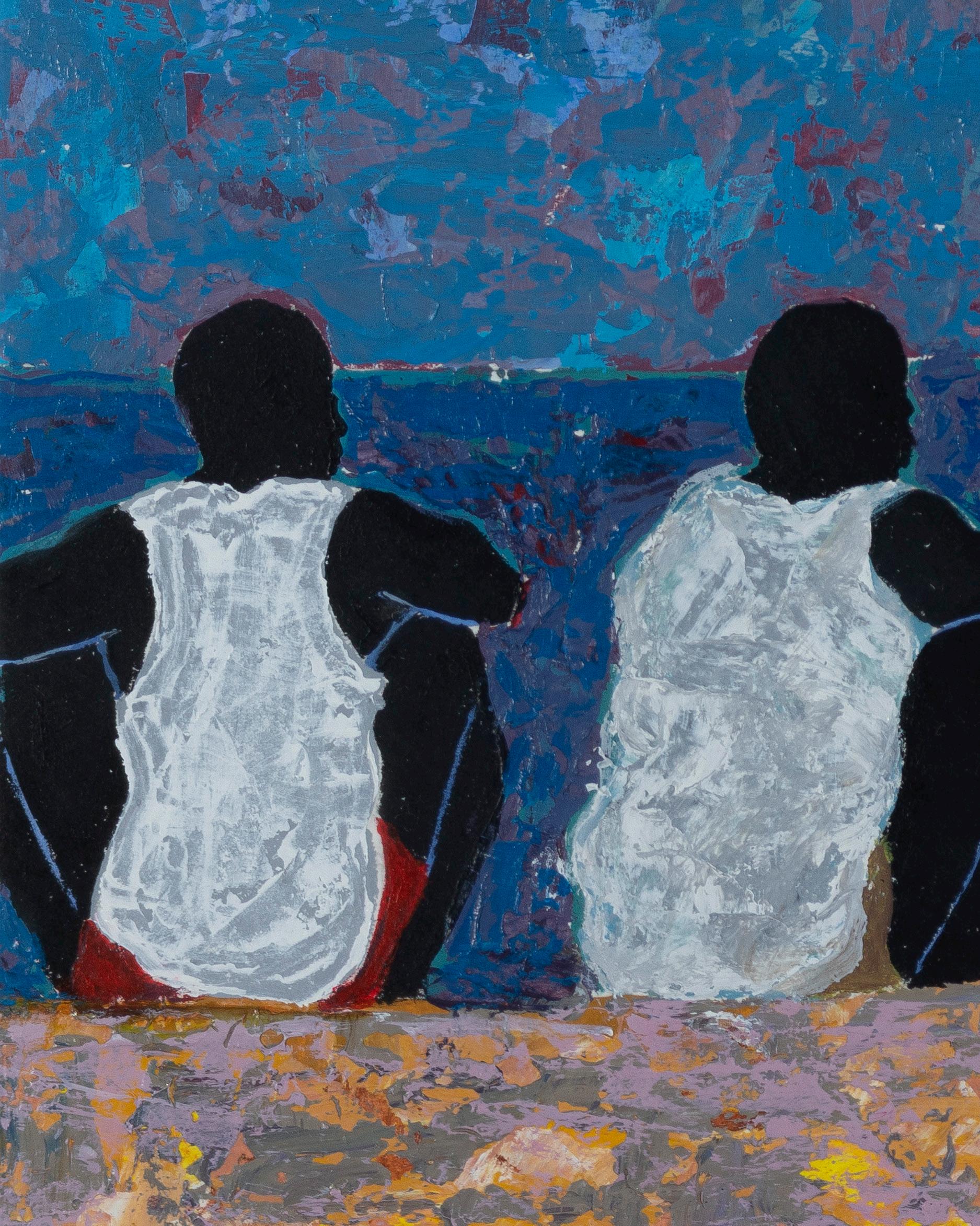
Brooklyn native Vincent Smith documented some of the most compelling events in 20th century America, from the jazz clubs of the New York avant garde music scene, to the burgeoning civil rights movement, and the Black Arts Movement. After a tumultuous youth, Smith found new direction in art, a vocation he completely immersed himself in, both as a student and as a working artist. He took classes at the Brooklyn Museum of Art School and the Art Students League, NY. He traveled to Maine to study on scholar ship at the Skowhegan School of Painting and Sculpture. Smith drew inspiration from African-American artist Jacob Lawrence and was mentored by Lawrence and Romare Bearden.
His first solo show was held at the Brooklyn Museum Art School Gallery in 1955. He participated in numerous prestigious exhibits throughout his career, including at Roko Gallery (NYC), 1955; Market Place Gallery, Harlem, 1956-58; CORE (NYC), 1966; National Academy of Design, 1967; Studio Museum in Harlem, 1969 (one-man); Fisk University, 1970; Pratt Graphics Center, 1972-73; Brooklyn College, 1969; Boston Museum of Fine Arts, 1970; Illinois State
University, 1971; Whitney Museum, 1971. Smith curated the show, Unbroken Circle: Exhibition of African-American Artists of the 1930’s and 1940’s, held at Kenkeleba House, NY in 1986 - of which a majority of the artists make up Melvin Holmes’s collection.
His work can be found in many private and public collections such as The Art Institute of Chicago, MoMA New York, The National Museum of American Art in Washington D.C., The Museum of Fine Arts in Boston, the Detroit Institute of Arts, and Yale University, New Haven.
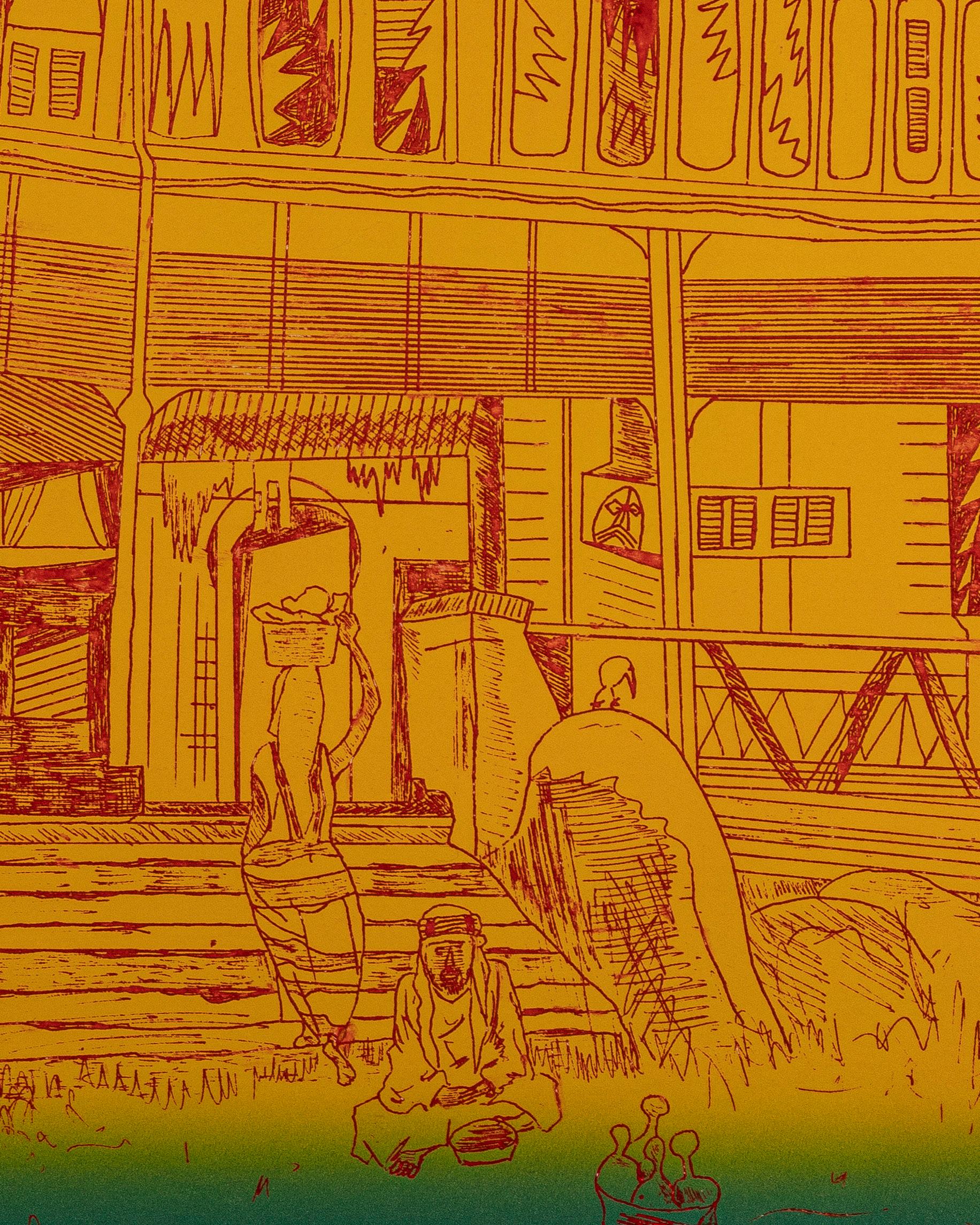
Nelson Steven’s career has spanned over 5 decades and a multitude of media and style, yet has remained consistently grounded in the black experience and his exuberant celebration of color. He began his career painting murals on the walls of jazz clubs in the 1950’s. Stevens received his B.F.A. from Ohio University in 1962, then moved to Cleveland in 1963, where he taught in the public school system and at the Karamu House.
By 1969, he had completed his M.F.A. at Kent State University. Stevens recalled during this period he had to convince his teachers and fellow classmates that Black art, as defined by friend and Black Arts scholar and playwright Larry Neal, existed as its own entity - an art that speaks directly to the needs and aspirations of Black America - an aesthetic equivalent to the Black Power movement. Prior to the movement, there was no literature to back up Black art as an absolute genre. Murals like the Wall of Respect, painted in 1967 by William “Bill” Walker and other members of the Organization of Black American Culture helped change that. Stevens, now a professor at Northern Illinois University, joined the newly formed art collective AFRICOBRA in 1969, along with Wadsworth Jarrell, Jae Jarrell, Jeff Donaldson, Barbara Jones-Hogu, and Gerald Williams and exhibited widely with them.

In addition to his work in the visual arts, Stevens produced the Black culture magazine, Drum at the University of Massachusetts, Amherst, where he was a professor for over 30 years.
Stevens’ work may be found in many private and public collections, including the National Museum of African American History and Culture, Washington D.C.; Schomberg Center for Research in Black Culture, NY; and the Art Institute of Chicago. His work is now being shown in the exhibition, Soul of a Nation: Art in the Age of Black Power, which originated at Tate Modern in London, UK. He currently lives and works in Maryland. In 2019, Stevens work was featured in the solo exhibition, Work from the 60’s to the Present held at Kravets Wehby Gallery, NY.


Allen Stringfellow was born in Champaign, Illinois, the son of a nightclub singer and jazz guitarist. As a teenager, he designed cos tumes for his father’s colleagues and painted religious murals for local churches.
He was an artist who came of age in the Depression, learning his craft at the University of Illinois and at the Art Institute in Milwaukee before perfecting it as a student and printmaking instructor in the South Side Community Art Center. Stringfellow and William Carter, a WPA artist who became his best friend, veered away from social realism. “I wanted to be an artist without a clenched fist in the air,” he says. “I thought being a black artist would be labeling myself, and besides, I was never mad.”
Stringfellow painted pleasant watercolors, exhibiting them at art fairs on the south Side. To make ends meet, he silk-screened store displays for an ad agency. For five years in the 1960s, he ran his own gallery, Walls of Art, where he promoted the artwork of major African American artists, as well as himself.
Stringfellow went to work at Armand Lee in the late 60s, one of Chicago’s foremost cus tom framers and restorers of fine art. This kind of work sparked his interest in creating works on paper and collage. His work often includes religious and jazz imagery.
The gospel theme appears frequently, enlivened by a flutter of choir robes and women in stylish hats. The fresh-air baptis mal, drawn from a bygone era, is a tradition that is recalled in a dazzling collage entitled Red Umbrella Down By the Waterside. ‘That’s one of my signature pieces,’ says the 74 year old artist, ‘there was a version of it in almost every show.’
His work can be found in the collections of Art Institute of Chicago, the University of Illinois, the Chicago Historical Society, DuSable Museum, and the Schomburg Center for Research in Black Culture.
REF: Website of Africanah.Org: Arena for Contemporary African, African-American and Caribbean Art. Text from Essie Green Gallery, New York

Born Ann Graves in the Homewood community of Pittsburgh, Ann became interested in art at an early age. She graduated from South Hills High School in 1952 and went on to study at the Carnegie Institute of Technology (now Carnegie Mellon University) and earn a BFA. She married fellow Homewood native, John Tanksley and they moved to Brooklyn, NY. Tanksley began raising her family before returning to study at the Art Students League, the New School for Social Research (Greenwich Village), and also at Bob Blackburn’s Printmaking Workshop.
Tanksley was an early member of Where We At: Black Women Artists, Inc., a women’s art collective based in New York. She exhibited at the 1972 show, Cookin' and Smokin', at the Weusi-Nyumba Ya Sanaa Gallery in Harlem.
“She uses a glazing technique incorporated with charcoal lines, which enhances a sense of spontaneity and humor.”
Her work is included in the collections of the Johnson Publishing Company (dispersed), Studio Museum in Harlem, National Museum of Women in the Arts, the Hewitt Collection, among others.
Tanksley grew up in Pittsburgh and earned her BFA at the Carnegie Institute of Technology (1956); she also attended the Art Students’ League, Parsons School of Design and Bob Blackburn’s Printmaking Workshop (all in NYC).
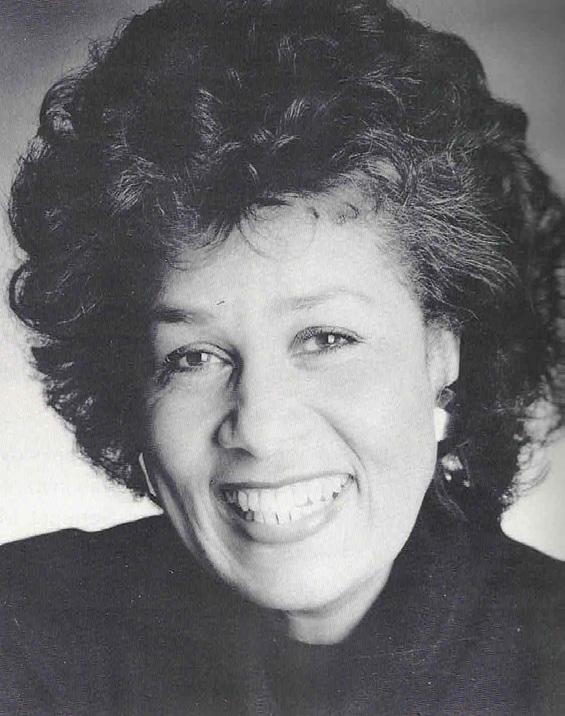

Abstract sculptor, painter, and printmaker, Mildred Thompson was born in Jacksonville Florida. She attended Howard University where she studied under James Porter - the mentorship of whom had a profound effect on her and her work.
Thompson went on to attend the Skowhegan School of Painting and Sculpture in Maine and earned a Max Beckmann Scholarship for study at the Brooklyn Museum School. In 1962, she was also selected for the prestigious MacDowell Colony residency in New Hampshire.
Thompson experienced early success and acclaim for her work in the United States, but due to racial and gender inequalities, decided to relocate to Germany where she taught and exhibited widely throughout Europe. She returned in 1974 when she began a series of artist residencies for the City of Tampa, Howard University, and Spelman College. In addition to her work as an artist and educator, Thompson also served as an associate editor of the publication Art Papers.
Recently, her work was featured in the 2017 exhibition, Magnetic Fields: Expanding American Abstraction, 1960s to Today which originated at the Kemper Museum of Contemporary Art, Kansas City, MO and traveled to the National Museum of Women in the Arts, Washington, DC, and Museum of Fine Arts, St. Petersburg, Florida. In 2019, Spelman College Museum of Fine Art held Mildred Thompson: The Atlanta Years, 1986-2003.


Thrash was born in a former slave cabin in Griffin, Georgia in 1892. He studied art through correspondence school until 1909 when he moved to Chicago. There, he began taking part time classes at the Art Institute and also studied privately with William E. Scott. He resumed full time stud ies after serving in World War I.
Thrash lived an itinerant lifestyle in Boston, Connecticut, and New York, working odd jobs and painting. Eventually, in 1926, he settled in Philadelphia where he studied at the Philadelphia Sketch Club with Earl Hortor. Thrash began experimenting with the aquatint process in the early 1930’s and is credited with later inventing the process of carborundum printing, known as cartograph, with fellow students Hugh Mesibov and Michael Gallagher. He made his debut as an artist in 1931 at the Catherine Street YWCA in Philadelphia, which featured an exhibition of his oil and watercolor paintings. In 1933, his first exhibition of prints was held at the same location.
In 1937, Dox Thrash joined the Federal Arts Project as a printmaker and worked for Philadelphia’s Fine Print Workshop Division producing portraits and urban and rural scenes related to African-American life.
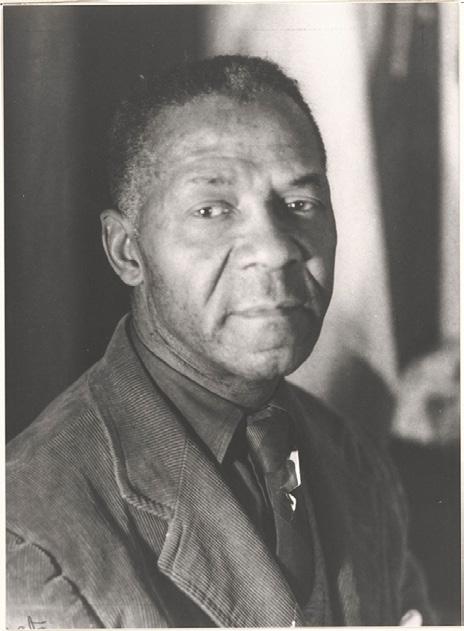
During World War II, he created a series of prints with a patriotic focus. He remained a prominent artist in Philadelphia until his death in 1965. Thrash devoted a great deal of his artistic career to printmaking, and his innovative work in that medium is signifi cant, but he did produce both watercolors and oil paintings throughout his life, and as seen in this image, the results were highly successful.
In 2002, the Pennsylvania Art Museum pre sented a retrospective of his work entitled, Dox Thrash: An African-American Master Printmaker Rediscovered. It featured over 100 of his drawings, watercolors, and prints.
Photo: www.black-artists-in-the-museum. com (in partnership with the Baltimore Museum of Art)
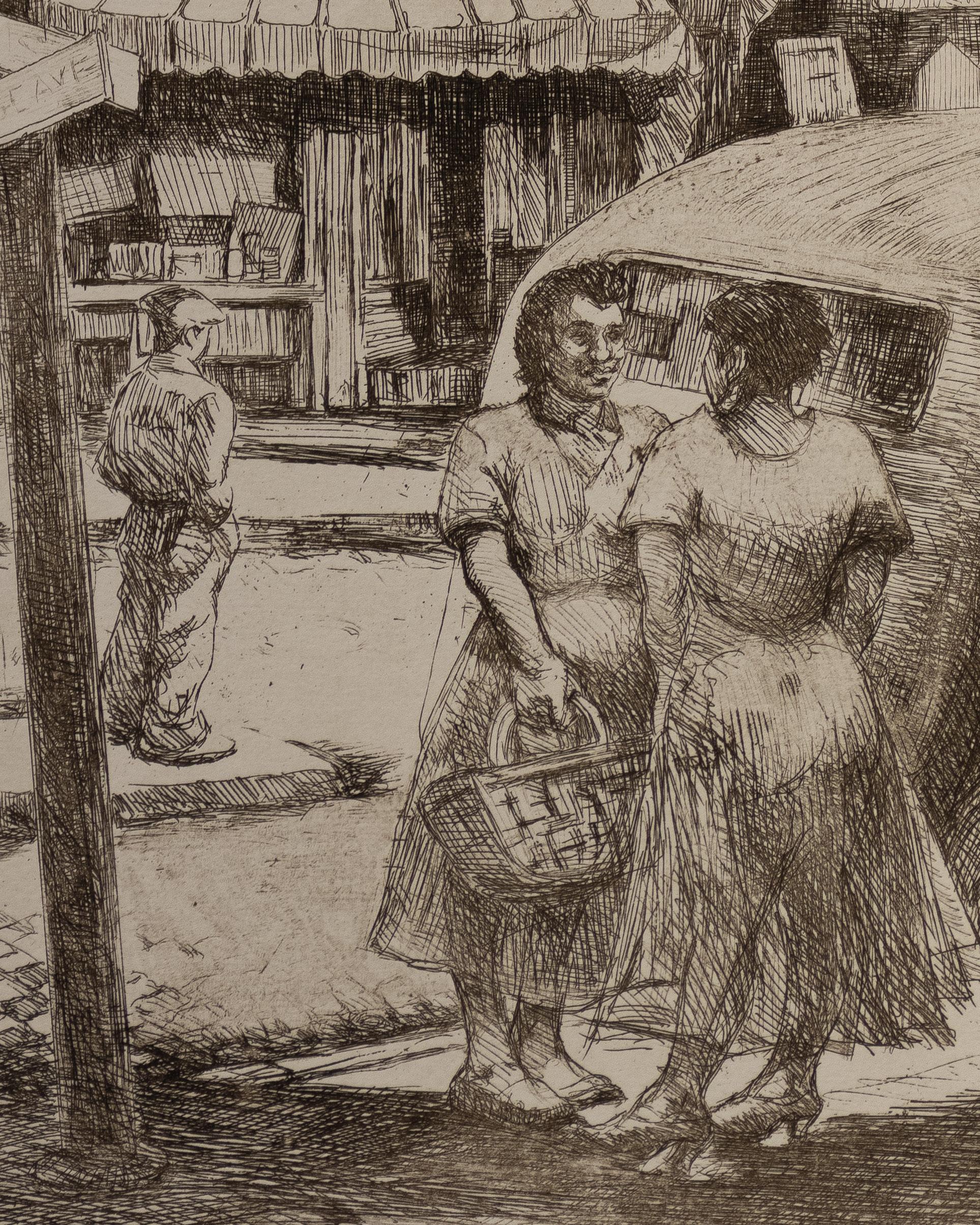
In the late 1960s, Mose Tolliver was forced to retire from his job in a Montgomery, Alabama, furniture factory after a thousandpound crate of marble fell from a forklift and crushed his legs. His former employer encouraged him to start painting, and Tolliver began to create images with house paint on pieces of plywood, Masonite, or old furniture. Unable to stand without crutches, he used to sit on his bed to paint, balancing the board on his knees. Recognition came in the 1980s with a solo show at the Montgomery Museum of Fine Arts, and a folk art exhibition at the Corcoran Gallery, in Washington, D.C. Tolliver is known for his vibrant images of women, fantasy animals, and religious subjects, and he could paint up to ten pictures in one day.
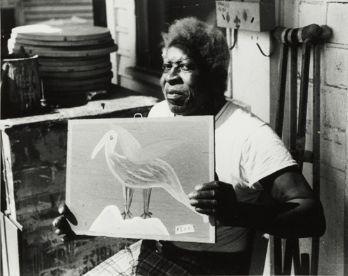
His work has shown extensively in solo and group exhibitons. A few selected exhibitions are, Black Folk Art in America: 1930-1980, Corcoran Gallery of Art, Washington DC, 1982; Free Within Ourselves: AfricanAmerican Artists in the Collection of the National Museum of American Art,
National Museum of American Art, Washington DC; 1992; Crossroads: Spirituality in American Folk Traditions, Owensboro Museum of Fine Art, KY; Black Artists / South, Huntsville Museum of Art, AL, 1979; Souls of Black Folk: The Billy R. Allen Folk Art Collection, Museum of African American Life and Culture, Dallas, TX, 2010.
A retrospective of his work, Pure Paint: A Retrospective of Montgomery’s MOSE “T” was held at the National Center for the Study of Civil Rights and African-American Culture, Alabama State University in 2007.
REF: https://americanart.si.edu/artist/mosetolliver-4831
Photo: Mose Tolliver, about 1990. Photograph by Chuck Rosenak, courtesy of the Chuck and Jan Rosenak research material, ca. 1987-1998, Archives of American Art, Smithsonian Institution

James Van DerZee was a Harlem photog rapher whose studio approach contrasted the photojournalistic style of Gordon Parks and the social realism of Aaron Siskind. His success was largely based on his portraits of middle-class black families in Harlem, which sought to convey a sense of dignity and self assurance in the sitter. It has been said that the successful recipe for a Van DerZee image was equal part authentic pride of the sitter and equal part carefully constructed artifice—courtesy of the photographer.
In 1924, Van DerZee was commissioned as the official photographer of Marcus Garvey and the Universal Negro Improvement Association (UNIA). It was Van DerZee’s responsibility to not simply document the activities of Garvey and the movement, but portray them in a strictly positive light. Van DerZee executed thousands of photographs of meetings and parades, some of which were made into a calendar.
His work is found in the collections of the Smithsonian American Art Museum, Washington D.C.; Museum of Fine Arts, Houston, TX; Williams College Museum of Art, MA; and the J. Paul Getty Museum, Los Angeles, CA, among others.



Walker was born in California, but raised in Atlanta from the age of 13. She studied at the Atlanta College of Art (BFA, 1991) and the Rhode Island School of Art (MFA, 1994). Her work primarily addresses race, gender, and sexuality in graphic terms. She is well-known for her silhouette cut-outs, paintings, prints, installations, in black and white contrast.
In 2007, the Walker Art Center presented the first full-scale museum survey of her work, Kara Walker: My Complement, My Oppressor, My Enemy, My Love. Her work is included in numerous museum permanent collections.
Works from this series may also be found in the collections of the Whitney Museum of American Art (Camptown, 1997) and the Baltimore Museum of Art (Drumstick).

Steve Walker worked in Chicago and studied at the Art Institute of Chicago. He was a popular artist at the South Side Community Art Center. His work was influenced by Norman Rockwell. Walker worked as a commercial graphic artist for Walgreen’s (which is headquartered in the north suburbs of Chicago) until his retirement.
His work is in the collection of Johnson Publishing Company.
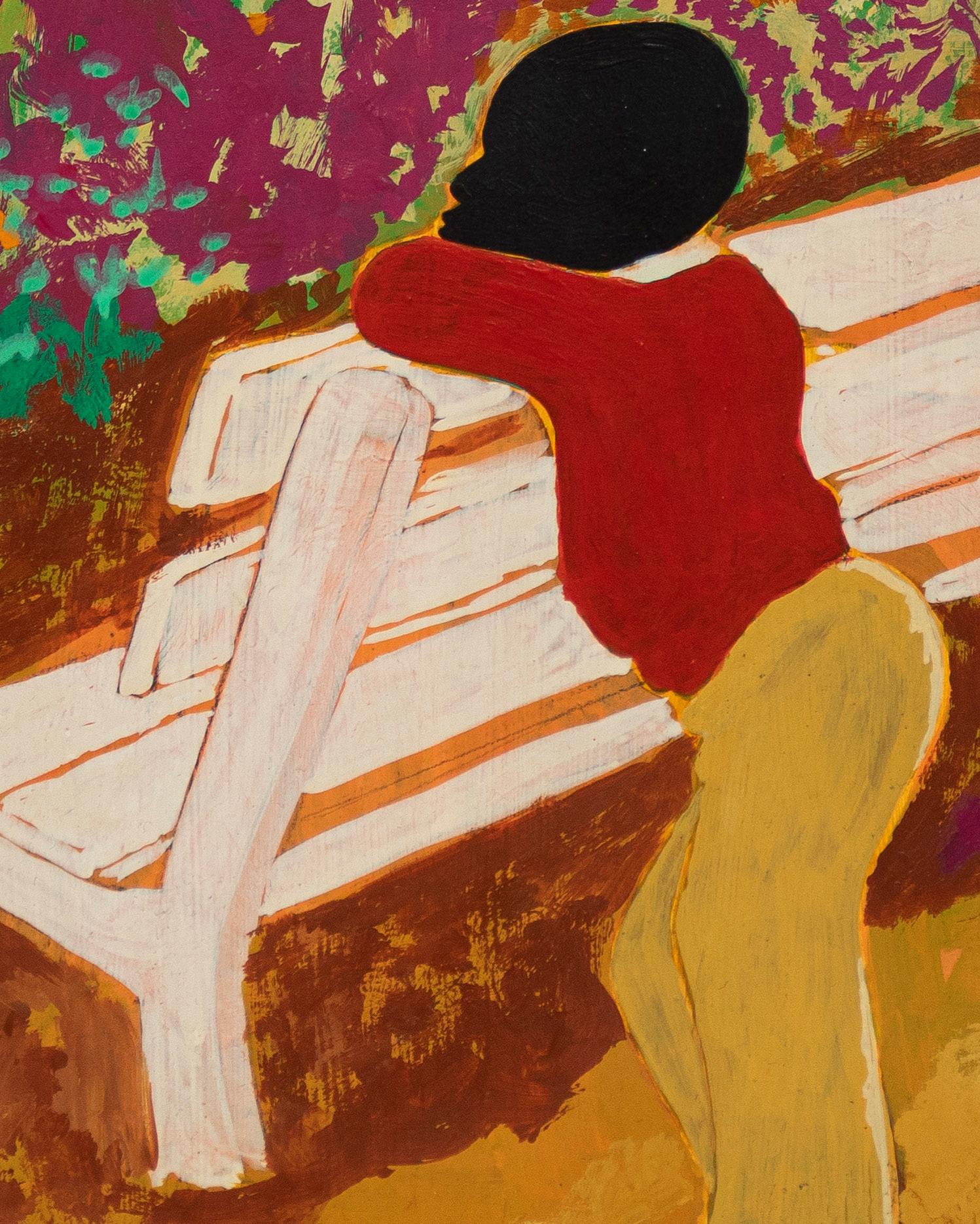
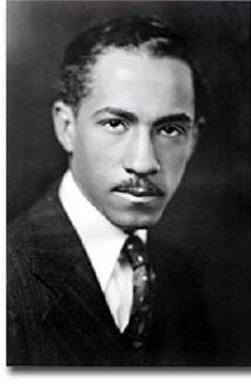
Wells was greatly influenced by African sculptural forms and the work of the German Expressionists, in particular Albrect Durer, Karl Schmidt-Rottluff, Otto Mueller, and Emile Nolde; Cubists, and the Fauves. He worked in a variety of media at this time, although printmaking was a favorite. He created block prints for the publications Survey Graphic, Opportunity, and Plays and Pageants of Negro Life. His work was included in an exhibition of International Modernists in April 1929 at the New Art Circle Gallery owned by J.B. Neumann. Wells was the recipient of a Harmon Foundation Gold Medal in 1931 for his painting, Flight Into Egypt, and in 1933 won a first prize at the Harmon Foundation for a woodcut titled Escape of the Spies from Canaan
He received a position at Howard University in the crafts department - teaching clay modeling, ceramics, sculpture, metal , and block printing. Wells spent two years making a case to move his position and linoleum printing to the College of Fine Arts. The print as an art form, did not yet garner much respect. It was considered a lesser art form to painting and sculpting, but Wells appreciated it for its accessibility.
During the Depression, Wells served as the director of what was to become the Harlem Community Art Center, teaching classes for children and adults. Palmer Hayden and Georgette Seabrooke were his
assistants. At this time, he dedicated himself entirely to printmaking. Wells continued to hone his technical ability by working with Frank Nankivell and spent a year working in Stanley Hayter’s Atelier 17, then the most innovative center of etching and printmaking in the nation.
Wells continued to paint and create prints throughout the rest of his career. In 1961, the Smithsonian Institution held a solo exhibition of his prints, and another solo exhibition was held at Fisk University in 1973. The Washington Project for the Arts presented an exhibition of his oils and prints in 1986. The show was also presented at the Studio Museum in Harlem.
Photo: New York Public Library, Schomburg Center for Research in Black Culture
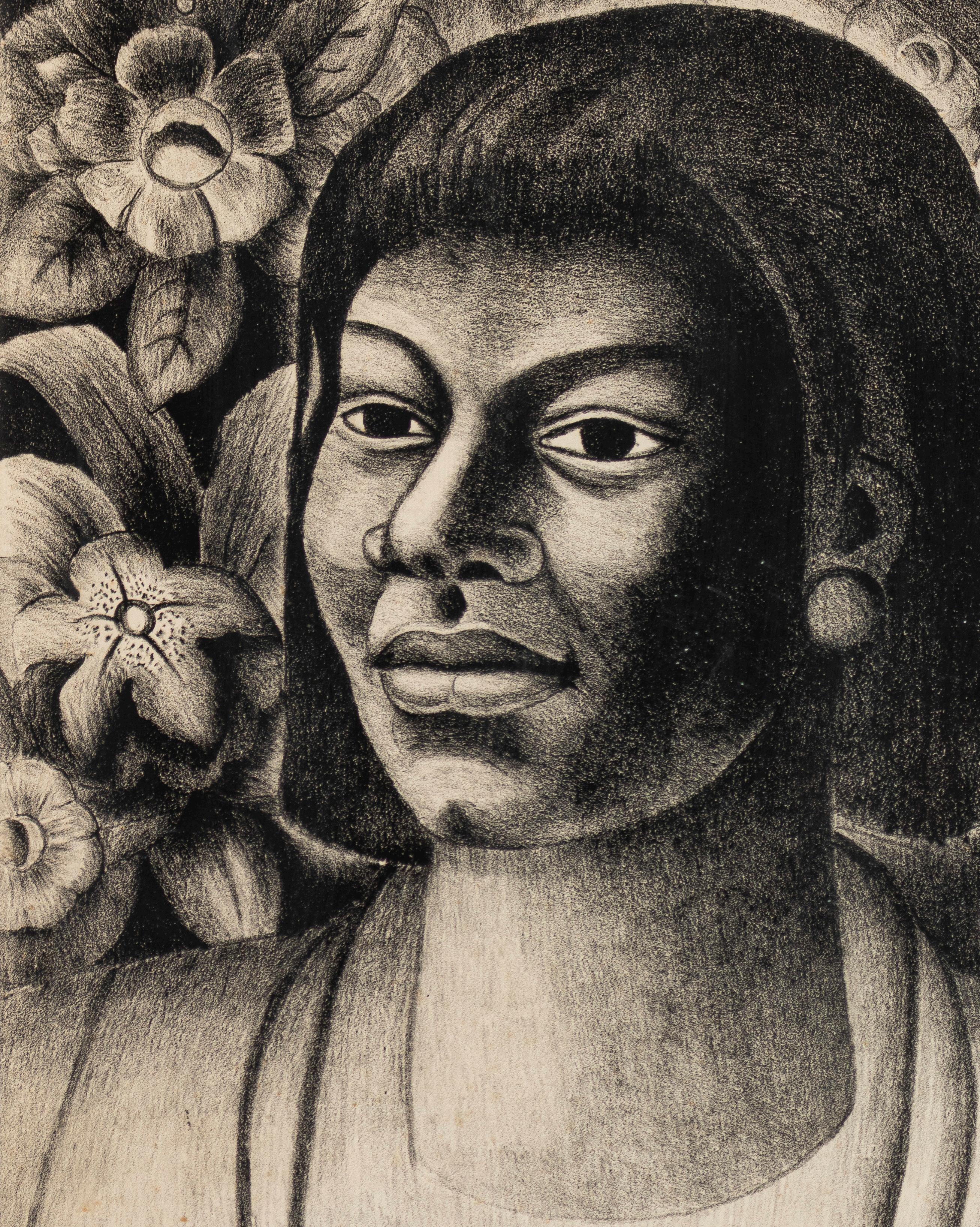
Born in 1918 in Chicago, Charles White was initially an introverted child, preferring to retreat into a world of reading and drawing. As he grew older, he became more outspoken, influenced by Alain Locke’s The New Negro. As a student at Englewood High School, alongside other future notables such as Margaret Burroughs, Eldzier Cortor, and Charles Sebree, he often clashed with his teachers over their whitewashing of historical subjects. He joined George Neal’s Art Crafts Guild and gathered at the studio of Morris Topchevsky, where he was able to further explore his views of art, politics, and the role of the African American in society.
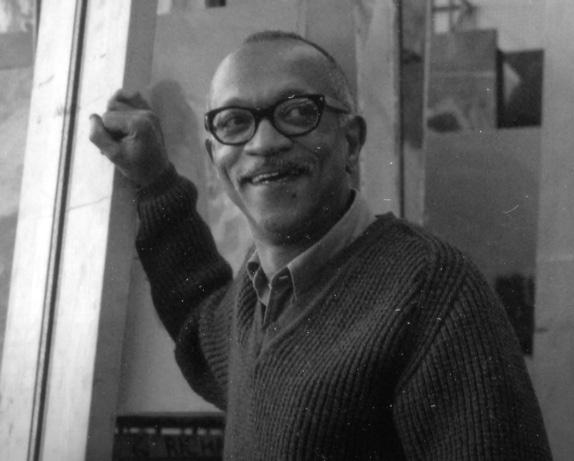
White graduated high school in 1937 and went on to study at the School of the Art Institute of Chicago. He was subsequently hired by the Illinois Art Project in the easel division, but transferred to the mural division, where he worked with Edward Millman and Mitchell Siporin. His first major mural, Five Great American Negroes, was completed in 1940. His work was also exhibited at the American Negro Exposition, winning several awards.
White married Elizabeth Catlett in 1941 after meeting her at the South Side Community Art Center, and the pair moved to New Orleans where they both taught at Dillard
University. Two consecutive Rosenwald scholarships allowed him to study lithography at the Art Student’s League of New York with Harry Sternberg, as well as travel the Southern United States. He used this opportunity to observe and paint black farmers and laborers for his mural, The Contribution of the Negro to the Democracy of America.
Catlett and White relocated to Mexico where they both became involved with the Taller Grafica de Popular. After their divorce, White returned to New York City. His work retained a figurative style which stood in stark contrast to the burgeoning abstract movement occurring at the time. He used drawings, linocuts, and woodcuts to celebrate the historical figures who resisted slavery, as well as ordinary African Americans struggling amid great social injustice in a post-slavery America. Despite their small size, these works conveyed the power of a mural.
In New York in the 1940s and early 1950s, White showed his work at the progressive ACA Gallery and was a prominent member of African American and leftist artist communities. White moved to Southern California in 1956, and his career flourished as he embraced drawing and printmaking more fully, pushing at the boundaries of his media while continuing to engage with civil rights and equality. Despite his rejection of the prevailing style of Abstract Expressionism and ongoing use of an expressive figuration, he found critical acclaim in the United States and abroad.
White was the second African American to be inducted into the National Academy of Art and Design in 1975. Charles White: A Retrospective was held at the Art Institute of Chicago in 2018. This exhibition traveled to the Museum of Modern Art and the Los Angeles County Museum of Art, 2019.

Wiley received his BFA from the San Francisco Art Institute and an MFA from Yale University in 2001 and has since exhibited internationally. He became an artist-inresidence at the Studio Museum in Harlem in 2002. His paintings and sculptures are included in numerous private and institutional collections. In 2018, Wiley painted Barack Obama’s presidential portrait. His works draw from the compositions of the Old Masters, with the subjects being replaced with people of color.
In St. Francis of Adelaide, Wiley places the black male youth in the guise of a Christian saint, creating a counter narrative of beauty, humanity, and strength that challenges racist stereotypes. This neoclassical-style bust was influenced by Jean-Auguste-Dominique Ingres’s stained-glass window, Saint Francis of Adelaide, in the Chapel of Saint Ferdinand, Paris. The subject is reminiscent of a philosopher in Rafael’s “School of Athens”: the athletic young man holds a book, scepter, and replacing a wine jug, a cognac bottle.



Painter, printmaker, and sculptor, Walter Williams studied art at the Brooklyn Museum Art School under Ben Shahn, Reuben Tam, and Gregoria Prestopino. He also spent a summer studying art at the Skowhegan School of Painting and Sculpture in Maine. In 1955, Williams won a Whitney Fellowship that permitted him to work and travel in Mexico. He also won a National Arts and Letters Grant in 1960 and the Silvermine Award in 1963.
Williams moved to Copenhagen, Denmark in the 1960’s to escape the discrimination of the United States, While he was in Copenhagen, he created a series of colorful woodcuts of black children playing in fields of flowers. He returned to the United States to serve as artist-in-residence at Fisk University in Nashville, Tennessee. Here, he completed a body of work informed by the experiences of being an African American living in the South. Walter H. Williams died in Copenhagen in June1988.
Williams’ work has been featured in major exhibitions including, An Ocean Apart: American Artists Abroad, Studio
Museum in Harlem, NY, 1983; Unbroken Circle: Exhibition of African American Artists of the 1930s and 1940s, Kenkeleba House, NY, 1986; Black Motion, SCLC Black Expo 72, Los Angeles, CA; Two Centuries of Black American Art, Los Angeles County Museum of Art, 1972; and 10 American Negro Artists Living and Working in Europe: paintings, prints, drawings, and collages, Den Frie, Copenhagen, Denmark, 1964.
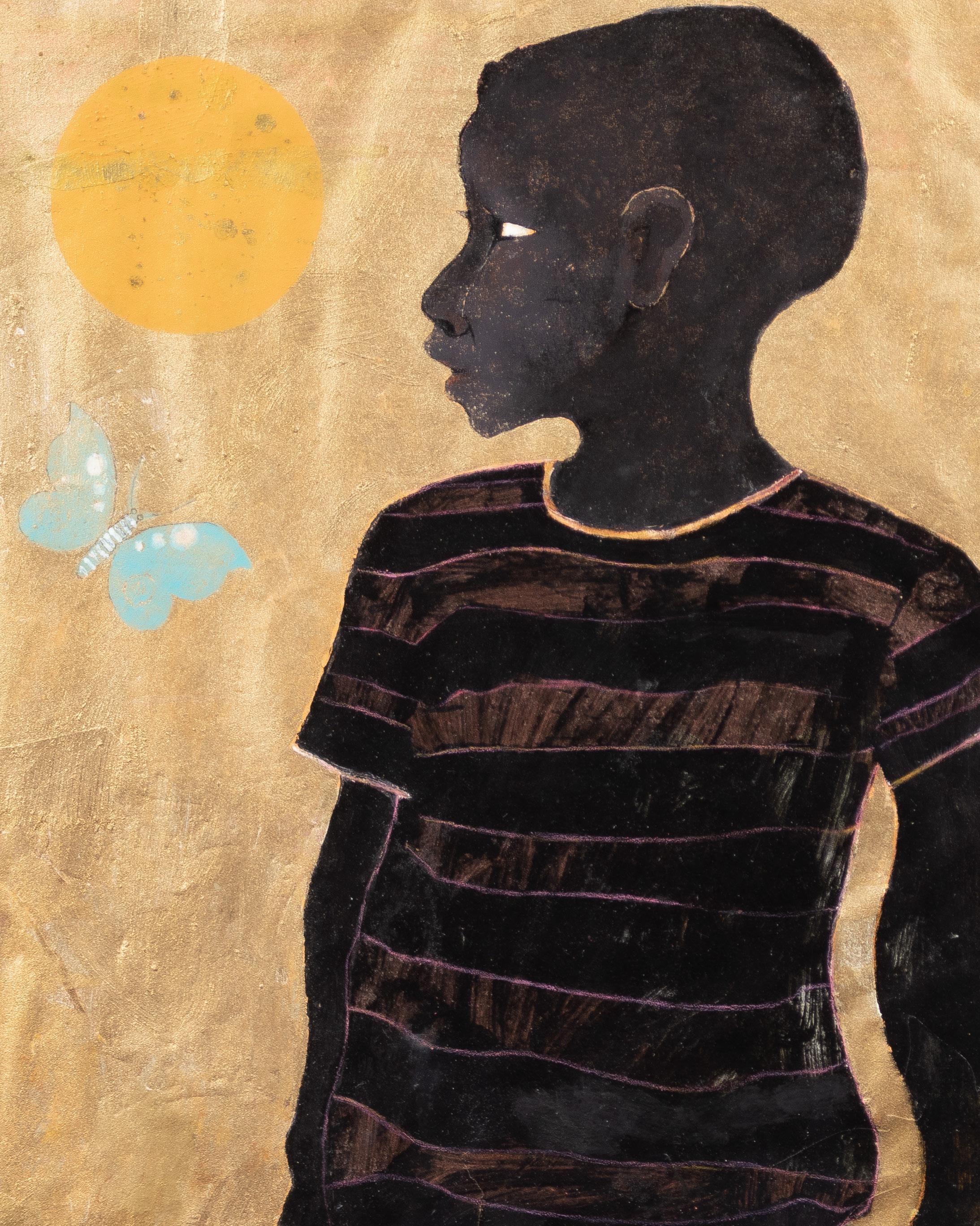
Ellis Wilson was born in Mayfield, Kentucky in 1899. After finishing high school, he left his hometown for Chicago to study commercial art at the School of the Art Institute of Chicago. He joined the Chicago Art League in 1925 - members which included, Richmond Barthé, Charles Dawson and William McKnight Farrow. Wilson’s earliest works were largely academic in nature - still lifes and landscapes that revealed little about the artist.
Shy and quiet, Wilson refrained from taking any political stance throughout his career as an artist, however, he did become motivated by Alain Locke’s speech at The Negro in Art exhibition in Chicago in 1927 to begin creating works that were representative of African American life. Wilson moved to Harlem and then settled in Greenwich Village. He continued to work full time while painting and studied portraiture with Xavier J. Barile on the weekends. His work was featured, most notably, at the Harmon Foundation’s 1930 and 1933 exhibitions as well as Augusta Savage’s Salon of Contemporary Art (1934) and the American Negro Exposition (1940). He was also a member of the Harlem Artists Guild. In 1935, he was employed by the Federal Arts Project mapping division, creating highly detailed geographical dioramas of New York City.
Wilson began applying for a Guggenheim Fellowship in 1939, so he could fully commit to painting. His personal style was evolving,
taking inspiration from contemporaries Jacob Lawrence, Horace Pippin, and Aaron Douglas. When he received his fellowships in 1944 and 1945, he traveled through the American South - Graves County, Kentucky; Georgia; South Carolina; and the sea islands, painting social realist scenes of African Americans and their daily life. Art historian and critic Justus Bier was able to secure Wilson a one man show at the Speed Museum in Louisville, Kentucky based on the merits of these works.
His second one man show in 1951 at the Contemporary Arts Gallery featured works from his first visit to Haiti, where he made subsequent trips to paint. A retrospective of his work was held in 1971 at Fisk University in conjunction with William Artis. His work is found in the collections of Howard University, Studio Museum on Harlem, National Museum of American Art, and the Amsted Research Center.
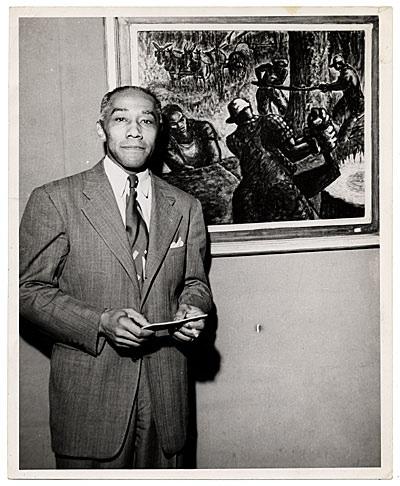

Life is a circle and I take pleasure in salvaging the old to create something new, asking the viewer to recognize the past while appreciating the here and now. My paintings are research-based collages and layers which are fabricated in a variety of ways. I highlight impactful images and play close attention to minute details.
Some paintings start with hand cut museum board blocks that are painted, embellished, scratched and merged together. I used an assortment of found objects, old books, aged photographs, buttons, letters, vintage newspapers and rusty metal combined with an assortment of artistic mediums.
The meaning of the attached elements often becomes clearer to me as they are assembled. The result is a continual search for balance between spontaneity and historical relevance. My richly layered work invites viewers to step in closer, explore details, and create or reflect on their own stories of connection. Because of the multi-layering it is my expectation that the paintings become thoughtful, spiritual, interesting and sensitive creations.
Curtis Woody studied commercial art at Thomas Nelson Community College in Hampton, VA. He began exhibiting his “mixed media quilt paintings” in the 1980’s and has been featured in Images: A Celebration of African American History, Marlboro Gallery, Prince George's Community College, Largo, MD, 1993 where he received first prize and Emancipation: Meditations on Freedom, District of Columbia Art Center, 2014, among many others. He is currently represented by Zenith Gallery, Washington DC and Gallery Serengeti, Capitol Heights, MD.
REF: Zenith Gallery, https://www. zenithgallery.com/artists/curtis-woody/ and Curtis Woody’s resume.


Purvis Young was an entirely selfeducated outsider artist from the Overtown neighborhood of Miami whose work was characterized by a blending of collage and paint applied to found surfaces. He was born into poverty in 1943. He never finished high school, but read whatever he could get his hands on at the library every possible moment. After a stint in prison in the 1960’s, he became inspired by Vietnam War demonstrations and protest art, especially the Wall of Respect mural in Chicago, painted by members of the Black Arts Movement. He created his own mural along a deserted stretch of Goodbread Alley in Overtown, tacking up his own paintings. After two years, his work began to draw attention from tourists, the media, and eventually, the owner of the Miami Art Museum, who briefly became Young’s patron.
Young’s magic realist paintings featured primitive calligraphic lines, often crowds of angels watching over turbulent cityscapes. His personal iconography included horses, which represented freedom, angels and large floating heads which represented hope and the goodness inherent in people, and round blue shapes which represented an all seeing establishment.
His intriguing personal journey was the subject of the documentary, Purvis of Overtown, in 2006. The exhibition, 30 Americans, at the Corcoran Gallery of Art, Washington D.C. featured his work in 2012. Young’s work may be found in the collections of the New Orleans Museum of Art, the High Museum of Art, the Smithsonian American Art Museum, and the Philadelphia Museum of Art.
